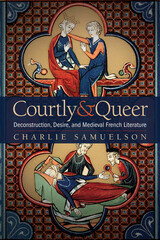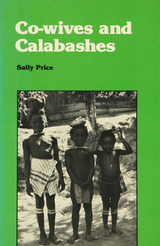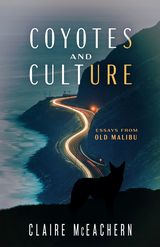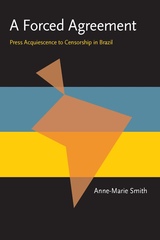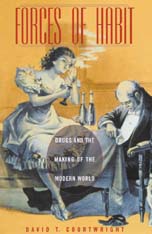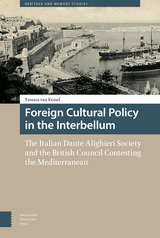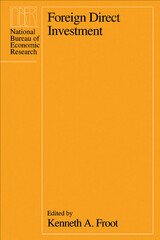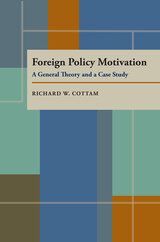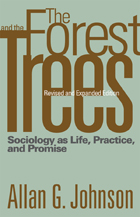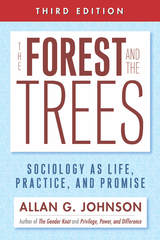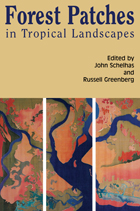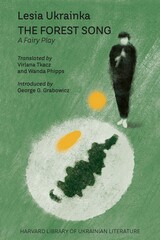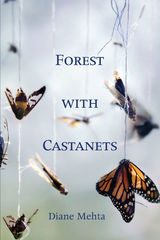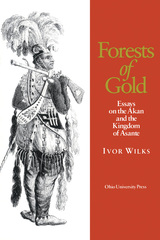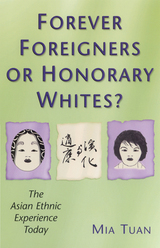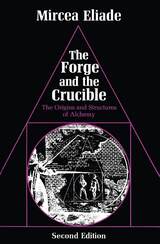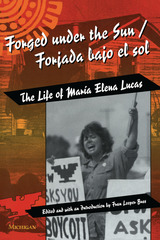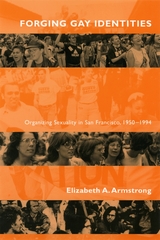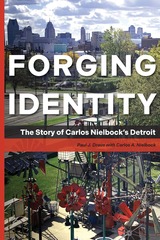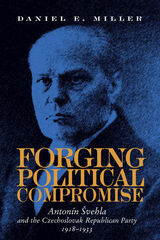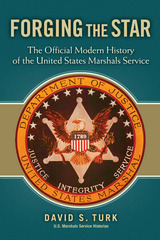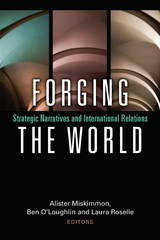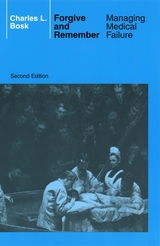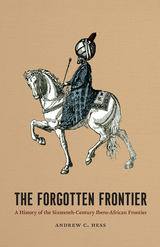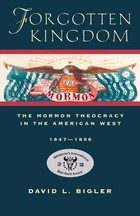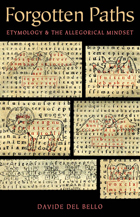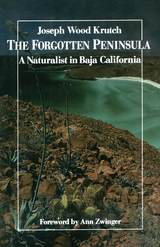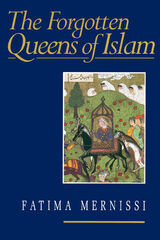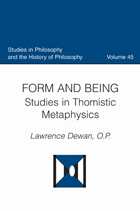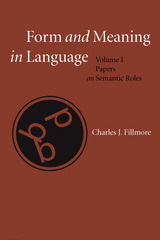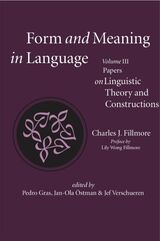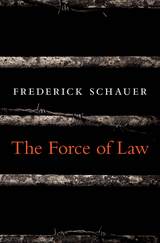 The Force of Law
Frederick Schauer
Harvard University Press, 2014 Many legal theorists maintain that laws are effective because we internalize them, obeying even when not compelled to do so. In a comprehensive reassessment of the role of force in law, Frederick Schauer disagrees, demonstrating that coercion, more than internalized thinking and behaving, distinguishes law from society’s other rules.
Reinvigorating ideas from Jeremy Bentham and John Austin, and drawing on empirical research as well as philosophical analysis, Schauer presents an account of legal compliance based on sanction and compulsion, showing that law’s effectiveness depends fundamentally on its coercive potential. Law, in short, is about telling people what to do and threatening them with bad consequences if they fail to comply. Although people may sometimes obey the law out of deference to legal authority rather than fear of sanctions, Schauer challenges the assumption that legal coercion is marginal in society. Force is more pervasive than the state’s efforts to control a minority of disobedient citizens. When people believe that what they should do differs from what the law commands, compliance is less common than assumed, and the necessity of coercion becomes apparent.
Challenging prevailing modes of jurisprudential inquiry, Schauer makes clear that the question of legal force has sociological, psychological, political, and economic dimensions that transcend purely conceptual concerns. Grappling with the legal system’s dependence on force helps us understand what law is, how it operates, and how it helps organize society.
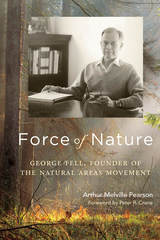 Force of Nature: George Fell, Founder of the Natural Areas Movement
Arthur Melville Pearson
University of Wisconsin Press, 2020 Efforts to preserve wild places in the United States began with the allure of scenic grandeur: Yosemite, Yellowstone, the Grand Canyon. But what about the many significant natural sites too small or fragile to qualify as state or federal parks? George Fell was determined to save these places, too—prairie remnants, upland forests, sedge meadows and fens, ocean beaches, desert canyons, mountain creeks, bogs, caves and gorges, and the full spectrum of other habitats essential to biological diversity.
Force of Nature reveals how a failed civil servant, with few assets apart from his tenacity and vision, initiated the natural areas movement. In the boom years following World War II, as undeveloped lands were being mined, drained, or bulldozed, Fell transformed a loose band of ecologists into The Nature Conservancy, drove the passage of the influential Illinois Nature Preserves Act, and helped spark allied local and national conservation organizations in the United States and beyond.
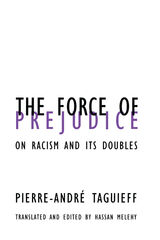 Force Of Prejudice: On Racism and Its Doubles
Pierre-Andre Taguieff
University of Minnesota Press, 2001 Can humanity escape segregating behavior or master the tendency to exclusion? Where does the force of prejudice come from? How might one conceive the philosophical foundations of an effective antiracism? Pursuing these questions, Pierre-André Taguieff puts forward a powerful thesis: that racism has evolved from an argument about races, naturalizing inequality between "biologically" defined groups on the basis of fear of the other, to an argument about cultures, naturalizing historical differences and justifying exclusion. Correspondingly, he shows how antiracism must adopt the strategy that fits the variety of racism it opposes. Looking at racial and racist theories one by one and then at their antiracist counterparts, Taguieff traces an intellectual genealogy of differentialist and inegalitarian ways of thinking. Already viewed as an essential work of reference in France, The Force of Prejudice is an invaluable tool for identifying and understanding both racism and its antidote in our day.
 The Force of the Virtual: Deleuze, Science, and Philosophy
Peter Gaffney
University of Minnesota Press, 2010 Gilles Deleuze once claimed that “modern science has not found its metaphysics, the metaphysics it needs.” The Force of the Virtual responds to this need by investigating the consequences of the philosopher’s interest in (and appeal to) “the exact sciences.” In exploring the problematic relationship between the philosophy of Deleuze and science, the original essays gathered here examine how science functions in respect to Deleuze’s concepts of time and space, how science accounts for processes of qualitative change, how science actively participates in the production of subjectivity, and how Deleuze’s thinking engages neuroscience. All of the essays work through Deleuze’s understanding of the virtual—a force of qualitative change that is ontologically primary to the exact, measurable relations that can be found in and among the objects of science. By adopting such a methodology, this collection generates significant new insights, especially regarding the notion of scientific laws, and compels the rethinking of such ideas as reproducibility, the unity of science, and the scientific observer. Contributors: Manola Antonioli, Collège International de Philosophie (Paris); Clark Bailey; Rosi Braidotti, Utrecht U; Manuel DeLanda, U of Pennsylvania; Aden Evens, Dartmouth U; Gregory Flaxman, U of North Carolina; Thomas Kelso; Andrew Murphie, U of New South Wales; Patricia Pisters, U of Amsterdam; Arkady Plotnitsky, Purdue U; Steven Shaviro, Wayne State U; Arnaud Villani, Première Supérieure au Lycée Masséna de Nice.
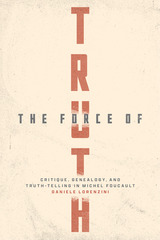 The Force of Truth: Critique, Genealogy, and Truth-Telling in Michel Foucault
Daniele Lorenzini
University of Chicago Press, 2023 A groundbreaking examination of Michel Foucault's history of truth.
Many blame Michel Foucault for our post-truth and conspiracy-laden society. In this provocative work, Daniele Lorenzini argues that such criticism fundamentally misunderstands the philosopher’s project. Foucault did not question truth itself but what Lorenzini calls “the force of truth,” or how some truth claims are given the power to govern our conduct while others are not. This interest, Lorenzini shows, drove Foucault to articulate a new ethics and politics of truth-telling precisely in order to evade the threat of relativism. The Force of Truth explores this neglected dimension of Foucault’s project by putting his writings on regimes of truth and parrhesia in conversation with early analytic philosophy and by drawing out the “possibilizing” elements of Foucault’s genealogies that remain vital for practicing critique today.
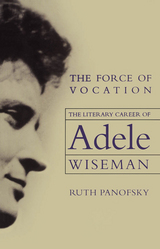 The Force of Vocation: The Literary Career of Adele Wiseman
Ruth Panofsky
University of Manitoba Press, 2006 Adele Wiseman was a seminal figure in Canadian letters. Always independent and wilful, she charted her own literary career, based on her unfailing belief in her artistic vision. In The Force of Vocation, the first book on Wiseman's writing life, Ruth Panofsky presents Wiseman as a writer who doggedly and ambitiously perfected her craft, sought a wide audience for her work, and refused to compromise her work for marketability.Based on previously unpublished archival material and personal interviews with publishers, editors, and writers, The Force of Vocation charts Wiseman's career from her internationally acclaimed first novel, The Sacrifice, through her near career-ending decisions to move into drama and non-fiction, to her many years as a dedicated mentor to other writers. In the process, Panofsky presents a remarkable and compelling story of the intricate negotiations and complex relationships that exist among authors, editors, and publishers.
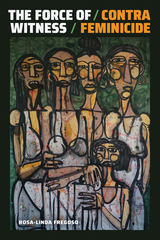 The Force of Witness: Contra Feminicide
Rosa-Linda Fregoso
Duke University Press, 2023 In The Force of Witness Rosa-Linda Fregoso examines the contra feminicide movement in Mexico and other feminist efforts to eradicate gender violence. Drawing on interviews, art, documentaries, and her years of activism, Fregoso traces the micro and macro scales of misogyny and the patterns of state complicity with gender violence. She shows how different forms of witnessing—from activist-mothers’ bearing witness to the memories of their daughters and expert witnesses in court cases to communal witnessing and a scholar-activist-citizen witnessing her own actions—are key to resisting feminicidal violence. Fregoso situates these forms of witness in the histories, contexts, structures, bodies, and intersectional struggles they emerge from. By outlining the complexities of feminicidal violence in relation to witnessing processes, Fregoso challenges the notion of witness as an individual or autonomous subject inscribed solely in the legal or religious arenas. Rather, she theorizes witness as a force of collectivity and a constellation of multiple social locations and intersectional practices that work together to abolish feminicidal violence.
A Forced Agreement: Press Acquiescence to Censorship in Brazil
Anne-Marie Smith
University of Pittsburgh Press, 1997 During much of the military regime in Brazil (1964-1985), an elaborate but illegal system of restrictions prevented the press from covering important news or criticizing the government. In this intriguing new book, Anne-Marie Smith investigates why the press acquiesced to this system, and why this state-administered system of restrictions was known as “self-censorship.”
Smith argues that it was routine, rather than fear, that kept the lid on Brazil's press. The banality of state censorship-a mundane, encompassing set of automatically repeated procedures that functioned much like any other state bureaucracy-seemed impossible to circumvent. While the press did not consider the censorship legitimate, they were never able to develop the resources to overcome censorship's burdensome routines.
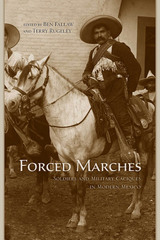 Forced Marches: Soldiers and Military Caciques in Modern Mexico
Edited by Ben Fallaw and Terry Rugeley
University of Arizona Press, 2012 Forced Marches is a collection of innovative essays that analyze how the military experience molded Mexican citizens in the years between the initial war for independence in 1810 and the consolidation of the revolutionary order in the 1940s. The contributors—well-regarded scholars from the United States and the United Kingdom—offer fresh interpretations of the Mexican military, caciquismo, and the enduring pervasiveness of violence in Mexican society. Employing the approaches of the new military history, which emphasizes the relationships between the state, society, and the “official” militaries and “unofficial” militias, these provocative essays engage (and occasionally do battle with) recent scholarship on the early national period, the Reform, the Porfiriato, and the Revolution.
When Mexico first became a nation, its military and militias were two of the country’s few major institutions besides the Catholic Church. The army and local provincial militias functioned both as political pillars, providing institutional stability of a crude sort, and as springboards for the ambitions of individual officers. Military service provided upward social mobility, and it taught a variety of useful skills, such as mathematics and bookkeeping.
In the postcolonial era, however, militia units devoured state budgets, spending most of the national revenue and encouraging locales to incur debts to support them. Men with rifles provided the principal means for maintaining law and order, but they also constituted a breeding-ground for rowdiness and discontent. As these chapters make clear, understanding the history of state-making in Mexico requires coming to terms with its military past.
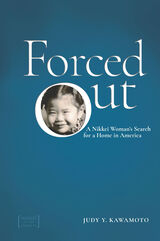 Forced Out: A Nikkei Woman's Search for a Home in America
Judy Y. Kawamoto
University Press of Colorado, 2020 Forced Out: A Nikkei Woman’s Search for a Home in America offers insight into “voluntary evacuation,” a little-known Japanese American experience during World War II, and the lasting effects of cultural trauma. Of the roughly 120,000 people forced from their homes by Executive Order 9066, around 5,000 were able to escape incarceration beforehand by fleeing inland. In a series of beautifully written essays, Judy Kawamoto recounts her family’s flight from their home in Washington to Wyoming, their later moves to Montana and Colorado, and the influence of those experiences on the rest of her life. Hers is a story shared by the many families who lost everything and had to start over in often suspicious and hostile environments.
Kawamoto vividly illustrates the details of her family’s daily life, the discrimination and financial hardship they experienced, and the isolation that came from experiencing the horrors of the 1940s very differently than many other Japanese Americans. Chapters address her personal and often unconscious reactions to her parents’ trauma, as well as her own subsequent travels around much of the world, exploring, learning, enjoying, but also unconsciously acting out a continual search for a home.
Showing how the impacts of traumatic events are collective and generational, Kawamoto draws
interconnections between her family’s displacement and later aspects of her life and juxtaposes the impact of her early experiences and questions of identity, culture, and assimilation. Forced Out will be of great interest to the general reader as well as students and scholars of ethnic studies, Asian American studies, history, education, and mental health. 2022 Asian/Pacific American Award for Literature, Honor Title, Adult Non-Fiction Literature
2022 Evans Handcart Award Winner
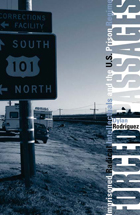 Forced Passages: Imprisoned Radical Intellectuals and the U.S. Prison Regime
Dylan Rodríguez
University of Minnesota Press, 2006 More than two million people are currently imprisoned in the United States, and the nation’s incarceration rate is now the highest in the world. The dramatic rise and consolidation of America’s prison system has devastated lives and communities. But it has also transformed prisons into primary sites of radical political discourse and resistance as they have become home to a growing number of writers, activists, poets, educators, and other intellectuals who offer radical critiques of American society both within and beyond the prison walls.
In Forced Passages, Dylan Rodríguez argues that the cultural production of such imprisoned intellectuals as Mumia Abu-Jamal, Angela Davis, Leonard Peltier, George Jackson, José Solis Jordan, Ramsey Muniz, Viet Mike Ngo, and Marilyn Buck should be understood as a social and intellectual movement in and of itself, unique in context and substance. Rodríguez engages with a wide range of texts, including correspondence, memoirs, essays, poetry, communiqués, visual art, and legal writing, drawing on published works by widely recognized figures and by individuals outside the public’s field of political vision or concern. Throughout, Rodríguez focuses on the conditions under which imprisoned intellectuals live and work, and he explores how incarceration shapes the ways in which insurgent knowledge is created, disseminated, and received.
More than a series of close readings of prison literature, Forced Passages identifies and traces the discrete lineage of radical prison thought since the 1970s, one formed by the logic of state violence and by the endemic racism of the criminal justice system.
Dylan Rodríguez is assistant professor of ethnic studies at the University of California, Riverside.
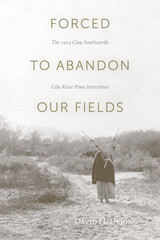 Forced to Abandon Our Fields: The 1914 Clay Southworth Gila River Pima Interviews
David H. DeJong
University of Utah Press, 2011 During the nineteenth century, upstream diversions from the Gila River decreased the arable land on the Gila River Indian Reservation to only a few thousand acres. As a result the Pima Indians, primarily an agricultural people, fell into poverty. Many Pima farmers and leaders lamented this suffering and in 1914 the United States Indian Irrigation Service assigned a 33-year-old engineer named Clay “Charles” Southworth to oversee the Gila River adjudication. As part of that process, Southworth interviewed 34 Pima elders, thus putting a face on the depth of hardships facing many Indians in the late nineteenth century. Southworth’s interviews fell into obscurity until recently, when they were rediscovered by David DeJong. The interviews cover decades of Pima history and reveal the nexus between upstream diversions and Pima economy, agriculture, water use, and water rights. In Forced to Abandon Our Fields, DeJong provides the historical context for these interviews; transcripts of the interviews provide first-hand descriptions of both the once-successful Pima agricultural economy and its decline by the early twentieth century. These interviews suggest that it was not the triumph of Western civilization that displaced the Pima agricultural economy but the application of a philosophy of economic liberalism that prevented the Pima from building on their previous successes.
 Forced to Care: Coercion and Caregiving in America
Evelyn Nakano Glenn
Harvard University Press, 2012 The United States faces a growing crisis in care. The number of people needing care is growing while the ranks of traditional caregivers have shrunk. The status of care workers is a critical concern.
Evelyn Nakano Glenn offers an innovative interpretation of care labor in the United States by tracing the roots of inequity along two interconnected strands: unpaid caring within the family; and slavery, indenture, and other forms of coerced labor. By bringing both into the same analytic framework, she provides a convincing explanation of the devaluation of care work and the exclusion of both unpaid and paid care workers from critical rights such as minimum wage, retirement benefits, and workers' compensation. Glenn reveals how assumptions about gender, family, home, civilization, and citizenship have shaped the development of care labor and been incorporated into law and social policies. She exposes the underlying systems of control that have resulted in women—especially immigrants and women of color—performing a disproportionate share of caring labor. Finally, she examines strategies for improving the situation of unpaid family caregivers and paid home healthcare workers.
This important and timely book illuminates the source of contradictions between American beliefs about the value and importance of caring in a good society and the exploitation and devalued status of those who actually do the caring.
 The Forces of Form in German Modernism
Malika Maskarinec
Northwestern University Press, 2018 The Forces of Form in German Modernism charts a modern history of form as emergent from force. Offering a provocative alternative to the imagery of crisis and estrangement that has preoccupied scholarship on modernism, Malika Maskarinec shows that German modernism conceives of human bodies and aesthetic objects as shaped by a contest of conflicting and reciprocally intensifying forces: the force of gravity and a self-determining will to form. Maskarinec thereby discloses, for the first time, German modernism's sustained preoccupation with classical mechanics and with how human bodies and artworks resist gravity.
Considering canonical artists such as Rodin and Klee, seminal authors such as Kafka and Döblin, and largely neglected thinkers in aesthetics and art history such as those associated with Empathy Aesthetics, Maskarinec unpacks the manifold anthropological and aesthetic concerns and historical lineage embedded in the idea of form as the precarious achievement of uprightness.
The Forces of Form in German Modernism makes a decisive contribution to our understanding of modernism and to contemporary discussions about form, empathy, materiality, and human embodiment.
Forces of Habit: Drugs and the Making of the Modern World
David T. Courtwright
Harvard University Press, 2001 What drives the drug trade, and how has it come to be what it is today? A global history of the acquisition of progressively more potent means of altering ordinary waking consciousness, this book is the first to provide the big picture of the discovery, interchange, and exploitation of the planet’s psychoactive resources, from tea and kola to opiates and amphetamines.
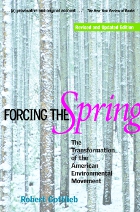 Forcing the Spring: The Transformation of the American Environmental Movement
Robert Gottlieb
Island Press, 2005 Originally published in 1993, Forcing the Spring was quickly recognized as a seminal work in the field of environmental history. The book links the environmental movement that emerged in the 1960s to earlier movements that had not previously been defined as environmental. It was the first to consider the importance of race, ethnicity, class, and gender issues in the history and evolution of environmentalism. This revised edition extends the groundbreaking history and analysis of Forcing the Spring into the present day. It updates the original with important new material that brings the book's themes and arguments into the 21st century, addressing topics such as: the controversy spawned by the original edition with regard to how environmentalism is, or should be, defined; new groups and movements that have formed in the past decade; change and development in the overall environmental movement from 1993 to 2004; the changing role of race, class, gender, and ethnicity in today's environmentalism; the impact of the 2004 presidential election; the emergence of "the next environmentalism." Forcing the Spring, Revised Edition considers environmentalism as a contemporary movement focused on "where we live, work, and play," touching on such hot-button topics as globalization, food, immigration, and sprawl. The book also describes the need for a "next environmentalism" that can address current challenges, and considers the barriers and opportunities associated with this new, more expansive approach. Forcing the Spring, Revised Edition is an important contribution for students and faculty in a wide variety of fields including history, sociology, political science, environmental studies, environmental history, and social movements. It also offers useful context and analysis for anyone concerned with environmental issues.
 The Ford Century in Minnesota
Brian McMahon
University of Minnesota Press, 2016 In 1903, before the Ford Motor Company was even incorporated, Stephen Tenvoorde signed a contract to sell “Fordmobiles” at his bicycle shop in St. Cloud, Minnesota. Four generations later, the Tenvoorde family still operates what is now the oldest Ford dealership in the world. Brian McMahon chronicles how the fortunes of the company and the state became intertwined during that century. Ford assembled Model T cars in the world’s tallest automobile plant in Minneapolis and a three-story structure in St. Paul—both still standing. These factories quickly became functionally obsolete after the development of the moveable assembly line. The hunt for a new site to build a modern, single-story plant stirred intense rivalry between Minneapolis and St. Paul. Henry Ford took a rare personal interest in the search and selected a 125-acre parcel in St. Paul overlooking the recently built High Dam on the Mississippi River, which allowed for navigation and hydroelectric power. The Twin Cities Assembly Plant would go on to manufacture millions of cars, trucks, tractors, and military vehicles until its closure in 2011. Henry Ford’s large-scale experiments with every aspect of the industrial economy sent ripples and shockwaves through the lives of Minnesotans—management and assembly line workers, dealers and customers, families and communities. First-person accounts of more than forty retired auto workers share what it was like to work at Ford—from the early years of the Minneapolis plant to the final hours of the Twin Cities Assembly Plant in St. Paul. McMahon documents the company’s transformation—through the Depression, the rise of the United Auto Workers Union, World War II, women joining the workforce, competition from imported cars, globalization, outsourcing, and the closing of the plant.
This publication was made possible in part by the people of Minnesota through a grant funded by an appropriation to the Minnesota Historical Society from the Minnesota Arts and Cultural Heritage Fund. Any views, findings, opinions, conclusions or recommendations expressed in this publication are those of the authors and do not necessarily represent those of the State of Minnesota, the Minnesota Historical Society, or the Minnesota Historic Resources Advisory Committee.
Ford Madox Ford
Alan Judd
Harvard University Press, 1991 Ford Madox Ford wrote nearly every day of his life from adolescence onward, and produced eighty-two books, edited two very influential magazines—the English Review and the Transatlantic Review—discovered Lawrence, patronized Pound, publicized Joyce, employed Hemingway, and collaborated with Conrad. He achieved in his writing what Henry James called ”the real right thing.” Yet apart from The Good Soldier (a masterpiece impossible to ignore), and perhaps the tetralogy Parade’s End, this extraordinary man is hardly known today outside the peripheral roles he plays in the biographies of his more famous contemporaries. It will be difficult, however, for him to be so ignored again. Rarely is a half-forgotten writer rescued by such intelligent and engrossing enthusiasm.
 Ford Road
Amy Kenyon
University of Michigan Press, 2012 After the death of her mother, Kay Seger abandons her career as a historical consultant to a Los Angeles film company and returns to her childhood home in Michigan. There, she rekindles a teenage love affair with Joe Chase, now a Vietnam War veteran and Ford auto worker. Afflicted by grief and the mysterious symptoms of an unidentified ailment, Kay, at Joe's urging, begins an investigation of her family's past. As Kay pores over the boxes of papers, letters, and photo albums her mother left behind, vivid recollections of a bygone Detroit, ragged and teeming at the start of the automotive age, come to life alongside snapshots of Michigan's rural western counties after the settlement of the frontier. In the midst of her searches, Kay comes across the long-forgotten medical history of nostalgia, and it is this new knowledge that helps her to recover the lost histories of her family and find a resolution to her troubled relationship with Joe. An exploration of memory as both pathology and promise, Ford Roadoffers a moving examination of the injuries we inflict on the people closest to us, the worldly injuries that are often beyond our control, and our astonishing ability to act upon and inhabit our own stories. It is also a meditation on American car culture, the road, and the role of early Hollywood in the creation of America's vision of itself. Written in spare, evocative prose, historian Amy Kenyon's first novel is as heartbreaking as it is thought-provoking.
 Foreclosing the Future: The World Bank and the Politics of Environmental Destruction
Bruce Rich
Island Press, 2013 World Bank President Jim Yong Kim has vowed that his institution will fight poverty and climate change, a claim that World Bank presidents have made for two decades. But if worldwide protests and reams of damning internal reports are any indication, too often it does just the opposite. By funding development projects and programs that warm the planet and destroy critical natural resources on which the poor depend, the Bank has been hurting the very people it claims to serve. What explains this blatant contradiction? If anyone has the answer, it is arguably Bruce Rich—a lawyer and expert in public international finance who has for the last three decades studied the Bank’s institutional contortions, the real-world consequences of its lending, and the politics of the global environmental crisis. What emerges from the bureaucratic dust is a disturbing and gripping story of corruption, larger-than-life personalities, perverse incentives, and institutional amnesia. The World Bank is the Vatican of development finance, and its dysfunction plays out as a reflection of the political hypocrisies and failures of governance of its 188 member countries. Foreclosing the Future shows how the Bank’s failure to address the challenges of the 21st Century has implications for everyone in an increasingly interdependent world. Rich depicts how the World Bank is a microcosm of global political and economic trends—powerful forces that threaten both environmental and social ruin. Rich shows how the Bank has reinforced these forces, undercutting the most idealistic attempts at alleviating poverty and sustaining the environment, and damaging the lives of millions. Readers will see global politics on an increasingly crowded planet as they never have before—and come to understand the changes necessary if the World Bank is ever to achieve its mission.
To review the references and notes with links to articles, please click on the "Resources" tab at https://islandpress.org/foreclosing-the-future.
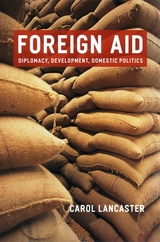 Foreign Aid: Diplomacy, Development, Domestic Politics
Carol Lancaster
University of Chicago Press, 2006 A twentieth-century innovation, foreign aid has become a familiar and even expected element in international relations. But scholars and government officials continue to debate why countries provide it: some claim that it is primarily a tool of diplomacy, some argue that it is largely intended to support development in poor countries, and still others point out its myriad newer uses. Carol Lancaster effectively puts this dispute to rest here by providing the most comprehensive answer yet to the question of why governments give foreign aid. She argues that because of domestic politics in aid-giving countries, it has always been—and will continue to be—used to achieve a mixture of different goals.
Drawing on her expertise in both comparative politics and international relations and on her experience as a former public official, Lancaster provides five in-depth case studies—the United States, Japan, France, Germany, and Denmark—that demonstrate how domestic politics and international pressures combine to shape how and why donor governments give aid. In doing so, she explores the impact on foreign aid of political institutions, interest groups, and the ways governments organize their giving. Her findings provide essential insight for scholars of international relations and comparative politics, as well as anyone involved with foreign aid or foreign policy.
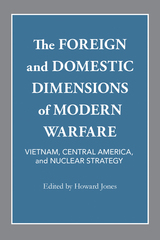 The Foreign and Domestic Dimensions of Modern Warfare: Vietnam, Central America, and Nuclear Strategy
Howard Mumford Jones
University of Alabama Press, 1988 An exploration of the nuclear arms race and the dangers arising with the advent of “limited warfare”
After the development of the atomic bomb in 1945, Americans became engaged in a "new kind of war" against totalitarianism. Enemies and objectives slipped out of focus, causing political and military aims to mesh as a struggle to contain communism both at home and abroad encompassed civilians as well as soldiers. In matters relating to Vietnam, Central America, and the nuclear arms race, the domestic and foreign dimensions of each issue became inseparable. Policymakers in Washington had to formulate strategies dictated by "limited war" in their search for peace.
Contributors to this volume demonstrate the multifaceted nature of modern warfare. Robert H. Ferrell establishes the importance of studying military history in understanding the post-World War II era. On Vietnam, Colonel Harry G. Summers, Jr., gives an intriguing argument regarding the U. S. Army; George C. Herring examines how America's decisions in 1954 assured deepened involvement; and Captain Mark Clodfelter uncovers new evidence concerning "Linebacker I." On the home front, Robert F. Burk analyzes the impact of the Cold War on the battle for racial justice; Charles DeBenedetti puts forth a challenging interpretation of the antiwar movement; and James C. Schneider provides perspective on the relationship between the Vietnam War and the Great Society. On Central America, two writers downplay communism in explaining the region's troubles. Ralph Lee Woodward, Jr., fits the Nicaraguan revolution in the long span of history, and Thomas M. Leonard shows how the Reagan administration forced Costa Rica to side with the United States's anti-Sandinista policy. Finally, on nuclear strategy, Donald M. Snow offers a thought-provoking assessment of the "star wars" program, and Daniel S. Papp recommends measures to promote understanding among the superpowers.
These essays demonstrate that the making of foreign policy is immensely complicated, not subject to easy solution or to simple explanation. Despite these complexities, the central objective of policymakers remained clear: to safeguard what was perceived as the national interest.
 Foreign Attachments: The Power of Ethnic Groups in the Making of American Foreign Policy
Tony Smith
Harvard University Press, 2005 Who speaks for America in world affairs? In this insightful new book, Tony Smith finds that, often, the answer is interest groups, including ethnic ones. This seems natural in a country defined by ethnic and cultural diversity and a democratic political system. And yet, should not the nation's foreign policy be based on more general interests? On American national interests?
In exploring this question, Smith ranges over the history of ethnic group involvement in foreign affairs; he notes the openness of our political system to interest groups; and he investigates the relationship between multiculturalism and U.S. foreign policy. The book has three major propositions. First, ethnic groups play a larger role in the formulation of American foreign policy than is widely recognized. Second, the negative consequences of ethnic group involvement today outweigh the benefits this activism at times confers on America in world affairs. And third, the tensions of a pluralist democracy are particularly apparent in the making of foreign policy, where the self-interested demands of a host of domestic actors raise an enduring problem of democratic citizenship--the need to reconcile general and particular interests.
Foreign Cultural Policy in the Interbellum: The Italian Dante Alighieri Society and the British Council Contesting the Mediterranean
Tamara van Kessel
Amsterdam University Press, 2016 This book considers the growing awareness in the wake of World War I that culture could play an effective political role in international relations. Tamara van Kessel shows how the British created the British Council in support of those cultural aims, which took on particular urgency in light of the rise of fascist dictatorships in Europe. Van Kessel focuses in particular on the activities of the British Council and the Italian Dante Alighieri Society in the Mediterranean area, where their respective country's strategic and ideological interests most evidently clashed.
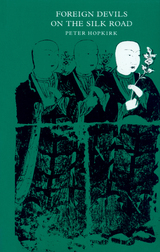 Foreign Devils on the Silk Road: The Search for the Lost Cities and Treasures of Chinese Central Asia
Peter Hopkirk
University of Massachusetts Press, 1980 The Silk Road, which linked imperial Rome and distant China, was once the greatest thoroughfare on earth. Along it traveled precious cargoes of silk, gold and ivory, as well as revolutionary new ideas. Its oasis towns blossomed into thriving centers of Buddhist art and learning. In time it began to decline. The traffic slowed, the merchants left and finally its towns vanished beneath the desert sands to be forgotten for a thousand years; however, legends grew up of lost cities filled with treasures and guarded by demons. In the early years of the last century foreign explorers began to investigate these legends, and very soon an international race began for the art treasures of the Silk Road. Huge wall paintings, sculptures and priceless manuscripts were carried away, literally by the ton, and are today scattered through the museums of a dozen countries. Peter Hopkirk tells the story of the intrepid men who, at great personal risk, led these long-range archaeological raids, incurring the undying wrath of the Chinese.
Foreign Direct Investment
Edited by Kenneth A. Froot
University of Chicago Press, 1993 Over the past decade, foreign direct investment (FDI) around the world has nearly tripled, and with this surge have come dramatic shifts in FDI flows. In Foreign Direct Investment, distinguished economists look at changes in FDI, including historical trends, specific country experiences, developments in the semiconductor industry, and variations in international mergers and acquisitions.
Chapters cover such topics as theoretical accounts of FDI patterns, the growth of multinational enterprises, and the FDI experiences of Japan, the United States, and selected developing countries. This volume will interest economists, government officials, and business people concerned with FDI today.
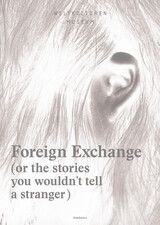 Foreign Exchange: (Or the Stories You Wouldn't Tell a Stranger)
Edited by Clémentine Deliss, Yvette Mutumba, and the Weltkulturen Museum
Diaphanes, 2014 Founded in 1904, Frankfurt’s Weltkulturen Museum houses a remarkable collection of ethnographic artifacts from Asia, Africa, Oceania, and the Americas, with the aims of advancing public education and fostering innovative anthropological research across a wide variety of contemporary artistic practices.
Developed through artistic research in the Weltkulturen Museum’s Weltkulturen Labor research lab, Foreign Exchange raises questions about the relationship between the museum’s educational and scientific aims and global trade. Together, essays by anthropologists, art historians, artists, and curators form an extended conversation around the historical accumulation and commodification of artifacts and, in particular, the representation of the human body in ethnographic photographs. Rounding out the volume are many previously unpublished photographs of works discussed. Contributing authors and artist include Peggy Buth, Minerva Cuevas, Gabriel Gbadamosi, David Lau, Tom McCarthy, David Weber-Krebs, and Luke Willis-Thompson.
Foreign Eyes: International Students Reflect on Utrecht
Edited By Emmeline Besamusca
Amsterdam University Press, 2012
Every year hundreds of students from all over the world come to study in Utrecht. On the occasion of the 375th anniversary of the founding of Utrecht University, foreign students and alumni were invited to reflect on Dutch culture as they had experienced it in their university years there. This book collects the best of the essays they wrote; the result is a unique and fascinating contribution to the study of Dutch culture. These essays offer not only an intimate portrait of the students’ experiences, but also a fresh perspective on the remarkable, frustrating, and fascinating features of Dutch culture.
 The Foreign Film Renaissance on American Screens, 1946–1973
Tino Balio
University of Wisconsin Press, 2010 Largely shut out of American theaters since the 1920s, foreign films such as Open City, Bicycle Thief, Rashomon, The Seventh Seal, Breathless, La Dolce Vita and L’Avventura played after World War II in a growing number of art houses around the country and created a small but influential art film market devoted to the acquisition, distribution, and exhibition of foreign-language and English-language films produced abroad. Nurtured by successive waves of imports from Italy, Great Britain, France, Sweden, Japan, and the Soviet Bloc, the renaissance was kick-started by independent distributors working out of New York; by the 1960s, however, the market had been subsumed by Hollywood.
From Roberto Rossellini’s Open City in 1946 to Bernardo Bertolucci’s Last Tango in Paris in 1973, Tino Balio tracks the critical reception in the press of such filmmakers as François Truffaut, Jean-Luc Godard, Federico Fellini, Michelangelo Antonioni, Tony Richardson, Ingmar Bergman, Akira Kurosawa, Luis Buñuel, Satyajit Ray, and Milos Forman. Their releases paled in comparison to Hollywood fare at the box office, but their impact on American film culture was enormous. The reception accorded to art house cinema attacked motion picture censorship, promoted the director as auteur, and celebrated film as an international art. Championing the cause was the new “cinephile” generation, which was mostly made up of college students under thirty.
The fashion for foreign films depended in part on their frankness about sex. When Hollywood abolished the Production Code in the late 1960s, American-made films began to treat adult themes with maturity and candor. In this new environment, foreign films lost their cachet and the art film market went into decline.
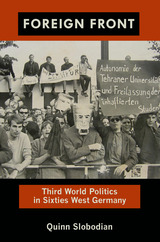 Foreign Front: Third World Politics in Sixties West Germany
Quinn Slobodian
Duke University Press, 2012 It is often asserted that West German New Leftists "discovered the Third World" in the pivotal decade of the 1960s. Quinn Slobodian upsets that storyline by beginning with individuals from the Third World themselves: students from Africa, Asia, and Latin America who arrived on West German campuses in large numbers in the early 1960s. They were the first to mobilize German youth in protest against acts of state violence and injustice perpetrated beyond Europe and North America. The activism of the foreign students served as a model for West German students, catalyzing social movements and influencing modes of opposition to the Vietnam War. In turn, the West Germans offered the international students solidarity and safe spaces for their dissident engagements. This collaboration helped the West German students to develop a more nuanced, empathetic understanding of the Third World, not just as a site of suffering, poverty, and violence, but also as the home of politicized individuals with the capacity and will to speak in their own names.
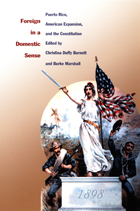 Foreign in a Domestic Sense: Puerto Rico, American Expansion, and the Constitution
Christina Duffy Burnett and Burke Marshall, eds.
Duke University Press, 2001 In this groundbreaking study of American imperialism, leading legal scholars address the problem of the U.S. territories. Foreign in a Domestic Sense will redefine the boundaries of constitutional scholarship. More than four million U.S. citizens currently live in five “unincorporated” U.S. territories. The inhabitants of these vestiges of an American empire are denied full representation in Congress and cannot vote in presidential elections. Focusing on Puerto Rico, the largest and most populous of the territories, Foreign in a Domestic Sense sheds much-needed light on the United States’ unfinished colonial experiment and its legacy of racially rooted imperialism, while insisting on the centrality of these “marginal” regions in any serious treatment of American constitutional history. For one hundred years, Puerto Ricans have struggled to define their place in a nation that neither wants them nor wants to let them go. They are caught in a debate too politicized to yield meaningful answers. Meanwhile, doubts concerning the constitutionality of keeping colonies have languished on the margins of mainstream scholarship, overlooked by scholars outside the island and ignored by the nation at large. This book does more than simply fill a glaring omission in the study of race, cultural identity, and the Constitution; it also makes a crucial contribution to the study of American federalism, serves as a foundation for substantive debate on Puerto Rico’s status, and meets an urgent need for dialogue on territorial status between the mainlandd and the territories. Contributors. José Julián Álvarez González, Roberto Aponte Toro, Christina Duffy Burnett, José A. Cabranes, Sanford Levinson, Burke Marshall, Gerald L. Neuman, Angel R. Oquendo, Juan Perea, Efrén Rivera Ramos, Rogers M. Smith, E. Robert Statham Jr., Brook Thomas, Richard Thornburgh, Juan R. Torruella, José Trías Monge, Mark Tushnet, Mark Weiner
 Foreign Intelligence: Research and Analysis in the Office of Strategic Services, 1942-1945
Barry M. Katz
Harvard University Press, 1989 Much has been written about the Office of Strategic Services (OSS)--the forerunner of the CIA--and the exploits of its agents during World War II. Virtually unknown, however, is the work of the extraordinary community of scholars who were handpicked by "Wild Bill" Donovan and William L. Langer and recruited for wartime service in the OSS's Research and Analysis Branch (R&A). Known to insiders as the "Chairborne Division," the faculty of R&A was drawn from a dozen social science disciplines and challenged to apply its academic skills in the struggle against fascism. Its mandate: to collect, analyze, and disseminate intelligence about the enemy.
Foreign Intelligence is the first comprehensive history of this extraordinary behind-the-scenes group. The R&A Branch assembled scholars of widely divergent traditions and practices--Americans and recent European émigrés; philosophers, historians, and economists; regionalists and functionalists; Marxists and positivists--all engaged in the heady task of translating the abstractions of academic discourse into practical politics. Drawing on extensive, newly declassified archival sources, Barry M. Katz traces the careers of the key players in R&A, whose assessments helped to shape U.S. policy both during and after the war. He shows how these scholars, who included some of the most influential theorists of our time, laid the foundation of modern intelligence work. Their reports introduced the theories and methods of academic discourse into the workings of government, and when they returned to their universities after the war, their wartime experience forever transformed the world of scholarship.
Authoritative, probing, and wholly original, Foreign Intelligence not only sheds new light on this overlooked aspect of the U.S. intelligence record, it also offers a startling perspective on the history of intellectual thought in the twentieth century.
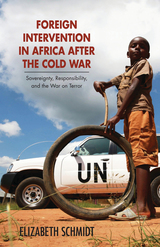 Foreign Intervention in Africa after the Cold War: Sovereignty, Responsibility, and the War on Terror
Elizabeth Schmidt
Ohio University Press, 2018 In Foreign Intervention in Africa after the Cold War—interdisciplinary in approach and intended for nonspecialists—Elizabeth Schmidt provides a new framework for thinking about foreign political and military intervention in Africa, its purposes, and its consequences. She focuses on the quarter century following the Cold War (1991–2017), when neighboring states and subregional, regional, and global organizations and networks joined extracontinental powers in support of diverse forces in the war-making and peace-building processes. During this period, two rationales were used to justify intervention: a response to instability, with the corollary of responsibility to protect, and the war on terror. Often overlooked in discussions of poverty and violence in Africa is the fact that many of the challenges facing the continent today are rooted in colonial political and economic practices, in Cold War alliances, and in attempts by outsiders to influence African political and economic systems during the decolonization and postindependence periods. Although conflicts in Africa emerged from local issues, external political and military interventions altered their dynamics and rendered them more lethal. Foreign Intervention in Africa after the Cold War counters oversimplification and distortions and offers a new continentwide perspective, illuminated by trenchant case studies.
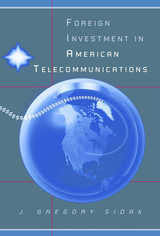 Foreign Investment in American Telecommunications
J. Gregory Sidak
University of Chicago Press, 1997 Restrictions on foreign investment in U.S. telecommunications firms have harmed the interests of American consumers and investors, argues J. Gregory Sidak in this convincing study. Sidak shows why these restrictions, originally intended to protect America from the perils of wireless telegraphy by foreign agents, should be repealed.
Basing his analysis on legislative history, statutory and constitutional interpretation, and finance and trade theory, Sidak shows that these restrictions no longer serve their national security purpose (if they ever did). Instead they deny American consumers lower prices and more robust innovation, hamper access of American investors to foreign telecommunications markets, and unconstitutionally impinge on freedom of speech. Sidak's study encompasses the Telecommunications Act of 1996, recent global mergers such as British Telecom-MCI, and the 1997 World Trade Organization agreement to liberalize trade in telecommunications services.
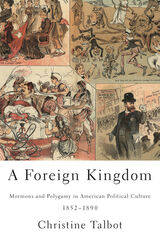 A Foreign Kingdom: Mormons and Polygamy in American Political Culture, 1852-1890
Christine Talbot
University of Illinois Press, 2013 The years from 1852 to 1890 marked a controversial period in Mormonism, when the church's official embrace of polygamy put it at odds with wider American culture. In this study, Christine Talbot explores the controversial era, discussing how plural marriage generated decades of cultural and political conflict over competing definitions of legitimate marriage, family structure, and American identity. In particular, Talbot examines "the Mormon question" with attention to how it constructed ideas about American citizenship around the presumed separation of the public and private spheres. Contrary to the prevailing notion of man as political actor, woman as domestic keeper, and religious conscience as entirely private, Mormons enfranchised women and framed religious practice as a political act. The way Mormonism undermined the public/private divide led white, middle-class Americans to respond by attacking not just Mormon sexual and marital norms but also Mormons' very fitness as American citizens. Poised at the intersection of the history of the American West, Mormonism, and nineteenth-century culture and politics, this carefully researched exploration considers the ways in which Mormons and anti-Mormons both questioned and constructed ideas of the national body politic, citizenship, gender, the family, and American culture at large.
Foreign Medical Graduates in the United States
Harold Margulies and Lucille Stephenson Bloch
Harvard University Press, 1969 The United States is becoming increasingly dependent upon physicians drawn from the poorest countries in the world. The authors have studied the effects of this migration on countries of origin, quality of the graduates' education, their ability to assume direct patient care in the United States, and regulations affecting the migration of physicians to this country.
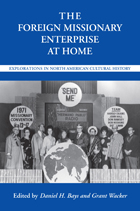 The Foreign Missionary Enterprise at Home: Explorations in North American Cultural History
Edited by Daniel H. Bays and Grant Wacker
University of Alabama Press, 2010 This volume is the first to examine at length and in detail the impact of the missionary experience on American cultural, political, and religious history. This collection of 15 essays provides a fully developed account of the domestic significance of foreign missions from the 19th century through the Vietnam War. U.S. and Canadian missions to China, South America, Africa, and the Middle East have, it shows, transformed the identity and purposes of their mother countries in important ways. Missions provided many Americans with their first significant exposure to non-Western cultures and religions. They helped to establish a variety of new academic disciplines in home universities—linguistics, anthropology, and comparative religion among them. Missionary women helped redefine gender roles in North America, and missions have vitalized tiny local churches as well as entire denominations, causing them to rethink their roles and priorities, both here and abroad. In fact, missionaries have helped define our own national identity by influencing our foreign, trade, military, and immigration policies over the last two centuries. Topics in the collection range from John Saillant's essay on the missions of free African Americans to Liberia in the 19th century to Grant Wacker's essay on the eventual disillusionment of noted writer Pearl S. Buck. Kathryn T. Long’s essay on the “Auca martyrs” offers a sobering case study of the missionary establishment's power to, in tandem with the evangelical and secular press, create and record the stories of our time. William L. Svelmoe documents the improbable friendship between fundamentalist Bible translator William Cameron Townsend and Mexico’s secular socialist president Lázaro Cárdenas. And Anne Blue Wills details the ways many American groups—black, Protestant, Catholic, and Mormon—sought to convert one another, stead-
fastly envisioning “others” as every bit as “heathen” as those in far-off lands. The Foreign Missionary Enterprise at Home is an insightful, provocative collection that will stimulate much discussion and debate. It is valuable for academic libraries and seminaries, scholars of religious history and American studies, missionary groups, cultural historians and ethnographers, and political scientists.
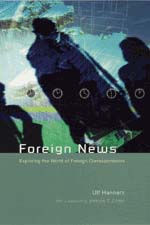 Foreign News: Exploring the World of Foreign Correspondents
Ulf Hannerz
University of Chicago Press, 2003 Foreign News gives us a fascinating, behind-the-scenes look into the practices of the global tribe we call foreign correspondents. Exploring how they work, Ulf Hannerz also compares the ways correspondents and anthropologists report from one part of the world to another.
Hannerz draws on extensive interviews with correspondents in cities as diverse as Jerusalem, Tokyo, and Johannesburg. He shows not only how different story lines evolve in different correspondent beats, but also how the correspondents' home country and personal interests influence the stories they write. Reporting can go well beyond coverage of a specific event, using the news instead to reveal deeper insights into a country or a people to link them to long-term trends or structures of global significance. Ultimately, Hannerz argues that both anthropologists and foreign correspondents can learn from each other in their efforts to educate a public about events and peoples far beyond our homelands.
The result of nearly a decade's worth of work, Foreign News is a provocative study that will appeal to both general readers and those concerned with globalization.
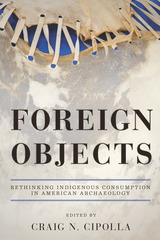 Foreign Objects: Rethinking Indigenous Consumption in American Archaeology
Edited by Craig N. Cipolla
University of Arizona Press, 2017 Brass tinklers and pendants. Owl effigies, copper kettles, crucifixes with blue glass stones. What do they have in common? The answer spans thousands of years and a multitude of peoples and places, and reveals how people made sense of their world as they collected and used the objects they encountered. Foreign Objects demonstrates the breadth and vibrancy of contemporary archaeology. Taking a broad set of archaeological cases from across the Americas, editor Craig N. Cipolla and the volume contributors explore how indigenous communities have socialized foreign objects over time. The book critiques the artificial divide between prehistory and history, studying instead the long-term indigenous histories of consumption, a term typically associated with capitalism and modern-world colonialism. The case studies range from “exotic” stone tools used millennia ago to nineteenth-century patent medicines made and marketed by an Indian doctress. Foreign Objects focuses on how indigenous groups and foreign objects became entangled with one another in myriad ways. The book explores how the framework of consumption can shed new light on trade, exchange, materiality, and cultural production. Contributors place foreign objects in the spotlight and offer a comparison of how this general class of material played a part in indigenous and colonial worlds. Each chapter illustrates how notions of consumption fit into their place in time and also delves into how foreign objects related to ideas of the body and personhood, how people used them to participate in political and spiritual worlds, and how they presented new ways of enduring or resisting European colonialism and capitalism. Foreign Objects is a critical look at consumption through the lens of indigenous knowledge and archaeological theory.
Contributors:
Matthew A. Beaudoin
Lewis Borck
Kathleen J. Bragdon
Craig N. Cipolla
Charles R. Cobb
John L. Creese
Diana DiPaolo Loren
Martin Gallivan
Meghan C. L. Howey
Barbara J. Mills
Maxine Oland
Lee M. Panich
Patricia E. Rubertone
Christopher Shephard
Keith D. Stephenson
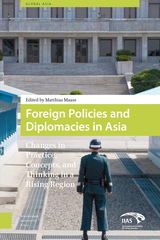 Foreign Policies and Diplomacies in Asia: Changes in Practice, Concepts, and Thinking in a Rising Region
Matthias Maass
Amsterdam University Press, 2014 The observation of a rising Asia and its rapidly growing economic powerhouses has become a truism. These impressive economic development stories provide the backbone for the growing political assertiveness in the region. Asia's economic prowess is rapidly being transferred onto the diplomatic stage. In the light of these larger developments, the authors of this timely volume investigate the regional and international implications of a rising Asia and problematise critical developments.
The first section focuses on the lack of a proper regional security community in Asia. The second part analyses the usefulness of 'Asia' as a catch-all for very distinct sub-regions. While not denying the utility of the concept of Asia as one region, the authors support the need to maintain in parallel a clear focus on issues, approaches, and characteristics that are unique to sub-regions within the continent. A third group of authors probe the regional foreign policies of key players in the region, exploring the security strategies and diplomacies of major regional actors.
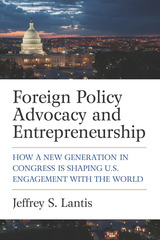 Foreign Policy Advocacy and Entrepreneurship: How a New Generation in Congress Is Shaping U.S. Engagement with the World
Jeffrey S. Lantis
University of Michigan Press, 2019 Foreign Policy Advocacy and Entrepreneurship shows how new and dynamic leaders in Congress are becoming highly influential in policymaking. Capturing the spirit of change in Washington, DC, it explores original case studies of eight US policymakers who challenged authority during the Obama administration—from war veterans and fundamentalist Christian activists to former spies and minority legislators. Newly elected representatives in both parties dove into issues that sometimes seemed well beyond the interests of their constituents and that defied their own party leadership. Setting the course for a new generation of lawmakers, junior entrepreneurs studied here employed a combination of formal legislative strategies for successful influence and informal networking, policy narratives, and communication strategies. While some congressional initiatives have succeeded in changing US foreign policy and others have failed, committed entrepreneurs appear to be gaining greater influence over US foreign policy in the polarized atmosphere of Washington, DC.
Cases of entrepreneurship by junior members of Congress represent a puzzle for traditional foreign policy studies that focus on seniority, party discipline, and rigid institutional systems on Capitol Hill. By melding entrepreneurship and policy advocacy literature, this book advances a new typology of foreign policy entrepreneurship, recognizing the impact of multidimensional strategies of influence. The arrival of new members of the 116th Congress, the most diverse in history, provides an exciting laboratory to further test these propositions.
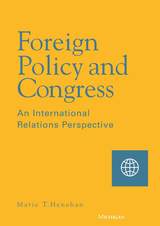 Foreign Policy and Congress: An International Relations Perspective
Marie T. Henehan
University of Michigan Press, 2000 In the traditional view of foreign policy making in the United States, the President is considered the primary authority and Congress is seen as playing a subsidiary role. Marie T. Henehan looks at the effects of events in the international system on both the content of foreign policy and what actions Congress takes on foreign policy. Henehan argues that the only way to understand the way congressional behavior varies over time is by looking at the rise and resolution of critical issues in foreign policy, which in turn have their origin in the international system. When a critical foreign policy issue arises, congressional activity and attempts to influence foreign policy increase. Once the debate is resolved and one side wins, a consensus emerges and Congress settles into a more passive role. Using a data set consisting of all roll call votes on foreign policy issues taken by the Senate from 1897 to 1984 to generate indicators of Congressional behavior, together with the rise and fall of critical issues in international relations, Henehan is able to develop a more nuanced understanding of Congress's role in foreign policy making over time.
In recent years political scientists have begun to consider the impact of the international system on domestic policy. Part of the difficulty of some of this work, as well as work on Congress's role in foreign policy, is that it has been limited in terms of time and the number of events the analysis considered, depending on case studies. This book offers a systematic consideration of the effects of international events on domestic politics, crossing many different kinds of international activity, and provides a unique longitudinal view of Congressional action on foreign policy.
This book will be of interest to scholars of international relations, American foreign policy making, and Congress.
Marie T. Henehan is Assistant Professor of Political Science, Vanderbilt University.
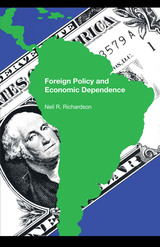 Foreign Policy and Economic Dependence
By Neil R. Richardson
University of Texas Press, 1978 In an era of increasing interdependence among nations, the foreign policies of poor countries are becoming a subject of critical interest to scholars and the public alike. Neil R. Richardson adopts a political economy perspective to examine the foreign policy repercussions of international economic dependence.
Are dependent countries compliant in their foreign policies, acquiescing to the preferences of the industrial giants on which they rely for foreign trade, investment, and aid revenues? Or are they instead prepared to defy their dominant economic partners? These are the major concerns of Richardson’s rigorous investigation.
The book begins with a characterization of economic dependence and its possible impact on the foreign policy decisions of dependent governments. Ideas from both “interdependence” and dependencia scholarship are extracted in order to explain the reliance of poor countries on their rich partners. These economics are linked to the foreign policies of poorer countries by considering how the mechanisms of dependence may create pressures on foreign policymakers. Several combinations of pressures are plausible, and each set yields a differing expectation about their foreign policies.
The second part of the book is an empirical test of these foreign policy predictions for the years 1950–1973. Richardson analyzes the foreign policy behavior (as reflected in certain votes in the United Nations General Assembly) of a number of poor countries that are economically dependent on the United States to varying degrees.
The results suggest several surprising conclusions. Contrary to one common assumption, these mostly Latin American and Caribbean countries are not necessarily locked into a condition of perpetual dependence. Richardson finds that the foreign policies of the economic dependencies are not easily manipulated by the United States. Not only do annual changes in their external economic reliance fail to correspond to their U.N. voting behavior, but the dependencies as a group are no longer clear voting allies of the United States after the late 1960s. These and other results bear theoretical and policy implications that conclude the book.
Foreign Policy and Economic Dependence will be of interest to specialists in quantitative international relations and American foreign policy.
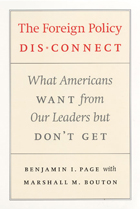 The Foreign Policy Disconnect: What Americans Want from Our Leaders but Don't Get
Benjamin I. Page with Marshall M. Bouton
University of Chicago Press, 2006 With world affairs so troubled, what kind of foreign policy should the United States pursue? Benjamin Page and Marshall Bouton look for answers in a surprising place: among the American people. Drawing on a series of national surveys conducted between 1974 and 2004, Page and Bouton reveal that—contrary to conventional wisdom—Americans generally hold durable, coherent, and sensible opinions about foreign policy. Nonetheless, their opinions often stand in opposition to those of policymakers, usually because of different interests and values, rather than superior wisdom among the elite. The Foreign Policy Disconnect argues that these gaps between leaders and the public are harmful, and that by using public opinion as a guideline policymakers could craft a more effective, sustainable, and democratic foreign policy.
Page and Bouton support this argument by painting a uniquely comprehensive portrait of the military, diplomatic, and economic foreign policies Americans favor. They show, for example, that protecting American jobs is just as important to the public as security from attack, a goal the current administration seems to pursue single-mindedly. And contrary to some officials’ unilateral tendencies, the public consistently and overwhelmingly favors cooperative multilateral policy and participation in international treaties. Moreover, Americans’ foreign policy opinions are seldom divided along the usual lines: majorities of virtually all social, ideological, and partisan groups seek a policy that pursues the goals of security and justice through cooperative means. Written in a clear and engaging style, The Foreign Policy Disconnect calls, in an original voice, for a more democratic approach to creating such a policy.
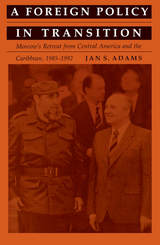 A Foreign Policy in Transition: Moscow's Retreat from Central America and the Carribbean, 1985-1992
Jan S. Adams
Duke University Press, 1992 During his years of leadership in the Soviet Union, Mikhail Gorbachev initiated revolutionary changes in that country's foreign and domestic policies. A Foreign Policy in Transition charts the changing Soviet policies toward Central America and the Caribbean during the Gorbachev years, examines the effects of these policies on individual countries, and looks to the role that Russia and the other Soviet-successor states will play in this region in the 1990s.
Jan S. Adams analyzes the factors shaping Gorbachev's foreign policy in Central America by surveying Soviet political views old and new, by describing Gorbachev's bold restructuring of the Soviet foreign policy establishment, and by assessing the implications of his policy of perestroika. A series of country studies demonstrates how changes in Soviet policies and domestic and economic circumstances contributed to significant shifts in the internal conditions and external relations of the Central American and Caribbean nations. Adams discusses in detail such topics as the reduction of Soviet military and economic aid to the region and pressures exerted by Moscow on client states to effect the settlement of regional conflicts by political rather than military means.
The author concludes by speculating about which trends in foreign policy by Russia and other Soviet-successor states toward Central America and the Caribbean may persist in the post-Soviet period, discussing as the implications of these changes for future U.S. policy in the region.
Foreign Policy Motivation: A General Theory and a Case Study
Richard W. Cottam
University of Pittsburgh Press, 1977
Foreign policy motivation is a complex mix reflecting the fears and aspirations of publics, interest groups, bureaucratic sets, and important individuals. International conflict cannot be resolved without resolving how foreign policy is motivated. This book presents a conceptual framework for identifying and weighing foreign policy motives that shape, direct, and alter foreign policy.
 The Foreign Policy of Saudi Arabia: The Formative Years
Jacob Goldberg
Harvard University Press, 1986 The rise of the House of Saud in the mid-eighteenth century led to the creation of two successive Saudi states which were supported by two key groups, the religious Wahhabi and the dynastic Saudi. The central objective in the relationship between these groups was to convert the population to Wahhabism, with the Saudi dynasty providing the military and political power to wage wars of occupation and proselytism. The major conclusion of this book is that this relationship ceased to exist when Ibn Saud came out of exile in 1902 to establish the third Saudi state.
Jacob Goldberg's Saudi perspective, unlike the British perspective of earlier studies, focuses on the marked changes in the years from 1902 to the disappearance of the Ottomans in 1918. Ibn Saud had spent his formative years in exile in Kuwait, witnessing the international politics and intrigues of that region. When he returned to head the new Saudi state, his goal was the reinstatement of the House of Saud in Arabia and the restoration of its former dynastic dominions, but not the propagation of the Wahhabi doctrine. Territorial ambitions were modified by considerations of realpolitik. This pragmatic reversal accounts, in part, for the ability of the new state to survive.
By focusing on the roots of Saudi foreign policy, the author highlights the distinctive characteristics that make Saudi Arabia inherently different from other Middle Eastern states.
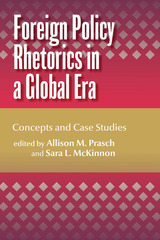 Foreign Policy Rhetorics in a Global Era: Concepts and Case Studies
Allison M. Prasch
Michigan State University Press, 2024 This volume takes concepts familiar to foreign policy scholars and reimagines their usefulness in a global era. The essays in this collection feature unique methodological and theoretical contributions to rhetorical scholarship. The field of rhetorical studies often assumes a US-centric approach that elevates American chief executives as the sole doers and makers of foreign policy discourse. This work points to a more comprehensive, global perspective of foreign policy discourse and offers key concepts, case studies, and approaches. It also examines who enacts discourse, where it happens, and how it influences relationships in/between local, national, transnational, and global spheres.
Among the cases researched in this collection are foreign policy rhetoric from Cold War foreign policy in Latin America, the rhetoric of Vladimir Putin’s Ukraine war messages, and the development challenges of the Ford Foundation and the Kenya Women Finance Trust, among many others.
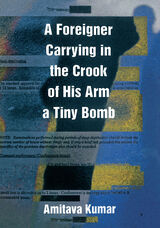 A Foreigner Carrying in the Crook of His Arm a Tiny Bomb
Amitava Kumar
Duke University Press, 2010 Part reportage and part protest, A Foreigner Carrying in the Crook of His Arm a Tiny Bomb is an inquiry into the cultural logic and global repercussions of the war on terror. At its center are two men convicted in U.S. courts on terrorism-related charges: Hemant Lakhani, a seventy-year-old tried for attempting to sell a fake missile to an FBI informant, and Shahawar Matin Siraj, baited by the New York Police Department into a conspiracy to bomb a subway. Lakhani and Siraj were caught through questionable sting operations involving paid informants; both men received lengthy jail sentences. Their convictions were celebrated as major victories in the war on terror. In Amitava Kumar’s riveting account of their cases, Lakhani and Siraj emerge as epic bunglers, and the U.S. government as the creator of terror suspects to prosecute. Kumar analyzed the trial transcripts and media coverage, and he interviewed Lakhani, Siraj, their families, and their lawyers. Juxtaposing such stories of entrapment in the United States with narratives from India, another site of multiple terror attacks and state crackdowns, Kumar explores the harrowing experiences of ordinary people entangled in the war on terror. He also considers the fierce critiques of post-9/11 surveillance and security regimes by soldiers and torture victims, as well as artists and writers, including Coco Fusco, Paul Shambroom, and Arundhati Roy.
 Foremother Love: Phillis Wheatley and Black Feminist Criticism
Dana Murphy
Duke University Press, 2025 In Foremother Love, Dana Murphy examines the importance of eighteenth-century poet Phillis Wheatley as a foundational figure for Black feminist criticism. Murphy establishes Phillis (as she refers to her) as a writer who wrote in response to and in conversation with other creators as well as a critic who was invested in sharing, explaining, and evaluating her own and others’ work and contexts. Indeed, Phillis played a key role in the development of what Murphy calls “foremother love”—the Black feminist depiction of the love of an unrelated feminist ancestor as a legitimate relation for the practice of inheritance, mourning, liberation, and friendship. Drawing on the work of Barbara Christian, June Jordan, Audre Lorde, Barbara Smith, and others, Murphy shows that Black feminist criticism becomes a transhistorical theorization when read in conjunction with Phillis’s labor and vision. Revealing how Phillis lives on in Black feminist criticism, Murphy contends that foremother love is an ethic of critical care that implores readers to recognize the affective labor of all those working in the field.
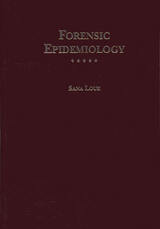 Forensic Epidemiology: A Comprehensive Guide for Legal and Epidemiology Professionals
Sana Loue
Southern Illinois University Press, 1999
Sana Loue explores the concepts of legal and epidemiological causation, the use of epidemiological data based on populations to determine causation in an individual case, and the use of epidemiological evidence in litigation, including the reliance on experts and expert witnesses.
Loue provides a guide for the attorney with little or no background in epidemiological theory and for the epidemiologist contemplating a new role as an expert witness. She assumes of her readers a working knowledge of the Federal Rules of Civil Procedure and the Federal Rules of Evidence.
Discussing the epidemiologist as expert witness, Loue covers the nature of that testimony, the purpose of the testimony, and the qualifications necessary to be regarded as an expert witness. She examines various legal theories of causation, primarily in the context of product liability and toxic tort, and addresses epidemiological principles and methods used in the process of causal inference.
Loue also focuses on legal mechanisms used to assess causation. Her concern here is with depositions and testimony and the preparation of epidemiology experts. She concludes her study by comparing the legal and epidemiological concepts of causation, using actual legal cases as examples.
Throughout the text, Loue incorporates excerpts from depositions, interrogatories, and trial testimony to provide concrete examples. She also sets up an appendix to provide nonattorney readers with an overview of the legal system. Ultimately, her goal is to foster a greater understanding between law and epidemiology.
 Forensic Media: Reconstructing Accidents in Accelerated Modernity
Greg Siegel
Duke University Press, 2014 In Forensic Media, Greg Siegel considers how photographic, electronic, and digital media have been used to record and reconstruct accidents, particularly high-speed crashes and catastrophes. Focusing in turn on the birth of the field of forensic engineering, Charles Babbage's invention of a "self-registering apparatus" for railroad trains, flight-data and cockpit voice recorders ("black boxes"), the science of automobile crash-testing, and various accident-reconstruction techniques and technologies, Siegel shows how "forensic media" work to transmute disruptive chance occurrences into reassuring narratives of causal succession. Through historical and philosophical analyses, he demonstrates that forensic media are as much technologies of cultural imagination as they are instruments of scientific inscription, as imbued with ideological fantasies as they are compelled by institutional rationales. By rethinking the historical links and cultural relays between accidents and forensics, Siegel sheds new light on the corresponding connections between media, technology, and modernity.
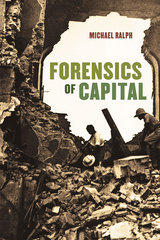 Forensics of Capital
Michael Ralph
University of Chicago Press, 2015 As one of Africa’s few democracies, Senegal has long been thought of as a leader of moral, political, and economic development on the continent. We tend to assume that any such nation has achieved favorable international standing due to its own merits. In Forensics of Capital, Michael Ralph upends this kind of conventional thinking, showing how Senegal’s diplomatic standing was strategically forged in the colonial and postcolonial eras at key periods of its history and is today entirely contingent on the consensus of wealthy and influential nations and international lending agencies.
Ralph examines Senegal’s crucial and pragmatic decisions related to its development and how they garnered international favor, decisions such as its opposition to Soviet involvement in African liberation—despite itself being a socialist state—or its support for the US-led war on terror—despite its population being predominately Muslim. He shows how such actions have given Senegal an inflated political and economic position and status as a highly credit-worthy nation even as its domestic economy has faltered. Exploring these and many other aspects of Senegal’s political economy and its interface with the international community, Ralph demonstrates that the international reputation of any nation—not just Senegal—is based on deep structural biases.
 Forensics Under Fire: Are Bad Science and Dueling Experts Corrupting Criminal Justice?
Jim Fisher
Rutgers University Press, 2008 Television shows like CSI, Forensic Files, and The New Detectives make it look so easy. A crime-scene photographer snaps photographs, a fingerprint technician examines a gun, uniformed officers seal off a house while detectives gather hair and blood samples, placing them carefully into separate evidence containers. In a crime laboratory, a suspect's hands are meticulously examined for gunshot residue. An autopsy is performed in order to determine range and angle of the gunshot and time-of-death evidence. Dozens of tests and analyses are performed and cross-referenced. A conviction is made. Another crime is solved. The credits roll. The American public has become captivated by success stories like this one with their satisfyingly definitive conclusions, all made possible because of the wonders of forensic science. Unfortunately, however, popular television dramas do not represent the way most homicide cases in the United States are actually handled. Crime scenes are not always protected from contamination; physical evidence is often packaged improperly, lost, or left unaccounted for; forensic experts are not always consulted; and mistakes and omissions on the autopsy table frequently cut investigations short or send detectives down the wrong investigative path. In Forensics Under Fire, Jim Fisher makes a compelling case that these and other problems in the practice of forensic science allow offenders to escape justice and can also lead to the imprisonment of innocent people. Bringing together examples from a host of high-profile criminal cases and familiar figures, such as the JonBenet Ramsey case and Dr. Henry Lee who presented physical evidence in the O. J. Simpson trial, along with many lesser known but fascinating stories, Fisher presents daunting evidence that forensic science has a long way to go before it lives up to its potential and the public's expectations.
 Foreplay: Hannah Arendt, the Two Adornos, and Walter Benjamin
Carl Djerassi
University of Wisconsin Press, 2011 Hannah Arendt, Walter Benjamin, and Theodor W. Adorno were intellectual giants of the first half of the twentieth century. The drama Foreplay explores their deeply human and psychologically intriguing private lives, focusing on professional and personal jealousies, the mutual dislike of Theodor Adorno and Hannah Arendt, the association between Walter Benjamin and Georges Bataille, and the border between erotica and pornography. Djerassi’s extensive biographical research brings to light many fascinating details revealed in the dialogues among the characters, including Adorno’s obsession with his dreams, Benjamin’s admiration for Franz Kafka, and the intimate correspondence between Gretel Adorno and Walter Benjamin. The introduction of a fictitious character, Fräulein X, intensifies the complex interplay among the four lead protagonists and allows for a comparison of Adorno’s philandering and the similar behavior of Martin Heidegger, whose affair with Hannah Arendt is well known. Foreplay brims with intrigue and the friction created when strong personalities clash.
The Forest
Susan Stewart
University of Chicago Press, 1995 Susan Stewart plumbs human history in an attempt to articulate the way language, memory, and art join in evoking consciousness. The Forest is about violence and memory: the violence we do to our surroundings and to ourselves; and the propensity of the human mind to exploit and rationalize in its longing for truth.
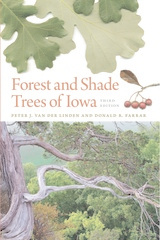 Forest and Shade Trees of Iowa
Peter J. van der Linden
University of Iowa Press, 2011 @font-face { font-family: "Times";}@font-face { font-family: "Palatino";}p.MsoNormal, li.MsoNormal, div.MsoNormal { margin: 0in 0in 0.0001pt; font-size: 12pt; font-family: "Times New Roman"; }div.Section1 { page: Section1; } Back in print at last in a third edition, the classic Forest and Shade Trees of Iowa now has a wealth of full-color photographs and updated, reorganized information that will please both new and returning readers. Part 1 of this guide focuses on identification, with user-friendly keys to both summer and winter trees and illustrated descriptions of more than one hundred common species. The trees are arranged according to similarities in foliage; each entry includes a large scan of a leafy branch along with two or three smaller photos of buds, flowers, fruits, and winter twigs. The text contains a description of the species, its geographical distribution, and notes on how to distinguish it from similar species. Part 2 is divided into conifers and flowering trees and includes all trees native to Iowa, trees that are widely planted, invasive species, some less commonly planted trees, and tall native shrubs that might be mistaken for trees. The authors provide information about the natural history of individual trees, their ecological requirements, pests and diseases that affect them, and their usefulness for such different purposes as windbreaks, landscaping, wildlife plantings, fuel, lumber, and food. Following these two main parts, three shorter sections describe the planting and care of trees, Iowa’s forest communities, and good places to see trees in the state; a glossary and a bibliography are also included. A complete guide to Iowa’s trees, both native and introduced, full of hundreds of color photos, this new edition of Forest and Shade Trees of Iowa will be immensely useful to arborists, foresters, horticulturists, landscape architects, gardeners, and all Iowans and midwesterners who appreciate the beauty and value of trees and want to learn more about them.
The Forest and the Trees: Sociology as Life, Practice, and Promise
Allan Johnson
Temple University Press, 2008 If sociology could teach everyone just one thing, what would it be? The Forest and the Trees is one sociologist's response to the hypothetical—the core insight with the greatest potential to change how people see the world and themselves in relation to it. This revised and updated edition features: • A new chapter that brings together the various aspects of the sociological model described in previous chapters with a detailed application to the origins of racism in the United States •A discussion of how individuals can participate in social change by stepping off paths of least resistance •The addition of graphics to illustrate the sociological model of systems and individuals
The Forest and the Trees: Sociology as Life, Practice, and Promise
Allan Johnson
Temple University Press, 2014 New Third Edition!
If sociology could teach everyone just one thing, what would it be? The Forest and the Trees is one sociologist's response to the hypothetical-the core insight with the greatest potential to change how people see the world and themselves in relation to it.
This Third Edition features:
• Updated key references, data, resources, and examples, from global warming, Obama's election, and gay marriage to transgender/cisgender and the Occupy Movement
• A glossary of terms
• The short essays in Chapter 6, framed around the power of sociology, dig beneath easy and popular understandings to reveal what lies beneath
• An additional analysis of how men's violence is made invisible even though most violence is perpetrated by men
• Chapter 7's focus on sociology as a worldview with an analysis of the origins of white privilege
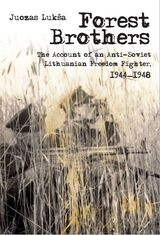 Forest Brothers: The Account of an Anti-Soviet Lithuanian Freedom Fighter, 1944–1948
Translated and with an Introduction by Laima Vincė
Central European University Press, 2009 An autobiographical account of the armed resistance against the Soviet Union, which took place between 1944–1956. Published in English for the first time in unabridged form, Lukša's memoir remains one of the few reliable eye-witness accounts of the "Invisible Front", as dubbed by Soviet security forces. At its zenith 28,000 guerilla fighters participated in battles and skirmishes throughout Lithuania, Lukša (partisan codename Daumantas) being one of the leaders. Forest Brothers also documents the role of women in the resistance, giving equal credit to these often silent partners. In 1948 Lukša and two comrades broke through the Iron Curtain on the Polish border. He sought training from the French intelligence and from the CIA. Lukša was flown back into the Soviet Union under the radar on the night of October 4, 1950. He managed to survive and operate eleven months until his near capture and death on the night of September 5, 1951. His account, written during 1948–1950, while he was living in hiding in Paris, describes in vivid scenes and dialogue the daily struggles of the resistance.
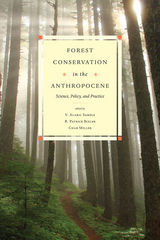 Forest Conservation in the Anthropocene: Science, Policy, and Practice
V. Alaric Sample
University Press of Colorado, 2016 Forest Conservation in the Anthropocene provides thought-provoking insight into the ongoing environmental crises that climate change is generating and raises critical questions about how public and private land managers in North America will adapt to the climatological disruptions that are already transforming the ecological structures of these forests. In this pathbreaking anthology, a team of leading environmental researchers probes the central dilemmas that ecologists, forest land managers, state and federal agencies, and grassroots organizations are confronting—and will continue to confront—in the coming century. Each chapter examines strategies that are currently being tested across the country as scientists, citizen-scientists, policy makers, academics, and activists work to grasp their options and opportunities for a future that will be shaped by ongoing environmental upheaval. Successful adaptation to the challenges of climate change requires a transdisciplinary perspective. Forest Conservation in the Anthropocene provides a compelling set of arguments and case studies that underscores the need for innovative policies and energetic actions. Contributors: Craig D. Allen, Mark Anderson, Susan Beecher, R. Travis Belote, Timothy J. Brown, Anne A. Carlson, Tim Caro, Grace K. Charles, Dave Cleaves, Dena J. Clink, Ayesha Dinshaw, R. Kasten Dumroese, Jonas Epstein, Alexander M. Evans, Todd Gartner, Jessica E. Halofsky, Nels Johnson, Linda A. Joyce, Paige Lewis, Laura Falk McCarthy, Heather McGray, Constance I. Millar, James Mulligan, Chadwick Dearing, David L. Peterson, Will Price, Janine M. Rice, Jason Riggio, Tania Schoennagel, Mark L. Shaffer, Curt Stager, Scott L. Stephens, Thomas W. Swetnam, Gary M. Tabor, Christopher Topik, Monica G. Turner, Thomas T. Veblen, Alexandra M. Weill, Anthony L. Westerling, Carolyn Whitesell, Mary I. Williams
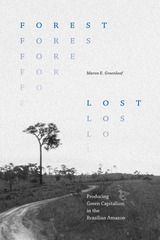 Forest Lost: Producing Green Capitalism in the Brazilian Amazon
Maron E. Greenleaf
Duke University Press, 2024 Forest Lost is an ethnography of forest carbon offsets and the wider effort to make the living rainforest valuable in the Brazilian Amazon. Unlike other forest commodities, forest carbon offsets do not involve resource extraction; instead, they require keeping carbon in place through forest protection. Maron E. Greenleaf explores forest carbon offsets to understand green capitalism—the use of capitalist logics and practices to mitigate environmental damage. She traces cultural, environmental, governmental, material, and multispecies relations involved in making forest carbon valuable as well as how forest carbon’s commodification in the Amazon turned it into a source of redistributable public environmental wealth. At the same time, Greenleaf shows how making forest carbon monetarily valuable created an unexpected set of uneven, contingent, and contested social and political relations. While forest carbon in the Amazon demonstrates that green capitalism can be socially inclusive, it also shows that green capitalism can reinforce the marginalization it purportedly seeks to combat. By outlining these complex relations and tensions, Greenleaf elucidates broader efforts to create a capitalism suited to the Anthropocene and those efforts’ alluring promises and vexing failures.
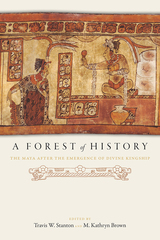 A Forest of History: The Maya after the Emergence of Divine Kingship
Travis W. Stanton
University Press of Colorado, 2020 David Freidel and Linda Schele’s monumental work A Forest of Kings: The Untold Story of the Ancient Maya (1990) offered an innovative, rigorous, and controversial approach to studying the ancient Maya, unifying archaeological, iconographic, and epigraphic data in a form accessible to both scholars and laypeople. Travis Stanton and Kathryn Brown’s A Forest of History: The Maya after the Emergence of Divine Kingship presents a collection of essays that critically engage with and build upon the lasting contributions A Forest of Kings made to Maya epigraphy, iconography, material culture, and history.
These original papers present new, cutting-edge research focusing on the social changes leading up to the spread of divine kingship across the lowlands in the first part of the Early Classic. The contributors continue avenues of inquiry such as the timing of the Classic Maya collapse across the southern lowlands, the nature of Maya warfare, the notion of usurpation and “stranger-kings” in the Classic period, the social relationships between the ruler and elite of the Classic period Yaxchilán polity, and struggles for sociopolitical dominance among the later Classic period polities of Chichén Itzá, Cobá, and the Puuc kingdoms.
Many of the interpretations and approaches in A Forest of Kings have withstood the test of time, while others have not; a complete understanding of the Classic Maya world is still developing. In A Forest of History recent discoveries are considered in the context of prior scholarship, illustrating both the progress the field has made in the past quarter century and the myriad questions that remain. The volume will be a significant contribution to the literature for students, scholars, and general readers interested in Mesoamerican and Maya archaeology.
Contributors:
Wendy Ashmore, Arlen F. Chase, Diane Z. Chase, Wilberth Cruz Alvarado, Arthur A. Demarest, Keith Eppich, David A. Freidel, Charles W. Golden, Stanley P. Guenter, Annabeth Headrick, Aline Magnoni, Joyce Marcus, Marilyn A. Masson, Damaris Menéndez, Susan Milbrath, Olivia C. Navarro-Farr, José Osorio León, Carlos Peraza Lope, Juan Carlos Pérez Calderón, Griselda Pérez Robles, Francisco Pérez Ruíz, Michelle Rich, Jeremy A. Sabloff, Andrew K. Scherer, Karl A. Taube
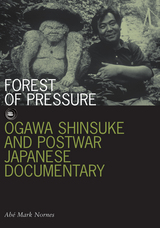 Forest of Pressure: Ogawa Shinsuke and Postwar Japanese Documentary
Abe Mark Nornes
University of Minnesota Press, 2007 “Extraordinarily valuable, illuminating, and even entertaining, Forest of Pressure brims with the types of information that only a key insider can get his hands on.” —Mitsuhiro Yoshimoto, New York University Ogawa Productions—known in Asia as Ogawa Pro—was an influential filmmaking collective that started in the 1960s under the direction of Ogawa Shinsuke (1936–1992). Between 1968 and the mid-1970s, Ogawa Pro electrified the Japanese student movement with its Sanrizuka documentary series—eight films chronicling the massive protests over the construction of the Narita airport—which has since become the standard against which documentaries are measured in Japan. A critical biography of a collective, Forest of Pressure explores the emergence of socially committed documentary filmmaking in postwar Japan. Analyzing Ogawa Pro’s films and works by other Japanese filmmakers, Abé Mark Nornes addresses key issues in documentary theory and practice, including individual and collective cinema production modes and the relationship between subject and object. Benefiting from unprecedented access to Ogawa Pro’s archives and interviews with former members, Forest of Pressure is an innovative look at the fate of political filmmaking in the wake of the movement’s demise. Abé Mark Nornes is associate professor of screen arts and cultures and Asian languages and cultures at the University of Michigan. He is a coordinator at the Yamagata International Documentary Film Festival and the author of Japanese Documentary Film: The Meiji Era through Hiroshima (Minnesota, 2003).
 The Forest of Sure Things
Megan Snyder-Camp
Tupelo Press, 2010 Winner of the Tupelo Press / Crazyhorse First Book Prize
The Forest of Sure Things is a layered sequence of poems set in a remote, historic village at the tip of a peninsula on the Northwest Coast, near where Lewis and Clark encountered the Pacific. A pair of newlywed drifters has arrived and settled there, starting the town’s first new family in a hundred years. When their second child is stillborn, the bereft family unravels and un-roots themselves. Megan Snyder-Camp’s poems reveal — like the shoreline exposed by a neap tide — an emotional landscape pressed upon and buckling under the complications of grief and the difficulties of language.
With hypnotic, incantatory phrasing and imagery and an innovative approach to chronology, Snyder-Camp tells the story of the grieving couple, then dramatizes the impact of this enigmatic story on her imagination, her artistic practice, and her own new beginnings in married life and parenthood.
Based in part upon a brief, true story she was told, Snyder-Camp’s mysterious yet uncommonly compelling poetic sequence will draw the reader as if along a current pulling through the book. Acknowledging the importance of Anne Carson’s Autobiography of Red and Italo Calvino’s Invisible Cities, Snyder-Camp has spoken of her fascination with where language frays, as we try and use “story” to create what we remember and see where we are. What happens in a place, or a family, or a body, when time catches, or stops?
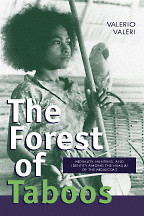 The Forest of Taboos: Morality, Hunting, and Identity among the Huaulu of the Moluccas
Valerio Valeri
University of Wisconsin Press, 2000 “The Forest of Taboos may be considered among the most important books ever written by an anthropologist. Valeri writes superbly, and this book makes a fundamental contribution to one of the most central lines of thought in twentieth-century anthropology. He shows that taboo is finally comprehensible.”—John Stephen Lansing, University of Michigan
“The Forest of Taboos is no conventional ethnography, more an extended meditative essay on its subject, erudite, rich in ideas and data, wide-ranging in its theoretical inspiration, and self-consciously literary in form. It is a fitting memorial to an author whose life was so tragically cut short.”—Roy Ellen, University of Kent at Canterbury
This eloquent and profound book, completed by Valerio Valeri shortly before his death in 1998, contends that the ambivalence felt by all humans about sex, death, and eating other animals can be explained by a set of coordinated principles that are expressed in taboos. In elegant prose, Valeri evokes the world of the Huaulu, forest hunters of Indonesia. The hidden attractions of the animal world, which invades the human world in perilous ways, he shows, also delineate that which the Huaulu regard as most human about themselves.
 Forest Park: Exploring Portland's Natural Sanctuary
Marcy Cottrell Houle
Oregon State University Press, 2023 Situated in the rugged hills west of downtown Portland, Forest Park is the nation’s premier urban natural sanctuary. It supports essential habitat for hundreds of native plants and animals, including species at risk, and is one of the largest city parks in the world. While extending critical ecosystem services to the region, it offers miles of outstanding hiking trails, all within minutes of the downtown core. Forest Park: Exploring Portland’s Natural Sanctuary showcases this treasure in new light, offering a compendium of the most up-to-date and comprehensive information available. Twenty-one hikes covering 75 miles bring a full awareness of the park’s outstanding attributes. Hikes are grouped by theme to encourage people to explore Forest Park’s watersheds; geology; lichens and mosses; vegetation; amphibians and reptiles; pollinators; native wildlife; and wildlife corridors. Beautiful photographs and full-color maps accompany each trail description. Forest Park is a shining example of the Pacific Northwest western hemlock community--an ecosystem unique among all temperate forests of the world. It is also an exciting model for a future Urban Biodiversity Reserve, a concept under development recognizing the park’s scientific, natural, and cultural qualities. Forest Park: Exploring Portland’s Natural Sanctuary will help all visitors discover the beauty and wonders of this extraordinary natural resource.
Forest Patches in Tropical Landscapes
Edited by John Schelhas and Russell Greenberg
Island Press, 1996 While tropical forests are being cleared at an alarming rate, the clearing is rarely complete and is often not permanent. A considerable amount of tropical forest exists as remnants that have significant value both for the conservation of biological diversity and for meeting the needs of local people.
This volume brings together world-renowned scientists and conservationists to address the biological and socio-economic value of forest remnants and to examine practical efforts to conserve those remnants. An outgrowth of a year-long study by the policy program at the Smithsonian Migratory Bird Center, Forest Patches in Tropical Landscapes provides a broad overview of theory and practice, and will help foster both interdisciplinary research and more effective approaches to tropical conservation and development.
Forest Primeval: Poems
Vievee Francis
Northwestern University Press, 2016 Winner, 2017 Kingsley Tufts Poetry Award
Winner, 2016 Hurston/Wright Legacy Award in the Poetry category
Finalist, 2015 Balcones Poetry Prize
Shortlist finalist, 2015 PEN Open Book Award for an exceptional book by an author of color
"Another Anti-Pastoral," the opening poem of Forest Primeval, confesses that sometimes "words fail." With a "bleat in [her] throat," the poet identifies with the voiceless and wild things in the composed, imposed peace of the Romantic poets with whom she is in dialogue. Vievee Francis’s poems engage many of the same concerns as her poetic predecessors—faith in a secular age, the city and nature, aging, and beauty. Words certainly do not fail as Francis sets off into the wild world promised in the title. The wild here is not chaotic but rather free and finely attuned to its surroundings. The reader who joins her will emerge sensitized and changed by the enduring power of her work.
 Forest Rites: The War of the Demoiselles in Nineteenth-Century France
Peter Sahlins
Harvard University Press, 1994 In May 1829, strange reports surfaced from the Ariège department in the French Pyrenees, describing male peasants, bizarrely dressed in women’s clothes, gathering in the forests at night to chase away state guards and charcoal-makers. This was the raucous War of the Demoiselles, a protest against the national French Forest Code of 1827, which restricted peasants’ rights to use state and private forests.
Peter Sahlins unravels the fascinating story of this celebrated popular uprising, and in his telling captures the cultural, historical, and political currents that swept the countryside during France’s July 1830 Revolution. Sahlins explains how and why the Ariège peasants drew on the practices and rituals of folk culture, as well as on a revolutionary tradition, to defend their inherited rights to the forest. To explore these rights and their expression, he delves into the history of forest management, of peasant conflicts with the state, and of popular culture—particularly the disputed history of Carnival and of local rituals of justice.
Sahlins also sheds new light on the French revolutionary tradition and the “Three Glorious Days” of July 1830. The drama and symbolism of the War of the Demoiselles have inspired nearly a dozen plays, novels, films, and even a comic book. Using the concepts of anthropology and cultural studies as transport, Sahlins moves from this rich event to the wider worlds of peasant society in France. Focusing on the years from 1829 to 1832 but drawing on sources since the sixteenth century, his book should captivate social, cultural, and political historians of both early modern and modern Europe.
The Forest Song: A Fairy Play
Lesia Ukrainka
Harvard University Press, 2024 The Forest Song represents the crowning achievement of Lesia Ukrainka’s mature period and is a uniquely powerful poetic text. A play in three acts, it seemingly breaks with her intellectually charged social and cultural themes, which range from feminism and the deconstruction of patriarchy to the workings of colonialism, even in antiquity. Here, the author instead presents a symbolist meditation on the interaction of humanity and nature set in a world of primal forces and pure feelings as seen through childhood memories and the re-creation of local Volhynian folklore. The play unfolds in spirited dialogues between characters from Ukrainian mythology and people of the land: Old Man River, the Nymph, two water spirits, Uncle Leo, Luke, Sylph, and the peasant woman Kylyna and her mother-in-law. The Forest Song is a testament to the power of love to overcome differences and bring loved ones back from the dead.
Forest with Castanets
Diane Mehta
Four Way Books, 2019 In her debut book of poems, knit together with personal essays, Mehta explores her own cultural history— Indian Jainism and American Judaism—as well as her ideas about faith, feminism, and family.
Forests: A Naturalist’s Guide to Woodland Trees
By Laurence C. Walker
University of Texas Press, 1997 First published in 1990, Forests explores the ecological, economic, and human influences on over thirty significant types of woodlands. Laurence Walker focuses especially on the effects of site factors—climate, physiography, biology, and soils—upon the growth of various kinds of trees. Projects for amateur naturalists, reading lists, and a glossary make this the perfect introduction for general readers.
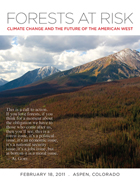 Forests at Risk: Climate Change and the Future of the American West
Aspen Center for Environmental Studies
Island Press, 2012 Climate change poses a huge threat to the West. The current mountain pine beetle epidemic with over 50 million acres of dying trees in western North America has created a powerful “teachable moment” across the region. A primary goal of the Forests At Risk symposium was to reframe the nation’s climate change dialogue by making the issue both personal and real to many who may not appreciate its connection to the immediate world around them. While some may have difficulty relating to rising sea levels, falling water tables, imperiled polar bears and melting glaciers in far-off places, they are still shocked by the sight of vast dying forests around their homes. The Forests At Risk symposium explored the statement by Andy Jacobson, a carbon cycle scientist at the National Oceanic and Atmospheric Administration in Boulder, that “this is the kind of feedback we're all very worried about in the carbon cycle ... a warming planet leading to, in this case, an insect outbreak that increases carbon dioxide into the atmosphere, which can increase warming.” The overwhelming scientific consensus holds that climate change is one of the most serious threats facing humankind today. We have a soberingly short time in which to reduce atmospheric greenhouse gases if we are to preserve our quality of life and environment. In addition to the global urgency, the American West is deeply dependent on the health of its forests, mountains and streams for both its quality of life and its economy. Put simply, if global warming shortens our winters, diminishes our recreation, and unleashes wildfires, diseases and insect epidemics that devastate our forests, the regional damage would be incalculable. NOW is the perfect time to learn more in this ebook. The Forests At Risk symposium represented the first substantial public forum focused directly on the connection between climate change and forest health in the American West. In the wake of millions of acres of pine beetle devastation across our continent, this is the ideal moment to highlight the climate change connection and focus on the question of what happens when our forests transform from carbon sinks into carbon sources.
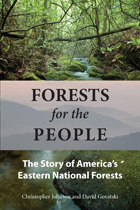 Forests for the People: The Story of America's Eastern National Forests
Christopher Johnson and David Govatski
Island Press, 2013 Forests for the People tells the powerful and often overlooked story of how the eastern national forests came to be—not through top-down mandates, but through grassroots action, political will, and a shared vision of long-term stewardship. At the heart of the book is the passage of the Weeks Act of 1911, which laid the foundation for conserving millions of acres across the East, South, and Great Lakes regions. But just as compelling is the coalition that made it happen: citizens, conservationists, business leaders, and politicians working across divides to stop the devastation caused by unchecked logging and wildfire.
Through vivid historical narrative, the book traces the rise of a conservation movement born out of environmental crisis—from the clearcut slopes of New England and the Southern Appalachians to the damaged watersheds of the Great Lakes. It then shifts to the present day, with eight detailed case studies examining the complex realities of forest management: from fire and timber use to invasive species, endangered wildlife, and the pressures of development at forest edges.
For readers concerned with the future of public lands, Forests for the People offers more than history—it delivers a blueprint for how diverse interests can come together to protect landscapes that sustain both ecosystems and communities.
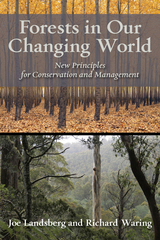 Forests in Our Changing World: New Principles for Conservation and Management
Joe Landsberg and Richard Waring
Island Press, 2014 As climate change reshapes ecosystems, forests are transforming—some subtly, others with striking speed. These landscapes store carbon, protect water supplies, support wildlife, and play a vital role in stabilizing the planet. But their ability to continue doing so depends on how well we understand their functions and how thoughtfully we manage them.
Forests in Our Changing World offers a clear, grounded introduction to how forests work and why they matter more than ever. Drawing on decades of field research and modeling, Joe Landsberg and Richard Waring explain how forests respond to stressors like heat, drought, and land-use change. They outline the key biological and ecological processes that drive forest health, from tree physiology to ecosystem services.
The book illustrates how modern tools—like remote sensing and simulation models—are helping forest managers make more informed decisions. By walking through real-world scenarios, the authors show how science can guide planning, whether it’s improving timber yields or maintaining ecosystem resilience over time.
Written for land managers, policymakers, and anyone interested in the future of forests, this book helps readers make sense of the shifting relationships between trees, climate, and human activity. It’s an essential companion for working with, and within, a rapidly changing world.
Forests of Gold: Essays on the Akan and the Kingdom of Asante
Ivor Wilks
Ohio University Press, 1995 Forests of Gold is a collection of essays on the peoples of Ghana with particular reference to the most powerful of all their kingdoms: Asante. Beginning with the global and local conditions under which Akan society assumed its historic form between the fifteenth and seventeenth centuries, these essays go on to explore various aspects of Asante culture: conceptions of wealth, of time and motion, and the relationship between the unborn, the living, and the dead. The final section is focused upon individuals and includes studies of generals, of civil administrators, and of one remarkable woman who, in 1831, successfully negotiated peace treaties with the British and the Danes on the Gold Coast. The author argues that contemporary developments can only be fully understood against the background of long-term trajectories of change in Ghana.
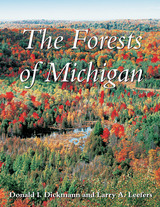 The Forests of Michigan
Donald I. Dickmann and Larry A. Leefers
University of Michigan Press, 2003 No book currently on bookstore shelves explores, as The Forests of Michigan does, the natural history, ecology, management, economic importance, and use of the rich and varied forests that cover about half of the state's 36.3 million acres. The authors look at the forests, where they are, how they got to be, and their present-day usage, using the story of Michigan forests as a backdrop for the state's history, including its archaeology.
The Forests of Michigan explores how the forests came back after the great Wisconsin glacier began to recede over 12,000 years ago, and how they recovered from the onslaught of unrestrained logging and wildfire that, beginning in the mid-1800s, virtually wiped them out. The emphasis of the book is on sustaining for the long term the forests of the state, with a view of sustainability that builds not only upon the lessons learned from native peoples' attitude and use of trees but also on the latest scientific principles of forest ecology and management.
Generously illustrated and written in an engaging style, The Forests of Michigan sees the forest and the trees, offering both education and delight. "As forest scientists," the authors note, "we opted for a hearty serving of meat and potatoes; anyone who reads this book with the intention of learning something will not be disappointed. Nonetheless, we do include some anecdotal desserts, too."
Donald I. Dickmann is Professor of Forestry at Michigan State University and holds a doctorate from the University of Wisconsin. He is the author of The Culture of Poplars. Larry A. Leefers is Associate Professor in the Department of Forestry at Michigan State University. He holds a doctorate from Michigan State University.
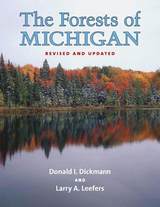 The Forests of Michigan, Revised Ed.
Donald I. Dickmann and Larry A. Leefers
University of Michigan Press, 2016 Completely revised and updated, this new edition of The Forests of Michigan takes a comprehensive look at the natural history, ecology, management, economic importance, and use of the rich and varied forests that cover about half of Michigan's 36.3 million acres. The book explores how the forests regrew after the great Wisconsin glacier began to recede over 12,000 years ago, and how they recovered from the onslaught of unrestrained logging and wildfire that, beginning in the mid-1800s, virtually wiped them out. The emphasis of the book is on long-term efforts to sustain the state’s forests, with a view of sustainability that builds not only upon the lessons learned from native peoples' attitude and use of trees, but also on the latest scientific principles of forest ecology and management. Generously illustrated and written in an engaging style, The Forests of Michigan sees the forest and the trees, offering both education and delight.
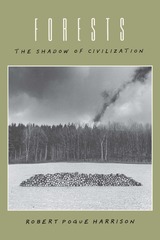 Forests: The Shadow of Civilization
Robert Pogue Harrison
University of Chicago Press, 1992 In this wide-ranging exploration of the role of forests in Western thought, Robert Pogue Harrison enriches our understanding not only of the forest's place in the cultural imagination of the West, but also of the ecological dilemmas that now confront us so urgently. Consistently insightful and beautifully written, this work is especially compelling at a time when the forest, as a source of wonder, respect, and meaning, disappears daily from the earth.
"Forests is one of the most remarkable essays on the human place in nature I have ever read, and belongs on the small shelf that includes Raymond Williams' masterpiece, The Country and the City. Elegantly conceived, beautifully written, and powerfully argued, [Forests] is a model of scholarship at its passionate best. No one who cares about cultural history, about the human place in nature, or about the future of our earthly home, should miss it.—William Cronon, Yale Review
"Forests is, among other things, a work of scholarship, and one of immense value . . . one that we have needed. It can be read and reread, added to and commented on for some time to come."—John Haines, The New York Times Book Review
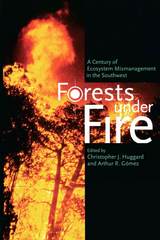 Forests under Fire: A Century of Ecosystem Mismanagement in the Southwest
Edited by Christopher J. Huggard and Arthur R. Gómez
University of Arizona Press, 2001 The devastating fire that swept through Los Alamos, New Mexico, in the spring of 2000 may have been caused by one controlled burn gone wild, but it was far from an isolated event. All through the twentieth century, our national forests have been under assault from all sides: first ranchers and loggers laid their claims to our national forests, then recreationists and environmentalists spoke up for their interests. Who are our national forests really for?
In this book, leading environmental historians show us what has been happening to these fragile woodlands. Taking us from lumber towns to Indian reservations to grazing lands, Forests under Fire reveals the interaction of Anglos, Hispanics, and Native Americans with the forests of the American Southwest. It examines recent controversies ranging from red squirrel conservation on Mt. Graham to increased tourism in our national forests. These case studies offer insights into human-forest relationships in places such as the Coconino National Forest, the Vallecitos Sustained Yield Unit, and the Gila Wilderness Area while also drawing on issues and concerns about similar biospheres in other parts of the West.
Over the past century, forest management has evolved from a field dominated by the "conservationist" perspective—with humans exploiting natural resources-to one that emphasizes biocentrism, in which forests are seen as dynamic ecosystems. Yet despite this progressive shift, the assault on our forests continues through overgrazing of rangelands, lumbering, eroding mountainsides, fire suppression, and threats to the habitats of endangered species. Forests under Fire takes a closer look at the people calling the shots in our national forests, from advocates of timber harvesting to champions of ecosystem management, and calls for a reassessment of our priorities—before our forests are gone.
Contents
Introduction: Toward a Twenty-First-Century Forest Ecosystem Management Strategy / Christopher J. Huggard
Industry and Indian Self-Determination: Northern Arizona’s Apache Lumbering Empire, 1870-1970 / Arthur R. Gómez
A Social History of McPhee: Colorado’s Largest Lumber Town / Duane A. Smith
The Vallecitos Federal Sustained-Yield Unit: The (All Too) Human Dimension of Forest Management in Northern New Mexico, 1945-1998 / Suzanne S. Forrest
Grazing the Southwest Borderlands: The Peloncillo-Animas District of the Coronado National Forest in Arizona and New Mexico, 1906-1996 / Diana Hadley
America’s First Wilderness Area: Aldo Leopold, the Forest Service, and the Gila of New Mexico, 1924-1980 / Christopher J. Huggard
"Where There’s Smoke": Wildfire Policy and Suppression in the American Southwest / John Herron
Struggle in an Endangered Empire: The Search for Total Ecosystem Management in the Forests of Southern Utah, 1976-1999 / Thomas G. Alexander
Biopolitics: A Case Study of Political Influence on Forest Management Decisions, Coronado National Forest, Arizona, 1980s-1990s / Paul W. Hirt
Epilogue: Seeing the Forest Not for the Trees: The Future of Southwestern Forests in Retrospect / Hal K. Rothman
 Foretelling the End of Capitalism: Intellectual Misadventures since Karl Marx
Francesco Boldizzoni
Harvard University Press, 2020 Intellectuals since the Industrial Revolution have been obsessed with whether, when, and why capitalism will collapse. This riveting account of two centuries of failed forecasts of doom reveals the key to capitalism’s durability.
Prophecies about the end of capitalism are as old as capitalism itself. None have come true. Yet, whether out of hope or fear, we keep looking for harbingers of doom. In Foretelling the End of Capitalism, Francesco Boldizzoni gets to the root of the human need to imagine a different and better world and offers a compelling solution to the puzzle of why capitalism has been able to survive so many shocks and setbacks.
Capitalism entered the twenty-first century triumphant, its communist rival consigned to the past. But the Great Recession and worsening inequality have undermined faith in its stability and revived questions about its long-term prospects. Is capitalism on its way out? If so, what might replace it? And if it does endure, how will it cope with future social and environmental crises and the inevitable costs of creative destruction? Boldizzoni shows that these and other questions have stood at the heart of much analysis and speculation from the early socialists and Karl Marx to the Occupy Movement. Capitalism has survived predictions of its demise not, as many think, because of its economic efficiency or any intrinsic virtues of markets but because it is ingrained in the hierarchical and individualistic structure of modern Western societies.
Foretelling the End of Capitalism takes us on a fascinating journey through two centuries of unfulfilled prophecies. An intellectual tour de force and a plea for political action, it will change our understanding of the economic system that determines the fabric of our lives.
 Forever 17: Coming of Age in the German Asylum System
Ulrike Bialas
University of Chicago Press, 2023 An exploration of how age affects the experience and life prospects of asylum-seekers in Germany.
Heartbreaking images of children in distress have propelled some of the most urgent calls for action on immigration crises, and that compassion often affects how state asylum policies are structured. In Germany, for example, the immigration system is engineered to protect minors, which leads to unintended consequences for migrants.
In Forever 17, Ulrike Bialas follows young African and Central Asian migrants in Germany as they navigate that system. Without official paperwork or even, in many cases, knowledge of their exact age, migrants must decide how to present their complicated life stories to government officials. They quickly realize that their age can have an outsized effect on the outcome of their cases. A migrant under 18, for example, can’t be deported, but might instead be placed in a youth home, where they will be subject to strict curfew laws. An 18-year-old adult, on the other hand, can get permission to work, but not opportunities to go to school.
Regardless of their age—actual or assumed—migrants face great difficulties. Those classified as minors must live with the psychological burden of being treated like children, while those classified as adults must live without the practical support and legal protections reserved for minors. The significance of age stands in stark contrast to the ambiguities inherent in its determination. Though Germany’s infamous bureaucracy is designed to issue clear statements about refugees and migrants, the truth is often more complicated, and officials are forced to grapple with the difficult implications of their decisions. Ultimately, Bialas shows, policies surrounding asylum seekers fall dramatically short of their humanitarian ideals. Even those policies designed to help the most vulnerable can lead to outcomes that drastically limit the possibilities for migrants in real need of protection and keep them from leading fulfilling lives.
 Forever Belle: Sallie Ward of Kentucky
Randolph Paul Runyon
University of Tennessee Press, 2024 Forever Belle is the intriguing story of a nineteenth-century socialite, Sallie Ward Lawrence Hunt Armstrong Downs (1827–1896). Beautiful, charming, and kind—but also reckless and bold—she was born in Scott County, Kentucky, to a family of means beset by tragedy—early deaths, suicides, and even murders. Sallie basked in the national spotlight, appearing in newspapers as far-flung as Milwaukee and Charleston, written up for her exploits, which included such scandalous behavior as smoking cigars, dressing in “Turkish pantalets,” wearing rouge, and getting divorced.
Such a character invites romanticizing, and in this new biography, Randolph Paul Runyon does much to ground Sallie Ward in reality, fact-checking stories such as her infamous horse ride through the Louisville market house and examining his subject in the context of her wealthy family. Runyon carefully details his subject’s life, beginning with her aristocratic origins as the descendant of slaveowners, merchants, and politicians who stole land from Native groups and grew rich off the labor of enslaved people. He accurately covers Sallie’s madcap adventures and charitable actions, faithfully representing her legacy as a Kentuckian, a mother, and a grandmother. Illustrated with images of the family, their property, and their lavish grave markers, this volume provides an entertaining and informative glimpse into the world of antebellum privilege in a border state, as well as an examination of the birth of celebrity for its own sake. Forever Belle, finally, is also the story of an early if conflicted feminist: a woman who believed she should have control over her own appearance, actions, political views, and marital status.
 Forever Broke: How Baby Boomers are Bankrupting the Millennial Generation
Andrew Stiles
Templeton Press, 2018
Rising journalist and fellow millennial Andrew Stiles is all too familiar with the financial realities of his generation—inescapable student debt, insufficient jobs, and the sort of apathetic response to the inevitable Social Security drainage that will leave them empty-handed in old age. But rather than resigning or whining, Stiles employs both humor and research to illustrate what is turning out to be a “bleakenomic” future for millennials.
Some of his key findings include:
- U.S. debt is approaching 100 percent of GDP, the highest level since World War II.
- By 2050, debt is on track to reach an unprecedented 145 percent of GDP. Under one pessimistic (but probably more realistic) scenario, CBO estimates that debt could rise to 244 percent of GDP, which means lights out.
- By 2050, federal spending is projected to exceed 29 percent of GDP, levels not seen since the height of World War II. We’re on track to spending more money on baby boomers in retirement than we did to defeat the Nazis.
- Since 1984, the median net worth for households headed by someone under the age of 35 has declined 68 percent. For retirement age households, net worth has increased 42 percent over that same period. The result is the largest generational wealth gap in history. Boomers did better than their kids in early adulthood, and will do better than their kids in retirement.
- As millennials remain childless and single for longer, they face one of the highest tax rates (16.9 percent) for their demographic in the developed world.
The millennial reality is harsh, but Stiles does not wallow in it. Rather, he uses the data as a slap in the face to shame boomers and wake up millennials to save, vote, and work for change in a system that can’t continue.
 Forever Doo-Wop: Race, Nostalgia, and Vocal Harmony
John Michael Runowicz
University of Massachusetts Press, 2010 Music can be a storehouse for emotional, social, and cultural experiences that deepen and acquire greater value over time. This is a book about a particular genre of vocal harmony music called doo-wop that has accrued deep meaning and affective power among Americans since its inception in the aftermath of World War II. Although the first doo-wop singers were primarily young black males in major American cities, it wasn't long before white working-class teenagers began emulating their rhythm-and-blues harmonies. The racial exchange of this distinctive genre and the social bonding it engendered have had a significant and lasting impact on American musical culture.
In Forever Doo-Wop, John Runowicz traces the history of this music from its origins in nineteenth-century barbershop quartets through its emergence in the postwar era to its nostalgic adulthood from the mid-1960s to today. The book is based on interviews he has conducted and observations he has made over the last twenty-two years working as guitarist, musical director, and second tenor with one of the legendary doo-wop groups, the Cadillacs, on what is popularly known as the "oldies circuit." As a graduate student, he broadened his research to include the wider doo-wop community.
Forever Doo-Wop invites readers to gaze through a window on our society and culture where certain truths are revealed about how white and black Americans coexist and interact, about how popular music functions as a vehicle for nostalgia, and about the role of music making over a long lifetime.
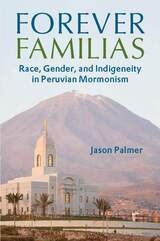 Forever Familias: Race, Gender, and Indigeneity in Peruvian Mormonism
Jason Palmer
University of Illinois Press, 2024 Peruvian members of the Church of Jesus Christ of Latter-day Saints face the dilemma of embracing their faith while finding space to nourish their Peruvianness. Jason Palmer draws on eight years of fieldwork to provide an on-the-ground look at the relationship between Peruvian Saints and the racial and gender complexities of the contemporary Church. Peruvian Saints discovered that the foundational ideas of kinship and religion ceased being distinct categories in their faith. At the same time, they came to see that LDS rituals and reenactments placed coloniality in opposition to the Peruvians’ indigenous roots and family against the more expansive Peruvian idea of familia. In part one, Palmer explores how Peruvian Saints resolved the first clash by creating the idea of a new pioneer indigeneity that rejected victimhood in favor of subtle engagements with power. Part two illuminates the work performed by Peruvian Saints as they stretched the Anglo Church’s model of the nuclear family to encompass familia.
Forever Foreigners or Honorary Whites?: The Asian Ethnic Experience Today
Mia Tuan
Rutgers University Press, 1999 What does it mean to be an Asian-American in the United States today? Are Asian-Americans considered "honorary whites" or forever thought of as "foreigners?" Mia Tuan examines the salience and meaning of ethnicity for later generation Chinese- and Japanese-Americans, and asks how their concepts of ethnicity differ from that of white ethnic Americans. She interviewed 95 middle-class Chinese and Japanese Californians and analyzes the importance of ethnic identities and the concept of becoming a "real" American for both Asian and white ethnics. She asks her subjects about their early memories and experiences with Chinese/Japanese culture; current lifestyle and emerging cultural practices; experiences with racism and discrimination; and attitudes toward current Asian immigration.
 Forever Hong Kong: A Global City's Decolonization Struggle
Ching Kwan Lee
Harvard University Press, 2025 An on-the-ground account of the dramatic 2019 Hong Kong protests, showing how they represent the latest stage of a decades-old decolonization struggle.
Long known for its glamour and affluence, Hong Kong shocked the world in 2019 when millions of its citizens took to the streets in protest. For more than six months, Hong Kongers braved the police’s often violent suppression. At the forefront were young adults fighting not just for universal suffrage but for their vision of a good society, a just economy, rule of law, and a future of self-determination.
Forever Hong Kong takes readers deep inside this improbable decolonization struggle in one of the global centers of capitalism, providing granular insight into a movement that had been gestating for decades. Caught between the relentlessly encroaching Chinese party-state and the kingpins of international commerce—for whom political complacency is the foundation of a stable and profitable business environment—are Hong Kongers themselves. They have inherited an island long under British and now Chinese rule, while maintaining a strong, distinct identity to be defended at all costs.
Offering a reflective history, a vivid ethnography, and a piercing analysis of political economy, Ching Kwan Lee tells the story of her native city at a pivotal moment of geopolitical rivalry between China and the West. Her novel analysis of how colonized subjects have transformed into agents of history breaks new ground for the study of decolonization worldwide.
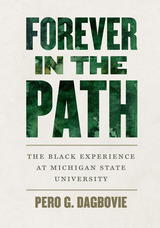 Forever in the Path: The Black Experience at Michigan State University
Pero G Dagbovie
Michigan State University Press, 2025 Forever in the Path: The Black Experience at Michigan State University offers a sweeping overview of the Black experience at America’s first agricultural college from the 1890s through the late twentieth century. In exploring the personalities, important events, and key turning points of Black life at the university, this book deftly blends intellectual history, social history, educational history, institutional history, and the African American biographical tradition. Pero G. Dagbovie depicts and imagines how his numerous subjects’ upbringings and experiences at the institution informed their futures, and how they benefitted from and contributed to MSU’s vision, mission, and transformative role in the history of higher education.
Michigan State University—founded in 1855 as the Agricultural College of the State of Michigan—has a fascinating past, a history shaped by vacillating local and national contexts as well as by people from different walks of life. The first Black students arrived on campus during the late nineteenth and early twentieth centuries, and the first full-time Black faculty member was hired in the late 1940s. Before and after the modern Civil Rights Movement, African Americans from various backgrounds were transformed by MSU while also profoundly contributing in vital ways to the institution’s growth and evolving identity.
 Forever New: The Speeches of James Wright, President of Dartmouth College, 1998–2009
James Wright
Dartmouth College Press, 2012 Jim Wright is an unabashed optimist. Reading his speeches, it doesn’t take long to see that he believes in the fundamental values that shaped the American republic: opportunity and accessibility, individuality and a shared sense of community. He carried this idealism into his presidency of Dartmouth College and, indeed, throughout his career as teacher and historian. At heart, Jim Wright was always a teacher. His election to the presidency of Dartmouth College gave him the opportunity not only to lead the college he loved, but also to use the presidency as a bully pulpit to encourage his students to make a positive difference in the world. The speeches gathered in this collection, particularly the annual convocation and commencement addresses, illustrate that calling. It is in these addresses that he was the most intentional about his goals and his aspirations for Dartmouth, for the Dartmouth faculty, and ultimately for Dartmouth students.
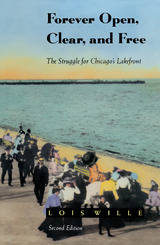 Forever Open, Clear, and Free: The Struggle for Chicago's Lakefront
Lois Wille
University of Chicago Press, 1991 Of the thirty miles of Lake Michigan shoreline within the city limits of Chicago, twenty-four miles is public park land. The crown jewels of its park system, the lakefront parks bewitch natives and visitors alike with their brisk winds, shady trees, sandy beaches, and rolling waves. Like most good things, the protection of the lakefront parks didn't come easy, and this book chronicles the hard-fought and never-ending battles Chicago citizens have waged to keep them "forever open, clear, and free."
Illustrated with historic and contemporary photographs, Wille's book tells how Chicago's lakefront has survived a century of development. The story serves as a warning to anyone who thinks the struggle for the lakefront is over, or who takes for granted the beauty of its public beaches and parks.
"A thoroughly fascinating and well-documented narrative which draws the reader into the sights, smells and sounds of Chicago's story. . . . Everyone who cares about the development of land and its conservation will benefit from reading Miss Wille's book."—Daniel J. Shannon, Architectural Forum
"Not only good reading, it is also a splendid example of how to equip concerned citizens for their necessary participation in the politics of planning and a more livable environment."—Library Journal
 The Forever Season
Don Keith
University of Alabama Press, 2002 This tale of youth and the immutable forces of society arrayed against its innocence and optimism has been called the best football novel in years. I died exactly the way I lived.” So begins the astonishing story of C. P. (Corinthians Phillipians) McKay, a star football player and passionate student who loves poetry. C. P. is a young man who appears to have everything going for him. But his downfall begins when he receives a scholarship to a major university. There, he finds his dream blocked from all directions by a ruthless coach, an unethical university president, and a cynical professor as he attempts to play the game he loves, satisfy his desire for knowledge, and guard his integrity.
Said to rival John Grisham’s A Time to Kill among debut novels, The Forever Season was first published by St. Martin’s Press in 1995. Bookpage proclaimed, “It is so much more than a sports story. . . . As understated and as clearly written as the better work of Erskine Caldwell. And as shocking!” The Chattanooga Free Press described it as “a fast-paced, funny and poignant look at coming of age [with] vivid characters [and] well-drawn witty prose [that] will engage readers who don’t know a clip from a couplet.” In The Forever Season, Don Keith writes with a concise, hard-edged pen about a subject he knows well—the South, its trailer park culture, and its passion for gridiron glory—while exploring universal themes of fumbling youth and innocence lost.
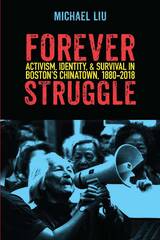 Forever Struggle: Activism, Identity, and Survival in Boston's Chinatown, 1880–2018
Michael Liu
University of Massachusetts Press, 2020 Chinatown has a long history in Boston. Though little documented, it represents the city's most sustained neighborhood effort to survive during eras of hostility and urban transformation. It has been wounded and transformed, slowly ceding ground; at the same time, its residents and organizations have gained a more prominent voice over their community's fate.
In writing about Boston Chinatown's long history, Michael Liu, a lifelong activist and scholar of the community, charts its journey and efforts for survival—from its emergence during a time of immigration and deep xenophobia to the highway construction and urban renewal projects that threatened the neighborhood after World War II to its more recent efforts to keep commercial developers at bay. At the ground level, Liu depicts its people, organizations, internal battles, and varied and complex strategies against land-taking by outside institutions and public authorities. The documented courage, resilience, and ingenuity of this low-income immigrant neighborhood of color have earned it a place amongst our urban narratives. Chinatown has much to teach us about neighborhood agency, the power of organizing, and the prospects of such neighborhoods in rapidly growing and changing cities.
 Forever Suspect: Racialized Surveillance of Muslim Americans in the War on Terror
Selod, Saher
Rutgers University Press, 2018 The declaration of a “War on Terror” in the aftermath of the September 11, 2001 terrorist attacks brought sweeping changes to the American criminal justice and national security systems, as well as a massive shift in the American public opinion of both individual Muslims and the Islamic religion generally. Since that time, sociologist Saher Selod argues, Muslim Americans have experienced higher levels of racism in their everyday lives. In Forever Suspect, Selod shows how a specific American religious identity has acquired racial meanings, resulting in the hyper surveillance of Muslim citizens. Drawing on forty-eight in-depth interviews with South Asian and Arab Muslim Americans, she investigates how Muslim Americans are subjected to racialized surveillance in both an institutional context by the state and a social context by their neighbors and co-workers. Forever Suspect underscores how this newly racialized religious identity changes the social location of Arabs and South Asians on the racial hierarchy further away from whiteness and compromises their status as American citizens.
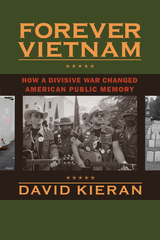 Forever Vietnam: How a Divisive War Changed American Public Memory
David Kieran
University of Massachusetts Press, 2014 Four decades after its end, the American war in Vietnam still haunts the nation's collective memory. Its lessons, real and imagined, continue to shape government policies and military strategies, while the divisions it spawned infect domestic politics and fuel the so-called culture wars. In Forever Vietnam, David Kieran shows how the contested memory of the Vietnam War has affected the commemoration of other events, and how those acts of remembrance have influenced postwar debates over the conduct and consequences of American foreign policy.
Kieran focuses his analysis on the recent remembrance of six events, three of which occurred before the Vietnam War and three after it ended. The first group includes the siege of the Alamo in 1836, the incarceration of Union troops at Andersonville during the Civil War, and the experience of American combat troops during World War II. The second comprises the 1993 U.S. intervention in Somalia, the crash of United Airlines Flight 93 on September 11, 2001, and the Iraq and Afghanistan wars.
In each case a range of actors—military veterans, policymakers, memorial planners, and the general public—used memorial practices associated with the Vietnam War to reinterpret the contemporary significance of past events. A PBS program about Andersonville sought to cultivate a sense of national responsibility for the My Lai massacre. A group of Vietnam veterans occupied the Alamo in 1985, seeing themselves as patriotic heirs to another lost cause. A World War II veteran published a memoir in 1980 that reads like a narrative of combat in Vietnam. Through these and other examples, Forever Vietnam reveals not only the persistence of the past in public memory but also its malleability in the service of the political present.
Foreword to The Past: A Cultural History of the Baltic People
Endre Bojtar
Central European University Press, 2000 Over time at least four meanings have been attributed to the term 'Baltic' - drawing on thirty years of extensive research, Foreword to the Past is the first modern introduction to the enigma of the Baltic origins and the self-identification of the Baltic people. The book is divided into three distinctive parts: the first part recounts the history of the Baltic peoples relying on archaeological sources; the second part provides an objective linguistic history and a description of the Baltic languages; the third part provides an original and fresh insight into mythology in the ancient history of the Baltic peoples.
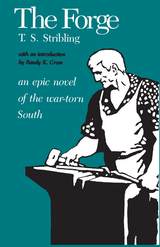 The Forge
Thomas S. Stribling
University of Alabama Press, 1985 The first book in T. S. Stribling's award-winning Vaiden Trilogy about life in north Alabama at the onset, during, and after the Civil War
Originally published in 1931, The Forge introduces the Vaiden family, residents of the rural north Alabama of Stribling’s own youth. The Vaidens are a family of white yeoman farmers who scratch out a living in the social and financial shadow of the Lacefields, masters of an opulent plantation nearby.
The novel opens on Alabama’s secession and the onset of the Civil War. It traces the story of Miltiades Vaiden, who enlists in the Confederate army, and explores the ways the Vaidens, Lacefields, and freed slaves attempt to adapt to the collapse of southern society on the home front.
After The Forge, Stribling continued the Vaiden saga in 1932 with The Store, which earned him the Pulitzer Prize. He completed the trilogy in 1934 with The Unfinished Cathedral. Together, the three books paint a portrait of the agrarian South of the mid-nineteenth century, its destruction, and the beginnings of a mercantile future.
The Forge and the Crucible: The Origins and Structure of Alchemy
Mircea Eliade
University of Chicago Press, 1979 Primitive man's discovery of the ability to change matter from one state to another brought about a profound change in spiritual behavior. In The Forge and the Crucible, Mircea Eliade follows the ritualistic adventures of these ancient societies, adventures rooted in the people's awareness of an awesome new power.
The new edition of The Forge and the Crucible contains an updated appendix, in which Eliade lists works on Chinese alchemy published in the past few years. He also discusses the importance of alchemy in Newton's scientific evolution.
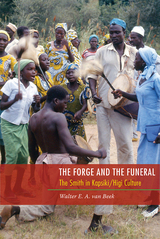 The Forge and the Funeral: The Smith in Kapsiki/Higi Culture
Walter E. A. van Beek
Michigan State University Press, 2015 Throughout Africa one craft among many stands out: that of the blacksmith. In many African cultures, smiths occupy a significant position, not just as artisans engaging in a difficult craft but also as special people. Often they perform other crafts, as well, and make up a somewhat separate group inside society. The Forge and the Funeral describes the position of the smith in the culture of the Kapsiki/Higi of northern Cameroon and northeastern Nigeria. Situated in the Mandara Mountains and straddling the border of these two countries, Kapsiki culture forms a specific and highly relevant example of the phenomenon of the smith in Africa. As an endogamous group of about 5 percent of the population, Kapsiki smiths perform an impressive array of crafts and specializations, combining magico-religious functions with metalwork, in particular as funeral directors, as well as with music and healing. The Forge and the Funeral gives an intimate description and analysis of this group, based upon the author’s four decades–long involvement with the Kapsiki/Higi. Description and analysis are set within the more general scholarly debates about the dynamics of professional closure—including the notions of caste and guild—and also consider the deep history of iron and brass in Africa.
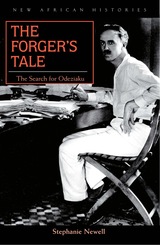 The Forger’s Tale: The Search for Odeziaku
Stephanie Newell
Ohio University Press, 2006 Between 1905 and 1939 a conspicuously tall white man with a shock of red hair, dressed in a silk shirt and white linen trousers, could be seen on the streets of Onitsha, in Eastern Nigeria. How was it possible for an unconventional, boy-loving Englishman to gain a social status among the local populace enjoyed by few other Europeans in colonial West Africa? In The Forger’s Tale: The Search for Odeziaku Stephanie Newell charts the story of the English novelist and poet John Moray Stuart-Young (1881–1939) as he traveled from the slums of Manchester to West Africa in order to escape the homophobic prejudices of late-Victorian society. Leaving behind a criminal record for forgery and embezzlement and his notoriety as a “spirit rapper,” Stuart-Young found a new identity as a wealthy palm oil trader and a celebrated author, known to Nigerians as “Odeziaku.” In this fascinating biographical account, Newell draws on queer theory, African gender debates, and “new imperial history” to open up a wider study of imperialism, (homo)sexuality, and nonelite culture between the 1880s and the late 1930s. The Forger’s Tale pays close attention to different forms of West African cultural production in the colonial period and to public debates about sexuality and ethics, as well as to movements in mainstream English literature.
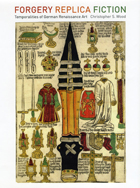 Forgery, Replica, Fiction: Temporalities of German Renaissance Art
Christopher S. Wood
University of Chicago Press, 2008
Today we often identify artifacts with the period when they were made. In more traditional cultures, however, such objects as pictures, effigies, and buildings were valued not as much for their chronological age as for their perceived links to the remote origins of religions, nations, monasteries, and families. As a result, Christopher Wood argues, premodern Germans tended not to distinguish between older buildings and their newer replacements, or between ancient icons and more recent forgeries.
But Wood shows that over the course of the fifteenth and early sixteenth centuries, emerging replication technologies—such as woodcut, copper engraving, and movable type—altered the relationship between artifacts and time. Mechanization highlighted the artifice, materials, and individual authorship necessary to create an object, calling into question the replica’s ability to represent a history that was not its own. Meanwhile, print catalyzed the new discipline of archaeological scholarship, which began to draw sharp distinctions between true and false claims about the past. Ultimately, as forged replicas lost their value as historical evidence, they found a new identity as the intentionally fictional image-making we have come to understand as art.
 Forget Burial: HIV Kinship, Disability, and Queer/Trans Narratives of Care
Marty Fink
Rutgers University Press, 2021 Finalist for the LGBTQ Nonfiction Award from Lambda Literary
Queers and trans people in the 1980s and early ‘90s were dying of AIDS and the government failed to care. Lovers, strangers, artists, and community activists came together take care of each other in the face of state violence. In revisiting these histories alongside ongoing queer and trans movements, this book uncovers how early HIV care-giving narratives actually shape how we continue to understand our genders and our disabilities. The queer and trans care-giving kinships that formed in response to HIV continue to inspire how we have sex and build chosen families in the present. In unearthing HIV community newsletters, media, zines, porn, literature, and even vampires, Forget Burial bridges early HIV care-giving activisms with contemporary disability movements. In refusing to bury the legacies of long-term survivors and of those we have lost, this book brings early HIV kinships together with ongoing movements for queer and trans body self-determination.
 Forget English!: Orientalisms and World Literatures
Aamir R. Mufti
Harvard University Press, 2016 A Choice Outstanding Academic Title of the Year
The idea of world literature has garnered much attention recently as a discipline that promises to move humanistic study beyond postcolonial theory and antiquated paradigms of “national” literary traditions. In Forget English! Aamir Mufti scrutinizes the claims made on behalf of world literature by its advocates. The notion of a borderless, egalitarian global literature has obvious appeal, he notes, but behind it lurks the continuing dominance of English as a literary language and a cultural system of international reach.
“Mufti’s historical perspective and insightful analyses of India’s anglophone novel generate constant echoes with the realities of anglophone writings in other cultures.”
—Eva Shan Chou, Times Higher Education
“Mufti’s book is in one sense a quarrel with Salman Rushdie’s overly enthusiastic celebration of English-language ‘postcolonial’ South Asian literature, but more important, the book extends, qualifies, and enriches Edward Said’s work on Orientalism, demonstrating that despite its promise, world literature does not eliminate the dominant role of the Anglophone book market in shaping South Asian literature…Mufti’s book is both accessible and theoretically informed.”
—K. Tölölyan, Choice
 Forget Me Not: The Rise of the British Literary Annual, 1823–1835
Katherine D. Harris
Ohio University Press, 2015 By November 1822, the British reading public had already voraciously consumed both Walter Scott’s expensive novels and Rudolf Ackermann’s exquisite lithographs. The next decade, referred to by some scholars as dormant and unproductive, is in fact bursting with Forget Me Nots, Friendship’s Offerings, Keepsakes, and Literary Souvenirs. By wrapping literature, poetry, and art into an alluring package, editors and publishers saturated the market with a new, popular, and best-selling genre, the literary annual. In Forget Me Not, Katherine D. Harris assesses the phenomenal rise of the annual and its origins in other English, German, and French literary forms as well as its social influence on women, its redefinition of the feminine, and its effects on late nineteenth- and early twentieth-century print culture. Harris adopts an interdisciplinary approach that uses textual and social contexts to explore a forum of subversive femininity, where warfare and the masculine hero were not celebrated. Initially published in diminutive, decoratively bound volumes filled with engravings of popularly recognized artwork and “sentimental” poetry and prose, the annuals attracted a primarily middle-class female readership. The annuals were released each November, making them an ideal Christmas gift, lover’s present, or token of friendship. Selling more than 100,000 copies during each holiday season, the annuals were accused of causing an epidemic and inspiring an “unmasculine and unbawdy age” that lasted through 1860 and lingered in derivative forms until the early twentieth century in both the United States and Europe. The annual thrived in the 1820s and after despite—or perhaps because of—its “feminine” writing and beautiful form.
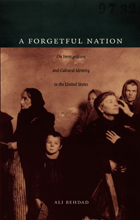 A Forgetful Nation: On Immigration and Cultural Identity in the United States
Ali Behdad
Duke University Press, 2005 In A Forgetful Nation, the renowned postcolonialism scholar Ali Behdad turns his attention to the United States. Offering a timely critique of immigration and nationalism, Behdad takes on an idea central to American national mythology: that the United States is “a nation of immigrants,” welcoming and generous to foreigners. He argues that Americans’ treatment of immigrants and foreigners has long fluctuated between hospitality and hostility, and that this deep-seated ambivalence is fundamental to the construction of national identity. Building on the insights of Freud, Nietzsche, Foucault, and Derrida, he develops a theory of the historical amnesia that enables the United States to disavow a past and present built on the exclusion of others. Behdad shows how political, cultural, and legal texts have articulated American anxiety about immigration from the Federalist period to the present day. He reads texts both well-known—J. Hector St. John de Crèvecoeur’s Letters from an American Farmer, Alexis de Tocqueville’s Democracy in America, and Walt Whitman’s Leaves of Grass—and lesser-known—such as the writings of nineteenth-century nativists and of public health officials at Ellis Island. In the process, he highlights what is obscured by narratives and texts celebrating the United States as an open-armed haven for everyone: the country’s violent beginnings, including its conquest of Native Americans, brutal exploitation of enslaved Africans, and colonialist annexation of French and Mexican territories; a recurring and fierce strand of nativism; the need for a docile labor force; and the harsh discipline meted out to immigrant “aliens” today, particularly along the Mexican border.
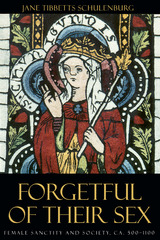 Forgetful of Their Sex: Female Sanctity and Society, ca. 500-1100
Jane Tibbetts Schulenburg
University of Chicago Press, 1998 In this remarkable study of over 2,200 female and male saints, Jane Schulenburg explores women's status and experience in early medieval society and in the Church by examining factors such as family wealth and power, patronage, monasticism, virginity, and motherhood. The result is a unique depiction of the lives of these strong, creative, independent-minded women who achieved a visibility in their society that led to recognition of sanctity.
"A tremendous piece of scholarship. . . . This journey through more than 2,000 saints is anything but dull. Along the way, Schulenburg informs our ideas regarding the role of saints in the medieval psyche, gender-specific identification, and the heroics of virginity." —Library Journal
"[This book] will be a kind of 'roots' experience for some readers. They will hear the voices, haunted and haunting, of their distant ancestors and understand more about themselves." —Christian Science Monitor
"This fascinating book reaches far beyond the history of Christianity to recreate the 'herstory' of a whole gender." —Kate Saunders, The Independent
 Forgetfulness: A Novel
Michael Mejia
University of Alabama Press, 2005 The first part of Forgetfulness is a fictional monograph on the life of the Austrian modernist composer Anton von Webern (1883-1945).The collage-work monograph unfolds in a Webernian sequence of events and silences combining quotes from Webern, his friends and associates, and various historical and literary figures with short scenes, monologues, dialogues, newspaper articles, and theater and film scripts. The result is a lyrical panorama of early twentieth century Vienna.
The second part of the book takes place in Vienna on May 1st, 1986, shortly before the election of Kurt Waldheim as President of the Austrian Republic and shortly after the Chernobyl disaster. The three simultaneous, intertwining monologues of an archivist, a retired opera singer, and the author of the monograph, revisit the themes and events of the first part, commenting on postwar conceptions, analyses, and revisions of the period during which Webern lived, while continuously haunted by the specters of Waldheim and Chernobyl, the persistence of crimes that are immanent, unpaid for, or only dimly, disingenuously recalled.
Forget-Me-Not, Iran: The Story of Keith Ransom-Kehler
Sarah Munro
Intellect Books, 2013 Facing hardship, enduring pain, losing all – such things are a bitter pill to swallow for anyone. For those devoted to the life of the spirit, cruel misfortune – even violent opposition – are familiar stages of the journey of life. Walking a spiritual path in a material world is rarely an easy expedition. But, obedience to the object of her devotion certainly provided Keith Ransom-Kehler with her greatest human challenge and spiritual victory.
Keith was an early American believer in the Bahá'í Faith, the latest of the world's global religions. She was elevated posthumously to the high rank of 'Hand of the Cause of God', and became North America's first martyr for the Faith. Her courageous, albeit largely unknown, contribution to history is the subject of Forget-Me-Not, Iran.
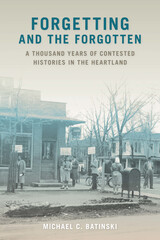 Forgetting and the Forgotten: A Thousand Years of Contested Histories in the Heartland
Michael C. Batinski
Southern Illinois University Press, 2022 WINNER, 2023 Illinois State Historical Society Superior Achievement Award in “Books, Scholarly”!
Revealing the forgotten in community histories
Histories try to forget, as this evocative study of one community reveals. Forgetting and the Forgotten details the nature of how a community forged its story against outsiders. Historian Michael C. Batinski explores the habits of forgetting that enable communities to create an identity based on silencing competing narratives. The white settlers of Jackson County, Illinois, shouldered the hopes of a community and believed in the justice of their labor as it echoed the national story. The county’s pastkeepers, or keepers of the past, emphasizing the white settlers’ republican virtue, chose not to record violence against Kaskaskia people and African Americans and to disregard the numerous transient laborers. Instead of erasing the presence of outsiders, the pastkeepers could offer only silence, but it was a silence that could be broken.
Batinski’s historiography critically examines local historical thought in a way that illuminates national history. What transpired in Jackson County was repeated in countless places throughout the nation. At the same time, national history writing rarely turns to experiences that can be found in local archives such as court records, genealogical files, archaeological reports, coroner’s records, and veterans’ pension files. In this archive, juxtaposed with the familiar actors of Jackson County history—Benningsen Boon, John A. Logan, and Daniel Brush—appear the Sky People, Italian immigrant workers, black veterans of the Civil War and later champions of civil rights whose stories challenge the dominant narrative.
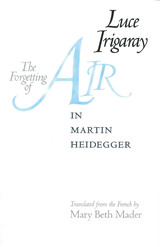 The Forgetting of Air in Martin Heidegger
By Luce Irigaray
University of Texas Press, 1999 French philosopher Luce Irigaray has become one of the twentieth century's most influential feminist thinkers. Among her many writings are three books (with a projected fourth) in which she challenges the Western tradition's construals of human beings' relations to the four elements—earth, air, fire, and water—and to nature. In answer to Heidegger's undoing of Western metaphysics as a "forgetting of Being," Irigaray seeks in this work to begin to think out the Being of sexedness and the sexedness of Being. This volume is the first English translation of L'oubli de l'air chez Martin Heidegger (1983). In this complex, lyrical, meditative engagement with the later work of the eminent German philosopher, Irigaray critiques Heidegger's emphasis on the element of earth as the ground of life and speech and his "oblivion" or forgetting of air. With the other volumes (Elemental Passions and Marine Lover of Friedrich Nietzsche, published elsewhere) in Irigaray's "elemental" series, The Forgetting of Air offers a fundamental rereading of basic tenets in Western metaphysics. And with its emphasis on dwelling and human habitation, it will be important reading not only in the humanities but also in architecture and the environmental sciences.
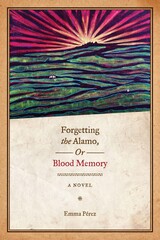 Forgetting the Alamo, Or, Blood Memory: A Novel
By Emma Pérez
University of Texas Press, 2009 Runner-up, Best Historical Fiction in English, Latino Book Awards Competition, 2010 This literary adventure takes place in nineteenth-century Texas and follows the story of a Tejana lesbian cowgirl after the fall of the Alamo. Micaela Campos, the central character, witnesses the violence against Mexicans, African Americans, and indigenous peoples after the infamous battles of the Alamo and of San Jacinto, both in 1836. Resisting an easy opposition between good versus evil and brown versus white characters, the novel also features Micaela's Mexican-Anglo cousin who assists and hinders her progress. Micaela's travels give us a new portrayal of the American West, populated by people of mixed races who are vexed by the collision of cultures and politics. Ultimately, Micaela's journey and her romance with a black/American Indian woman teach her that there are no easy solutions to the injustices that birthed the Texas Republic. This novel is an intervention in queer history and fiction with its love story between two women of color in mid-nineteenth-century Texas. Pérez also shows how a colonial past still haunts our nation's imagination. The battles of the Alamo and San Jacinto offered freedom and liberty to Texans, but what is often erased from the story is that common people who were Mexican, Indian, and Black did not necessarily benefit from the influx of so many Anglo immigrants to Texas. The social themes and identity issues that Pérez explores—political climate, debates over immigration, and historical revision of the American West—are current today.
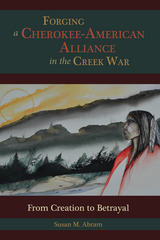 Forging a Cherokee-American Alliance in the Creek War: From Creation to Betrayal
Susan M. Abram
University of Alabama Press, 2015 Explores how the Creek War of 1813–1814 not only affected Creek Indians but also acted as a catalyst for deep cultural and political transformation within the society of the United States’ Cherokee allies
The Creek War of 1813–1814 is studied primarily as an event that impacted its two main antagonists, the defending Creeks in what is now the State of Alabama and the expanding young American republic. Scant attention has been paid to how the United States’ Cherokee allies contributed to the war and how the war transformed their society. In Forging a Cherokee-American Alliance in the Creek War, Susan M. Abram explains in engrossing detail the pivotal changes within Cherokee society triggered by the war that ultimately ended with the Cherokees’ forced removal by the United States in 1838.
The Creek War (also known as the Red Stick War) is generally seen as a local manifestation of the global War of 1812 and a bright footnote of military glory in the dazzling rise of Andrew Jackson. Jackson’s victory, which seems destined only in historic hindsight, was greatly aided by Cherokee fighters. Yet history has both marginalized Cherokee contributions to that conflict and overlooked the fascinating ways Cherokee society changed as it strove to accommodate, rationalize, and benefit from an alliance with the expanding American republic. Through the prism of the Creek War and evolving definitions of masculinity and community within Cherokee society, Abram delineates as has never been done before the critical transitional decades prior to the Trail of Tears.
Deeply insightful, Abram illuminates the ad hoc process of cultural, political, and sometimes spiritual transitions that took place among the Cherokees. Before the onset of hostilities, the Cherokees already faced numerous threats and divisive internal frictions. Abram concisely records the Cherokee strategies for meeting these challenges, describing how, for example, they accepted a centralized National Council and replaced the tradition of conflict-resolution through blood law with a network of “lighthorse regulators.” And while many aspects of masculine war culture remained, it too was filtered and reinterpreted through contact with the legalistic and structured American military.
Rigorously documented and persuasively argued, Abram’s award-winning Forging a Cherokee-American Alliance in the Creek War fills a critical gap in the history of the early American republic, the War of 1812, the Cherokee people, and the South.
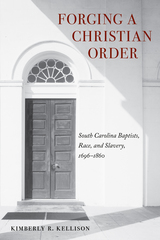 Forging a Christian Order: South Carolina Baptists, Race, and Slavery, 1696–1860
Kimberly Kellison
University of Tennessee Press, 2023 A significant contribution to the historiography of religion in the U.S. south, Forging a Christian Order challenges and complicates the standard view that eighteenth-century evangelicals exerted both religious and social challenges to the traditional mainstream order, not maturing into middle-class denominations until the nineteenth century. Instead, Kimberly R. Kellison argues, eighteenth-century White Baptists in South Carolina used the Bible to fashion a Christian model of slavery that recognized the humanity of enslaved people while accentuating contrived racial differences. Over time
this model evolved from a Christian practice of slavery to one that expounded on slavery as morally right.
Elites who began the Baptist church in late-1600s Charleston closely valued hierarchy. It is not surprising, then, that from its formation the church advanced a Christian model of slavery. The American Revolution spurred the associational growth of the denomination, reinforcing the rigid order of the authoritative master and subservient enslaved person, given that the theme of liberty for all threatened slaveholders’ way of life. In lowcountry South Carolina in the 1790s, where a White minority population lived in constant anxiety over control of the bodies of enslaved men and women, news of revolt in St. Domingue (Haiti) led to heightened fears of Black violence. Fearful of being associated with antislavery evangelicals and, in turn, of being labeled as an enemy of the planter and urban elite, White ministers orchestrated a major transformation in the Baptist construction of paternalism.
Forging a Christian Order provides a comprehensive examination of the Baptist movement in South Carolina from its founding to the eve of the Civil War and reveals that the growth of the Baptist church in South Carolina paralleled the growth and institutionalization of the American system of slavery—accommodating rather than challenging the prevailing social order of the economically stratified Lowcountry.
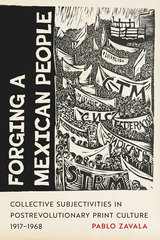 Forging a Mexican People: Collective Subjectivities in Postrevolutionary Print Culture, 1917–1968
Pablo Zavala
University of Arizona Press, 2026 Forging a Mexican People shows how illustrated print culture helped to construct and deconstruct versions of “a people” in postrevolutionary Mexico.
Through meticulous research, Pablo Zavala uncovers the ways photographers, graphic artists, writers, and activists used print culture to challenge hegemonic conceptions of state-guided narratives and forge alternative collective subjectivities. This book offers a fresh perspective on the sociopolitical landscape of postrevolutionary Mexico, revealing how cultural artifacts simultaneously crafted and reflected the people vis-à-vis different political and social categories. By examining print culture, editorial practices, and related processes such as the creation, consumption, and distribution of said culture, Zavala’s research contributes to scholarship that has recently reexamined the construction of nationalism by moving away from the focus on state formation and addressing the horizontal and aesthetic dimensions in products by cultural producers from nonstate and grassroots political sectors.
Zavala examines the conceptual parameters of el pueblo by analyzing El Universal Ilustrado, El Machete, the Taller de Gráfica Popular, the protest graphic art used in Mexico City’s 1968 popular student movement, and graphic art used in California’s Chicano farmworkers’ struggle. Based on in-depth archival research, the work includes primary sources that have never been digitized, offering readers unique insights into the visual manifestations of Mexico’s postrevolutionary identity and their enduring significance.
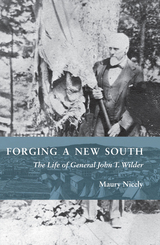 Forging a New South: The Life of General John T. Wilder
Maury Nicely
University of Tennessee Press, 2023 On the morning of August 21, 1861, John T. Wilder, a brash young colonel of a Union mounted infantry unit nicknamed the “Lightning Brigade” ordered his men to open fire on the city of Chattanooga, Tennessee, damaging buildings, sinking steamboats along the riverfront, and injuring men, women, and children. In the midst of Reconstruction and an emerging new South a mere eight years later, Wilder was elected mayor of Chattanooga. While Wilder is most closely associated with the Lightning Brigade, which helped to pioneer the use of both mounted infantry and repeating firearms during the American Civil War, his military accomplishments occupied only five years of his eighty-seven year life. His immense postwar success, however, left a permanent mark on the industrial development of the war-torn South in the second half of the nineteenth century.
It is the comprehensive picture of Wilder’s nearly nine decades that Maury Nicely seeks to capture in Forging a New South: The Life of General John T. Wilder. “For many war heroes, there was not much beyond the war worth telling,” Nicely writes. “Such was not the case with Wilder.” A successful entrepreneur and industrialist, after the war Wilder relocated to East Tennessee, where he created dozens of businesses, factories, mines, hotels, and towns; was elected mayor of the city he had shelled during the war; and cultivated close personal and business relationships with Federal and Confederate veterans alike, helping to create a new South in the wake of a devastating conflict. Presented in two parts and accompanied by more than sixty detailed photographs and maps, Nicely’s balanced study fills a significant void—the first complete biography of General John T. Wilder.
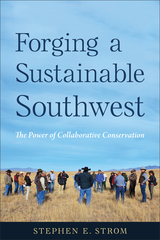 Forging a Sustainable Southwest: The Power of Collaborative Conservation
Stephen E. Strom
University of Arizona Press, 2024 Nature has presented us with a gift of incalculable value: astounding diversity of plant and animal life and interwoven biological and physical systems of intricate complexity and beauty. We are faced today with an existential environmental and moral challenge: can we find common purpose in protecting and cherishing these masterpieces and in restoring a sense of shared responsibility for stewarding our endowment?
Forging a Sustainable Southwest introduces readers to four conservation efforts that provide insight into how diverse groups of citizens have worked collaboratively to develop visions for land use that harmonized sometimes conflicting ecological, economic, cultural, and community needs. Through the voices of more than seventy individuals involved in these efforts, we learn how they’ve developed plans for protecting, restoring, and stewarding lands sustainably; the management and funding tools they’ve used; and their perceptions of the challenges that remain and how to meet them.
This book details efforts to craft the Sonoran Desert Conservation Plan, establish Las Cienegas National Conservation Area, protect Cienega Ranch, and create the Malpai Borderlands Group. It will appeal to anyone interested in grassroots efforts to protect the vital ecosystems of the western United States.
These inspiring stories of citizens and groups working together demonstrate a path for the future built day-by-day: breaking bread at potlucks, holding informal front-porch discussions, and later finding common purpose in community-wide meetings. Might their efforts reveal a path to rebuilding our democratic systems from the ground up?
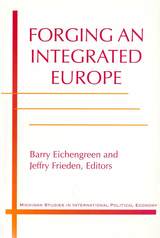 Forging an Integrated Europe
Barry Eichengreen and Jeffry Frieden, Editors
University of Michigan Press, 1998 As European integration has deepened and become more invasive, the tension between the authority of the European Union and the autonomy of member states has increased, while dissatisfaction with the political institutions of the European Union has increased dramatically. How fast and how far European integration will proceed are critical issues for scholars and policymakers in Europe and the United States. Barry Eichengreen and Jeffry Frieden have assembled a group of prominent economists and political scientists to discuss the most important--and most difficult--political and economic issues involved in European integration. The book focuses on three major issues: economic and monetary union, the reform and development of responsive political institutions for the Union, and the enlargement of the Union to include states to the east.
In examining these issues, the writers consider such prob-lems as the trade-off between the benefits of international economic cooperation and the ability to pursue domestic welfare policies; how to increase the political accountability of the institutions of the EU; and how the EU can both be enlarged in membership and deepened in terms of the powers given community institutions.
The contributors are Steven Arndt, Peter Bofinger, Christian de Boisseu, Michele Fratianni, Geoffrey Garrett, Jurgen von Hagen, Ander Todal Jenssen, Ken Kletzer, Lisa Martin, Jonathan Moses, Jean Pisani-Ferry, and Michael Wallerstein, in addition to the editors.
Barry Eichengreen is Professor of Economics, University of California, Berkeley. Jeffry Frieden is Professor of Government, Harvard University.
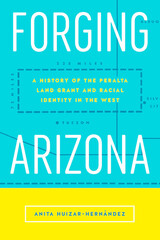 Forging Arizona: A History of the Peralta Land Grant and Racial Identity in the West
Anita Huizar-Hernández
Rutgers University Press, 2019 In Forging Arizona Anita Huizar-Hernández looks back at a bizarre nineteenth-century land grant scheme that tests the limits of how ideas about race, citizenship, and national expansion are forged. During the aftermath of the U.S.-Mexico War and the creation of the current border, a con artist named James Addison Reavis falsified archives around the world to pass his wife off as the heiress to an enormous Spanish land grant so that they could claim ownership of a substantial portion of the newly-acquired Southwestern territories. Drawing from a wide variety of sources including court records, newspapers, fiction, and film, Huizar-Hernández argues that the creation, collapse, and eventual forgetting of Reavis’s scam reveal the mechanisms by which narratives, real and imaginary, forge borders. An important addition to extant scholarship on the U.S Southwest border, Forging Arizona recovers a forgotten case that reminds readers that the borders that divide nations, identities, and even true from false are only as stable as the narratives that define them.
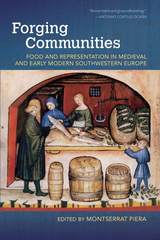 Forging Communities: Food and Representation in Medieval and Early Modern Southwestern Europe
Montserrat Piera
University of Arkansas Press, 2018 Forging Communities explores the importance of the cultivation, provision, trade, and exchange of foods and beverages to mankind’s technological advancement, violent conquest, and maritime exploration. The thirteen essays here show how the sharing of food and drink forged social, religious, and community bonds, and how ceremonial feasts as well as domestic daily meals strengthened ties and solidified ethnoreligious identity through the sharing of food customs. The very act of eating and the pleasure derived from it are metaphorically linked to two other sublime activities of the human experience: sexuality and the search for the divine.
This interdisciplinary study of food in medieval and early modern communities connects threads of history conventionally examined separately or in isolation. The intersection of foodstuffs with politics, religion, economics, and culture enhances our understanding of historical developments and cultural continuities through the centuries, giving insight that today, as much as in the past, we are what we eat and what we eat is never devoid of meaning.
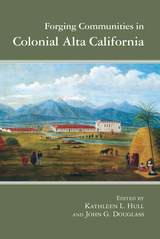 Forging Communities in Colonial Alta California
Edited by Kathleen L. Hull and John G. Douglass
University of Arizona Press, 2018 Between 1769 and 1834, an influx of Spanish, Russian, and then American colonists streamed into Alta California seeking new opportunities. Their arrival brought the imposition of foreign beliefs, practices, and constraints on Indigenous peoples.
Forging Communities in Colonial Alta California reorients understandings of this dynamic period, which challenged both Native and non-Native people to reimagine communities not only in different places and spaces but also in novel forms and practices. The contributors draw on archaeological and historical archival sources to analyze the generative processes and nature of communities of belonging in the face of rapid demographic change and perceived or enforced difference.
Contributors provide important historical background on the effects that colonialism, missions, and lives lived beyond mission walls had on Indigenous settlement, marriage patterns, trade, and interactions. They also show the agency with which Indigenous peoples make their own decisions as they construct and reconstruct their communities. With nine different case studies and an insightful epilogue, this book offers analyses that can be applied broadly across the Americas, deepening our understanding of colonialism and community.
Contributors:
Julienne Bernard
James F. Brooks
John Dietler
Stella D’Oro
John G. Douglass
John Ellison
Glenn Farris
Heather Gibson
Kathleen L. Hull
Linda Hylkema
John R. Johnson
Kent G. Lightfoot
Lee M. Panich
Sarah Peelo
Seetha N. Reddy
David W. Robinson
Tsim D. Schneider
Christina Spellman
Benjamin Vargas
 Forging Deaf Education in Nineteenth-Century France: Biographical Sketches of Bébian, Sicard, Massieu, and Clerc
Ferdinand Berthier
Gallaudet University Press, 2009 In 1811, deaf student Ferdinand Berthier commenced his education at the National Institute for the Deaf in Paris under its director Abbé Sicard and his teachers Auguste Bébian, Jean Massieu, and Laurent Clerc. Their tutelage eventually led Berthier to join the faculty at the Institute and become a life-long proponent of sign language and Deaf culture. Berthier earned fame for instituting the famous silent banquets in Paris in 1834. He also learned to advance his agenda by writing biographies of important figures who advocated sign over oralism to educate deaf French students. Forging Deaf Education in Nineteenth-Century France offers the first translation of Berthier’s biographical sketches of the four men above who influenced him most.
Berthier wrote first about Bébian in 1839, timed to advocate sign language for teaching deaf students after the death of the pro-oralism Institute Director Désiré Ordinaire. Berthier extolled Bébian’s linguistic acumen and his educational philosophy. In later sketches, however, he described Sicard and Massieu in positive terms, but also criticized them for supporting “methodical” signing that conformed to spoken language conventions. In contrast, he lauded Clerc in his portrayal for using “natural” signing to teach deaf students. The clarity of these translations will introduce a brand new audience to Berthier’s biographies shaped by his unswerving beliefs about Deaf French education.
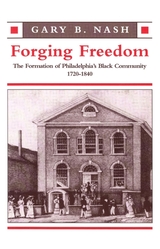 Forging Freedom: The Formation of Philadelphia’s Black Community, 1720–1840
Gary B. Nash
Harvard University Press, 1988 This book is the first to trace the good and bad fortunes, over more than a century, of the earliest large free black community in the United States. Gary Nash shows how, from colonial times through the Revolution and into the turbulent 1830s, blacks in the City of Brotherly Love struggled to shape a family life, gain occupational competence, organize churches, establish neighborhoods and social networks, advance cultural institutions, educate their children in schools, forge a political consciousness, and train black leaders who would help abolish slavery. These early generations of urban blacks—many of them newly emancipated—constructed a rich and varied community life.
Nash’s account includes elements of both poignant triumph and profound tragedy. Keeping in focus both the internal life of the black community and race relations in Philadelphia generally, he portrays first the remarkable vibrancy of black institution-building, ordinary life, and relatively amicable race relations, and then rising racial antagonism. The promise of a racially harmonious society that took form in the postrevolutionary era, involving the integration into the white republic of African people brutalized under slavery, was ultimately unfulfilled. Such hopes collapsed amid racial conflict and intensifying racial discrimination by the 1820s. This failure of the great and much-watched “Philadelphia experiment” prefigured the course of race relations in America in our own century, an enduringly tragic part of this country’s past.
Forging Gay Identities: Organizing Sexuality in San Francisco, 1950-1994
Elizabeth A. Armstrong
University of Chicago Press, 2002 Unlike many social movements, the gay and lesbian struggle for visibility and rights has succeeded in combining a unified group identity with the celebration of individual differences. Forging Gay Identities explores how this happened, tracing the evolution of gay life and organizations in San Francisco from the 1950s to the mid-1990s.
Forging Identity: The Story of Carlos Nielbock's Detroit
Paul J Draus
Michigan State University Press, 2025 An urban sociologist befriends a visionary Detroit craftsman, artist, and inventor. Over the course of the next several years Paul Draus records how Carlos Nielbock’s life experiences act as a lens that refracts the key challenges facing the city of Detroit and presents the city’s redevelopment as an evolving high-stakes drama. Combining sociological context and theory, Draus chronicles Nielbock’s mixed-race upbringing in postwar Germany, his journey to find his Black father in 1980s Detroit, his struggles with racial and cultural adversity, and his ambitious artistic vision for Detroit’s future. Direct observations, interviews, and historical research on Detroit’s ascendance, decline, and resurgence underpin Nielbock’s story. The book explores race and identity, craftsmanship and capitalism, and criminal justice and incarceration.
 Forging People: Race, Ethnicity, and Nationality in Hispanic American and Latino/a Thought
Gracia, Jorge J. E.
University of Notre Dame Press, 2011
Forging People explores the way in which Hispanic American thinkers in Latin America and Latino/a philosophers in the United States have posed and thought about questions of race, ethnicity, and nationality, and how they have interpreted the most significant racial and ethnic labels used in Hispanic America in connection with issues of rights, nationalism, power, and identity. Following the first introductory chapter, each of the essays addresses one or more influential thinkers, ranging from Bartolomé de Las Casas on race and the rights of Amerindians; to Simon Bolívar's struggle with questions of how to forge a nation from disparate populations; to modern and contemporary thinkers on issues of race, unity, assimilation, and diversity. Each essay carefully and clearly presents the views of key authors in their historical and philosophical context and provides brief biographical sketches and reading lists, as aids to students and other readers.
“Latin American philosophy has a long history of engagement with issues of race, ethnicity, and nationality. To date, however, there has been no volume that focused on the contributions of the major figures in the Latin American tradition, to illustrate their connections, and to illuminate the context in which much of their work occurred. This volume fills that gap and takes an important step in remedying this shortcoming in the existing philosophical literature, and also in the literature of related fields such as Latin American studies, ethnic studies, and the cross-disciplinary work of race, ethnicity, and nationality.” —Manuel Vargas, University of San Francisco
Forging Political Compromise: Antonín Svehla and the Czechoslovak Republican Party, 1918–1933
Daniel Miller
University of Pittsburgh Press, 1999 Historians have long claimed Czechoslovakia between the world wars as an island of democracy in a sea of dictatorships. The reasons for the survival of democratic institutions in the Czechoslovak First Republic, with its profound divisions, have never been fully explained, partly because for years critical research was thwarted by the communist state. Drawing on information from European archives, Miller pieces together the story of the party and its longtime leader, Antonín Svehla- the "Master of Compromise," who had an extraordinary capacity to mediate between political parties, factions, and individual political leaders. Miller shows how Svehla's official and behind-the-scenes activities in the parliament provided the new state with stability and continuity.
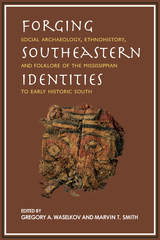 Forging Southeastern Identities: Social Archaeology, Ethnohistory, and Folklore of the Mississippian to Early Historic South
Gregory A. Waselkov
University of Alabama Press, 2017 Forging Southeastern Identities explores the many ways archaeologists and ethnohistorians define and trace the origins of Native Americans’ collective social identity. Forging Southeastern Identities: Social Archaeology and Ethnohistory of the Mississippian to Early Historic South, a groundbreaking collection of ten essays, covers a broad expanse of time—from the ninth to the nineteenth centuries—and focuses on a common theme of identity. These essays represent the various methods used by esteemed scholars today to study how Native Americans in the distant past created new social identities when old ideas of the self were challenged by changes in circumstance or by historical contingencies. Archaeologists, anthropologists, and folklorists working in the Southeast have always recognized the region’s social diversity; indeed, the central purpose of these disciplines is to study peoples overlooked by the mainstream. Yet the ability to define and trace the origins of a collective social identity—the means by which individuals or groups align themselves, always in contrast to others—has proven to be an elusive goal. Here, editors Gregory A. Waselkov and Marvin T. Smith champion the relational identification and categorical identification processes, taken from sociological theory, as effective analytical tools. Taking up the challenge, the contributors have deployed an eclectic range of approaches to establish and inform an overarching theme of identity. Some investigate shell gorgets, textiles, shell trade, infrastructure, specific sites, or plant usage. Others focus on the edges of the Mississippian world or examine colonial encounters between Europeans and native peoples. A final chapter considers the adaptive malleability of historical legend in the telling and hearing of slave narratives.
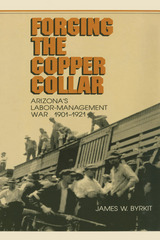 Forging the Copper Collar: Arizona's Labor-Management War of 1901–1921
James W. Byrkit
University of Arizona Press, 1982 Bisbee, Arizona...July 12, 1917...6:30 a.m....
Just after dawn, two thousand armed vigilantes took to the streets of this remote Arizona mining town to round up members and sympathizers of the radical Industrial Workers of the World. Before the morning was over, nearly twelve hundred alleged Wobblies had been herded onto waiting boxcars. By day's end, they had been hauled off to New Mexico.
While the Bisbee Deportation was the most notorious of many vigilante actions of its day, it was more than the climax of a labor-management war—it was the point at which Arizona donned the copper collar. That such an event could occur, James Byrkit contends, was not attributable so much to the marshaling of public sentiment against the I.W.W. as to the outright manipulation of the state's political and social climate by Eastern business interests.
In Forging the Copper Collar, Byrkit paints a vivid picture of Arizona in the early part of this century. He demonstrates how isolated mining communities were no more than mercantilistic colonies controlled by Eastern power, and how that power wielded control over all the Arizona's affairs—holding back unionism, creating a self-serving tax structure, and summarily expelling dissidents.
Because the years have obscured this incident and its background, the writing of Copper Collar involved extensive research and verification of facts. The result is a book that captures not only the turbulence of an era, but also the political heritage of a state.
Forging the World: Strategic Narratives and International Relations
Alister Miskimmon, Ben O'Loughlin, and Laura Roselle, Editors
University of Michigan Press, 2017 Forging the World brings together leading scholars in International Relations (IR) and Communication Studies to investigate how, when, and why strategic narratives shape the structure, politics, and policies of the global system. Put simply, strategic narratives are tools that political actors employ to promote their interests, values, and aspirations for the international order by managing expectations and altering the discursive environment. These narratives define “who we are” and “what kind of world order we want.”
Forgive and Remember: Managing Medical Failure, 2nd Edition
Charles L. Bosk
University of Chicago Press, 2003 On its initial publication, Forgive and Remember emerged as the definitive study of the training and lives of young surgeons. Now with an extensive new preface, epilogue, and appendix by the author, reflecting on the changes that have taken place since the book's original publication, this updated second edition of Charles L. Bosk's classic study is as timely as ever.
Forgive the Body This Failure
Blas Falconer
Four Way Books, 2018 Engaging the past and present, these poems attempt to reconcile loss and longing while also seeking to understand our own impermanence. Written in a plain-spoken voice, they are meditative, elegiac and tender.
 Forgiveness
Vladimir Jankélévitch
University of Chicago Press, 2005 Philosopher Vladimir Jankélévitch has only recently begun to receive his due from the English-speaking world, thanks in part to discussions of his thought by Jacques Derrida, Emmanuel Lévinas, and Paul Ricoeur. His international readers have long valued his unique, interdisciplinary approach to philosophy’s greatest questions and his highly readable writing style. Originally published in 1967, Le Pardon, or Forgiveness, is one of Jankélévitch’s most influential works. In it, he characterizes the ultimate ethical act of forgiving as behaving toward the perpetrator as if he or she had never committed the action, rather than merely forgetting or rationalizing it—a controversial notion when considering events as heinous as the Holocaust. Like so many of Jankélévitch’s works, Forgiveness transcends standard treatments of moral problems, not simply generating a treatise on one subject but incorporating discussions of topics such as free will, giving, creativity, and temporality. Translator Andrew Kelley masterfully captures Jankélévitch’s melodic prose and, in a substantive introduction, reviews his life and intellectual contributions. Forgiveness is an essential part of that legacy, and this indispensable English translation provides key tools for understanding one of the great Western philosophers of the twentieth century.
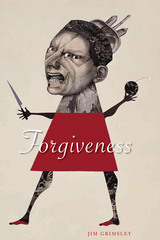 Forgiveness
By Jim Grimsley
University of Texas Press, 2007
"The Lifetime movie of my divorce and crime spree will be entitled Breakdown at Midnight.... Sympathy for my character will be established by my loss of a wildly respectable, lucrative job with Arthur Andersen, a company which turned out to be as crooked as its customers. I will be another orphan of the American Dream gone sour, and eventually I will give in to the so-called dark side of my nature when I strangle Carmine with the strap of her Prada bag, or stab her to death with a survivalist-quality knife, or bludgeon her skull to a bloody pulp with a classic Tiffany lamp; this part of the script will have to wait for the real event to unfold since, though I've decided that tomorrow will be the day I kill her, I have yet to choose how."
—Charley Stranger
Turning headline news into biting social satire, Jim Grimsley exposes the amorality of materialistic America in Forgiveness, a blackly comic tale of a bankrupt accounting executive who dreams of achieving stardom in the only way a pathetic failure can—by murdering his wife. As Charley Stranger imagines the crime, he fantasizes wildly unlikely encounters with celebrities—sharing marital woes with Nicole Kidman over a latte at Starbucks, being interviewed by Barbara Walters—while in real life his wife Carmine incessantly ridicules his inability to perform either in bed or in the marketplace. As Forgiveness veers to its shocking conclusion, it strips bare the corruption of the American Dream—the moral bankruptcy of corporate and political institutions, the hollowness of living in a media-saturated world, the delusion of buying love with luxury goods.
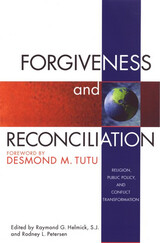 Forgiveness & Reconciliation: Public Policy & Conflict Transformation
Raymond G. Helmick
Templeton Press, 2001 This book brings together a unique combination of experts in conflict resolution and focuses on the role forgiveness can play in the process. It deals with theology, public policy, psychological and social theory, and social policy implementation of forgiveness. This book is essential for libraries, scholars, conflict negotiators, and all people who hope to understand the role of forgiveness in the peace process. The book's first section explores how ideas like "forgiveness" and "reconciliation" are moving out from the seminary and academy into the world of public policy and how these terms have been used and defined in the past. The second section looks at forgiveness and public policy. One of the chapters, by Donald W. Shriver Jr., addresses forgiveness in a secular political forum. The third section of the book draws us to a more thorough analysis of the relationship between forgiveness and reconciliation from voices in the academic and theological community, and the final section highlights the work of practitioners currently working with religion, public policy, and conflict transformation, particularly in areas such as Ireland and Africa. Contributors include Desmond M. Tutu, Rodney L. Petersen, Miroslav Volf, Stanley S. Harakas, Raymond G. Helmick, SJ, Joseph V. Montville, Douglas M. Johnston, Donna Hicks, Donald W. Shriver, Jr., Everett L. Worthington, Jr., John Paul Lederach, Ervin Staub, Laurie Anne Pearlman, John Dawson, Audrey R. Chapman, Olga Botcharova, Anthony da Silva, SJ, Geraldine Smythe, OP, Andrea Bartoli, Ofelia Ortega, and George F. R. Ellis.
 Forgotten Armies: The Fall of British Asia, 1941–1945
Christopher Bayly and Tim Harper
Harvard University Press, 2005 In the early stages of the Second World War, the vast crescent of British-ruled territories stretching from India to Singapore appeared as a massive Allied asset. It provided scores of soldiers and great quantities of raw materials and helped present a seemingly impregnable global defense against the Axis. Yet, within a few weeks in 1941-42, a Japanese invasion had destroyed all this, sweeping suddenly and decisively through south and southeast Asia to the Indian frontier, and provoking the extraordinary revolutionary struggles which would mark the beginning of the end of British dominion in the East and the rise of today's Asian world.
More than a military history, this gripping account of groundbreaking battles and guerrilla campaigns creates a panoramic view of British Asia as it was ravaged by warfare, nationalist insurgency, disease, and famine. It breathes life into the armies of soldiers, civilians, laborers, businessmen, comfort women, doctors, and nurses who confronted the daily brutalities of a combat zone which extended from metropolitan cities to remote jungles, from tropical plantations to the Himalayas. Drawing upon a vast range of Indian, Burmese, Chinese, and Malay as well as British, American, and Japanese voices, the authors make vivid one of the central dramas of the twentieth century: the birth of modern south and southeast Asia and the death of British rule.
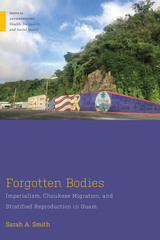 Forgotten Bodies: Imperialism, Chuukese Migration, and Stratified Reproduction in Guam
Sarah A. Smith
Rutgers University Press, 2024 Women from Chuuk, Federated States of Micronesia, who migrate to Guam, a U.S. territory, suffer disproportionately poor reproductive health outcomes. Though their access to the United States is unusually easy, through a unique migration agreement, it keeps them in a perpetual liminal state as nonimmigrants, who never fully belong as part of the United States Chuukese women move to Guam, sometimes with their families but sometimes alone, in search of a better life: for jobs, for the education system, or to access safe health care. Yet, the imperial system they encounter creates underlying conditions that greatly and disproportionately impact their ability to succeed and thrive, negatively impacting their reproductive health. Through clinical and community ethnography, Sarah A. Smith illuminates the way this system stratifies women’s reproduction at structural, social, and individual levels. Readers can visualize how U.S. imperialist policies of benign neglect control the body politic, change the social body, and render individual bodies vulnerable in the twenty-first century but also how people resist.
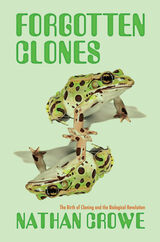 Forgotten Clones: The Birth of Cloning and the Biological Revolution
Nathan Crowe
University of Pittsburgh Press, 2021 Long before scientists at the Roslin Institute in Scotland cloned Dolly the sheep in 1996, American embryologist and aspiring cancer researcher Robert Briggs successfully developed the technique of nuclear transplantation using frogs in 1952. Although the history of cloning is often associated with contemporary ethical controversies, Forgotten Clones revisits the influential work of scientists like Briggs, Thomas King, and Marie DiBerardino, before the possibility of human cloning and its ethical implications first registered as a concern in public consciousness, and when many thought the very idea of cloning was experimentally impossible. By focusing instead on new laboratory techniques and practices and their place in Anglo-American science and society in the mid-twentieth century, Nathan Crowe demonstrates how embryos constructed in the lab were only later reconstructed as ethical problems in the 1960s and 1970s with the emergence of what was then referred to as the Biological Revolution. His book illuminates the importance of the early history of cloning for the biosciences and their institutional, disciplinary, and intellectual contexts, as well as providing new insights into the changing cultural perceptions of the biological sciences after Second World War.
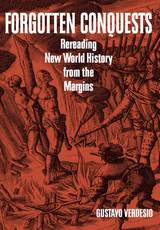 Forgotten Conquests: Rereading New World History from the Margins
Gustavo Verdesio
Temple University Press, 2001 Borrowing from the old adage, we might say that to the victor belongs the history. One of the privileges gained in colonizing the New World was the power to tell the definitive stories of the struggle. The heroic texts depicting the discovery of territories, early encounters with indigenous peoples, and the ultimate subjection of land and cultures to European nation-states all but erase the vanquished. In Forgotten Conquests, Gustavo Verdesio argues that these master narratives represent only one of many possible histories and suggests a way of reading them in order to discover the colonial subjects who did not produce documents.
Verdesio read the key texts relating to the struggles for possession of River Plate's northern shore -- present-day Uruguay. He probes them for traces of conflicts in meaning and the agency of Amerindians, gauchos, Africans, and women -- the subjected peoples that the texts try to silence. The narrators, speaking for their culture, assume the role of knowing subject, repressing all other voices, epistemologies, and acts of resistance. Verdesio's tasks are to listen for those that the Europeans represented as an unintelligible Other, to draw them into the foreground, and to decolonize their histories.
By unpacking these texts, Verdesio shows that from the European point of view, the colonial encounter draws the New World into historical time and ushers in a new concept of knowledge. For the first time, the historian's role is to discover, to interpret eyewitness testimonies and first-hand experience, to write 'a new history of admirable things.' Even in this reconstruction of historical truth, Old World ideology drives the narratives, whose chief purpose is to justify conquest. Forgotten Conquests lays bare the discursive strategies that generated the founding texts of Latin American history and engulfed its subjected peoples in silence for 500 years.
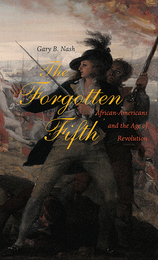 The Forgotten Fifth: African Americans in the Age of Revolution
Gary B. Nash
Harvard University Press, 2006 As the United States gained independence, a full fifth of the country's population was African American. The experiences of these men and women have been largely ignored in the accounts of the colonies' glorious quest for freedom. In this compact volume, Gary B. Nash reorients our understanding of early America, and reveals the perilous choices of the founding fathers that shaped the nation's future.
Nash tells of revolutionary fervor arousing a struggle for freedom that spiraled into the largest slave rebellion in American history, as blacks fled servitude to fight for the British, who promised freedom in exchange for military service. The Revolutionary Army never matched the British offer, and most histories of the period have ignored this remarkable story. The conventional wisdom says that abolition was impossible in the fragile new republic. Nash, however, argues that an unusual convergence of factors immediately after the war created a unique opportunity to dismantle slavery. The founding fathers' failure to commit to freedom led to the waning of abolitionism just as it had reached its peak. In the opening decades of the nineteenth century, as Nash demonstrates, their decision enabled the ideology of white supremacy to take root, and with it the beginnings of an irreparable national fissure. The moral failure of the Revolution was paid for in the 1860s with the lives of the 600,000 Americans killed in the Civil War.
The Forgotten Fifth is a powerful story of the nation's multiple, and painful, paths to freedom.
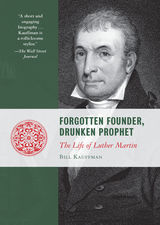 Forgotten Founder, Drunken Prophet: The Life of Luther Martin
Kauffman
Intercollegiate Studies Institute, 2008 The Anti-Federalist Luther Martin of Maryland is known to us—if he is known at all—as the wild man of the Constitutional Convention: a verbose, frequently drunken radical who annoyed the hell out of James Madison, George Washington, Gouverneur Morris, and the other giants responsible for the creation of the Constitution in Philadelphia that summer of 1787. In Bill Kauffman’s rollicking account of his turbulent life and times, Martin is still something of a fitfully charming reprobate, but he is also a prophetic voice, warning his heedless contemporaries and his amnesiac posterity that the Constitution, whatever its devisers’ intentions, would come to be used as a blueprint for centralized government and a militaristic foreign policy.
In Martin’s view, the Constitution was the tool of a counterrevolution aimed at reducing the states to ciphers and at fortifying a national government whose powers to tax and coerce would be frightening. Martin delivered the most forceful and sustained attack on the Constitution ever levied—a critique that modern readers might find jarringly relevant. And Martin’s post-convention career, though clouded by drink and scandal, found him as defense counsel in two of the great trials of the age: the Senate trial of the impeached Supreme Court justice Samuel Chase and the treason trial of his friend Aaron Burr.
Kauffman’s Luther Martin is a brilliant and passionate polemicist, a stubborn and admirable defender of a decentralized republic who fights for the principles of 1776 all the way to the last ditch and last drop. In remembering this forgotten founder, we remember also the principles that once animated many of the earliest—and many later—American patriots.
 The Forgotten Founders on Religion and Public Life
Daniel L. Dreisbach
University of Notre Dame Press, 2009
This interdisciplinary volume brings together essays on eleven of the founders of the American republic--Abigail Adams, Samuel Adams, Oliver Ellsworth, Alexander Hamilton, Patrick Henry, John Jay, Thomas Paine, Edmund Randolph, Benjamin Rush, Roger Sherman, and Mercy Otis Warren--many of whom are either little recognized today or little appreciated for their contributions. The essays focus on the thinking of these men and women on the proper role of religion in public life, including but not limited to the question of the separation of church and state. Their views represent a wide range of opinions, from complete isolation of church and state to tax-supported clergy.
These essays present a textured and nuanced view of the society that came to a consensus on how religion would fit in the public life of the new nation. They reveal that religion was more important in the lives and thinking of many of the founders than is often portrayed and that it took the interplay of disparate and contrasting views to frame the constitutional outline that eventually emerged.
"For more than a decade these three editors, separately and together, have led us to a more nuanced view of the central place of religion in the American founding era. Not only were the political views of famous founders like Adams, Jefferson, and Madison more dependent on religion than their modern secular caricature allows. But many other figures, from varying religious traditions, proved equally critical to forging the original American understanding of constitutional order, democratic liberty, and rule of law. This well-crafted volume introduces a dozen such founding figures and the sterling political accomplishments that they offered the young nation on the strength of their religious convictions." --John Witte, Jr., Emory University
"This excellent collection explores the rich diversity of the American mind at the Founding by attending to the spiritual, political, and intellectual convictions of a dozen men and women prominent in the events of that seminal period but relatively neglected by the historians. It fills a major gap left In the literature with its conventional fixation on the life and work of a handful of luminaries. In doing so, it takes seriously the role of religion in grounding devotion to Whig liberty and common law constitutionalism to form a popular consensus that has endured from 1776 until today. Highly readable and thoroughly sourced, this is a book for anyone interested in American history and politics." --Ellis Sandoz, Moyse Distinguished Professor of Political Science, Louisiana State University
"This collection of well-crafted essays probes the "religion and the founding" question from a fresh angle. Its concentration on the second rank of founders pays rich dividends, since this focus uncovers more variety on religious issues than appear when looking only at the "Big Six" of Washington-Franklin-John Adams-Madison-Hamilton-Jefferson. The pay off is to show not only how deep but also how various were the founders' religious commitments. Historians, but also those concerned about religion in contemporary American politics, should take note--the editors have done a very fine job." --Mark Noll, University of Notre Dame
"There is no book comparable to The Forgotten Founders on Religion and Public Life. It is a collection of eleven essays on the many neglected figures or, in some cases, the neglected church-state views of duly appreciated figures. The book's appeal goes beyond the realm of constitutional doctrine. In addition to constitutional lawyers, constitutional historians, historians of religion in America, and those who study American political thought will all welcome and value the book." --Gerard V. Bradley, University of Notre Dame Law School
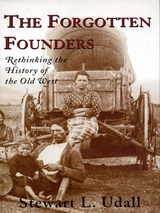 The Forgotten Founders: Rethinking The History Of The Old West
Stewart L. Udall; Foreword by David M. Emmons
Island Press, 2002 "…an impressive new book… [The Forgotten Founders] is a gem that encompasses virtually every aspect of the development of our region." -ROCKY MOUNTAIN NEWS "[Udall] offers a convincing argument that it wasn't the cavalry, fur traders, prospectors, gunslingers or railroad builders who tamed the West; it was 'courageous men and women who made treks into wilderness and created communities in virgin valleys.' Udall's spare prose adds impact to his words." -THE SEATTLE TIMES "The West is so cluttered with misconceptions that it is hard to have a serious discussion about its history." --Wallace Stegner. For most Americans, the "Wild West" popularized in movies and pulp novels -- a land of intrepid traders and explorers, warlike natives, and trigger-happy gunslingers -- has become the true history of the region. The story of the West's development is a singular chapter of history, but not, according to former Secretary of the Interior and native westerner Stewart L. Udall, for the reasons filmmakers and novelists would have us believe. In The Forgotten Founders, Stewart Udall draws on his vast knowledge of and experience in the American West to make a compelling case that the key players in western settlement were the sturdy families who travelled great distances across forbidding terrain to establish communities there. He offers an illuminating and wide-ranging overview of western history and those who have written about it, challenging conventional wisdom on subjects ranging from Manifest Destiny to the importance of Eastern capitalists to the role of religion in westward settlement. Stewart Udall argues that the overblown and ahistorical emphasis on a "wild west" has warped our sense of the past. For the mythical Wild West, Stewart Udall substitutes a compelling description of an Old West, the West before the arrival of the railroads, which was the home place for those he calls the "wagon people," the men and women who came, camped, settled, and stayed. He offers a portrait of the West not as a government creation or a corporate colony or a Hollywood set for feckless gold seekers and gun fighters but as primarily a land where brave and hardy people came to make a new life with their families. From Native Americans to Franciscan friars to Mormon pioneers, these were the true settlers, whose goals, according to Stewart Udall were "amity not conquest; stability, not strife; conservation, not waste; restraint, not aggression." The Forgotten Founders offers a provocative new look at one of the most important chapters of American history, rescuing the Old West and its pioneers from the margins of history where latter-day mythmakers have dumped them. For anyone interested in the authentic history of the American West, it is an important and exciting new work.
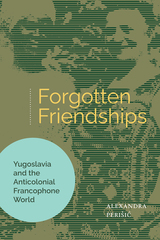 Forgotten Friendships: Yugoslavia and the Anticolonial Francophone World
Alexandra Perišic
Amherst College Press, 2025 Forgotten Friendships: Yugoslavia and the Anticolonial Francophone World examines transnational friendships and alliances between intellectuals from Yugoslavia and the Francophone African and Caribbean world during the mid-twentieth century. The book argues that transnational political friendships helped shape major intellectual movements like Négritude, African socialism, and global socialist feminisms, which surged beyond national, regional, and even diasporic spaces. Blending archival research, literary analysis, and biography, the book fills a significant gap in our understanding of how intellectuals from the Global South and the socialist world collaborated on shared goals of decolonization, anti-racism, and socialist worldmaking. Forgotten Friendships emphasizes the ways in which writers, intellectuals, and activists envisioned alternative futures rooted in collaboration across peripheries. Personal bonds of friendship were not mere footnotes to the anti-colonial struggle, but vital political tools for rethinking global solidarity.
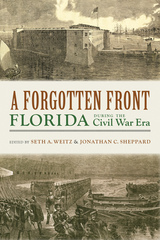 A Forgotten Front: Florida during the Civil War Era
Edited by Seth A. Weitz and Jonathan C. Sheppard
University of Alabama Press, 2018 An examination of the understudied, yet significant role of Florida and its populace during the Civil War.
In many respects Florida remains the forgotten state of the Confederacy. Journalist Horace Greeley once referred to Florida in the Civil War as the “smallest tadpole in the dirty pool of secession.” Although it was the third state to secede, Florida’s small population and meager industrial resources made the state of little strategic importance. Because it was the site of only one major battle, it has, with a few exceptions, been overlooked within the field of Civil War studies.
During the Civil War, more than fifteen thousand Floridians served the Confederacy, a third of which were lost to combat and disease. The Union also drew the service of another twelve hundred white Floridians and more than a thousand free blacks and escaped slaves. Florida had more than eight thousand miles of coastline to defend, and eventually found itself with Confederates holding the interior and Federals occupying the coasts—a tenuous state of affairs for all. Florida’s substantial Hispanic and Catholic populations shaped wartime history in ways unique from many other states. Florida also served as a valuable supplier of cattle, salt, cotton, and other items to the blockaded South.
A Forgotten Front: Florida during the Civil War Era provides a much-needed overview of the Civil War in Florida. Editors Seth A. Weitz and Jonathan C. Sheppard provide insight into a commonly neglected area of Civil War historiography. The essays in this volume examine the most significant military engagements and the guerrilla warfare necessitated by the occupied coastline. Contributors look at the politics of war, beginning with the decade prior to the outbreak of the war through secession and wartime leadership and examine the period through the lenses of race, slavery, women, religion, ethnicity, and historical memory.
The Forgotten Frontier: A History of the Sixteenth-Century Ibero-African Frontier
Andrew C. Hess
University of Chicago Press, 1978 The sixteenth-century Mediterranean witnessed the expansion of both European and Middle Eastern civilizations, under the guises of the Habsburg monarchy and the Ottoman empire. Here, Andrew C. Hess considers the relations between these two dynasties in light of the social, economic, and political affairs at the frontiers between North Africa and the Iberian peninsula.
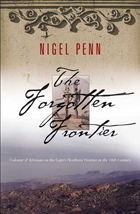 The Forgotten Frontier: Colonist and Khoisan on the Cape's Northern Frontier in the 18th Century
Nigel Penn
Ohio University Press, 2006 A 2007 CHOICE Outstanding Academic Title
Traditionally, the Eastern Cape frontier of South Africa has been regarded as the preeminent contact zone between colonists and the Khoi (“Hottentots”) and San (“Bushmen”). But there was an earlier frontier in which the conflict between Dutch colonists and these indigenous herders and hunters was in many ways more decisive in its outcome, more brutal and violent in its manner, and just as significant in its effects on later South African history.
This was the frontier north of Cape Town, where Dutch settlers began advancing into the interior. By the end of the eighteenth century, the frontier had reached the Orange (Gariep) River. The indigenous Khoisan people, after initial resistance, had been defeated and absorbed as an underclass into the colonial world or else expelled beyond it, to regions where new creole communities emerged.
Nigel Penn is a master storyteller who brings a novelist’s sensitivity to plot and character and a command of the archival record to bear in recovering this epic and forgotten story. Filled with extraordinary personalities and memorable episodes, and set in the often harsh landscape of the Western and Northern Cape, The Forgotten Frontier will appeal both to the general reader and to the student of history.
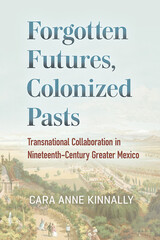 Forgotten Futures, Colonized Pasts: Transnational Collaboration in Nineteenth-Century Greater Mexico
Cara Anne Kinnally
Bucknell University Press, 2019 Forgotten Futures, Colonized Pasts traces the existence of a now largely forgotten history of inter-American alliance-making, transnational community formation, and intercultural collaboration between Mexican and Anglo American elites. This communion between elites was often based upon Mexican elites’ own acceptance and reestablishment of problematic socioeconomic, cultural, and ethno-racial hierarchies that placed them above other groups—the poor, working class, indigenous, or Afro-Mexicans, for example—within their own larger community of Greater Mexico. Using close readings of literary texts, such as novels, diaries, letters, newspapers, political essays, and travel narratives produced by nineteenth-century writers from Greater Mexico, Forgotten Futures, Colonized Pasts brings to light the forgotten imaginings of how elite Mexicans and Mexican Americans defined themselves and their relationship with Spain, Mexico, the United States, and Anglo America in the nineteenth century. These “lost” discourses—long ago written out of official national narratives and discarded as unrealized or impossible avenues for identity and nation formation—reveal the rifts, fractures, violence, and internal colonizations that are a foundational, but little recognized, part of the history and culture of Greater Mexico.
Published by Bucknell University Press. Distributed worldwide by Rutgers University Press.
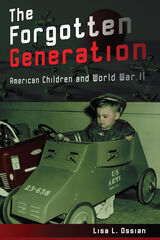 The Forgotten Generation: American Children and World War II
Lisa L. Ossian
University of Missouri Press, 2021 Two days after the attack on Pearl Harbor, President Roosevelt addressed the nation by radio, saying, “We are all in it—all the way. Every single man, woman, and child is a partner in the most tremendous undertaking of our American history.” So began a continuing theme of the World War II years: the challenges of wartime would not be borne by adults alone. Men, women, and children would all be involved in the work of war. The struggles endured by American civilians during the Second World War are well documented, but accounts of the war years have mostly deliberated on the grown-ups’ sacrifices. In The Forgotten Generation: American Children and World War II, Lisa L. Ossian explores the war’s full implications for the lives of children. In thematic chapters, the author delves into children’s experiences of family, school, play, work, and home, uncovering the range of effects the war had on youths of various ethnicities and backgrounds. Since the larger U.S. culture so fervently supported the war effort, adults rarely sheltered children from the realities of the war and the trials of life on the home front. Children listened for news of battles over the radio, labored in munitions factories, and saved money for war bonds. They watched enlisted men—their fathers, uncles, and brothers—leave for duty and worried about the safety of soldiers overseas. They prayed during the D-Day invasion, mourned President Roosevelt’s death, and celebrated on V-J Day . . . all at an age when such sharp events are so difficult to understand. Ossian draws from a multitude of sources, including the writings of 1940s children, to demonstrate the great extent of these young people’s participation in the wartime culture. World War II transformed a generation of youths as no other experience of the twentieth century would, but somehow the children at home during the war—compressed between the “Greatest Generation” and the “Baby Boomers”—slipped into the margins of U.S. history. The Forgotten Generation: American Children and World War II remembers these children and their engagement in “the most tremendous undertaking” that the war effort came to be. By bringing the depth of those experiences to light, Ossian makes a compelling contribution to the literature on American childhood and the research on this remarkable period of U.S. history.
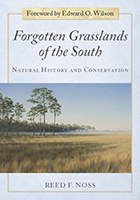 Forgotten Grasslands of the South: Natural History and Conservation
Reed F. Noss
Island Press, 2013 Forgotten Grasslands of the South is a literary and scientific case study of some of the biologically richest and most endangered ecosystems in North America. Eminent ecologist Reed Noss tells the story of how southern grasslands arose and persisted over time and addresses questions that are fundamental for conserving these vital yet poorly understood ecosystems. The author examines: - the natural history of southern grasslands
- their origin and history (geologic, vegetation, and human)
- biological hotspots and endangered ecosystems
- physical determinants of grassland distribution, including ecology, soils, landform, and hydrology fire, herbivores, and ecological interactions.
The final chapter presents a general conservation strategy for southern grasslands, including prioritization, protection, restoration, and management. Also included are examples of ongoing restoration projects, along with a prognosis for the future. In addition to offering fascinating new information about these little-studied ecosystems, Noss demonstrates how natural history is central to the practice of conservation. Natural history has been on a declining trajectory for decades, as theory and experimentation have dominated the field of ecology. Ecologists are coming to realize that these divergent approaches are in fact complementary, and that pursuing them together can bring greater knowledge and understanding of how the natural world works and how we can best conserve it. Forgotten Grasslands of the South explores the overarching importance of ecological processes in maintaining healthy ecosystems, and is the first book of its kind to apply natural history, in a modern, comprehensive sense, to the conservation of biodiversity across a broad region. It sets a new standard for scientific literature and is essential reading not only for those who study and work to conserve the grasslands of the South but also for everyone who is fascinated by the natural world.
 Forgotten Healers: Women and the Pursuit of Health in Late Renaissance Italy
Sharon T. Strocchia
Harvard University Press, 2019 Winner of the Margaret W. Rossiter History of Women in Science Prize
A new history uncovers the crucial role women played in the great transformations of medical science and health care that accompanied the Italian Renaissance.
In Renaissance Italy women played a more central role in providing health care than historians have thus far acknowledged. Women from all walks of life—from household caregivers and nurses to nuns working as apothecaries—drove the Italian medical economy. In convent pharmacies, pox hospitals, girls’ shelters, and homes, women were practitioners and purveyors of knowledge about health and healing, making significant contributions to early modern medicine.
Sharon Strocchia offers a wealth of new evidence about how illness was diagnosed and treated, whether by noblewomen living at court or poor nurses living in hospitals. She finds that women expanded on their roles as health care providers by participating in empirical work and the development of scientific knowledge. Nuns, in particular, were among the most prominent manufacturers and vendors of pharmaceutical products. Their experiments with materials and techniques added greatly to the era’s understanding of medical care. Thanks to their excellence in medicine urban Italian women had greater access to commerce than perhaps any other women in Europe.
Forgotten Healers provides a more accurate picture of the pursuit of health in Renaissance Italy. More broadly, by emphasizing that the frontlines of medical care are often found in the household and other spaces thought of as female, Strocchia encourages us to rethink the history of medicine.
The Forgotten Home Front: Roger Marshutz’s Photographs of Pusan, South Korea, 1952–1954
Sean C. Kim and Ilisa Barbash
Harvard University Press As the Korean war (1950–1953) drew to a close and South Korea began to rebuild, American GI Roger Marshutz (1929–2007) was stationed in Pusan to photograph U.S. reconstruction efforts. In his spare time, Marshutz also wandered the streets, documenting the daily life of Korean civilians.
The Forgotten Home Front: Roger Marshutz’s Photographs of Pusan, South Korea, 1952–1954 offers both an official and unofficial look at U.S.-South Korean relations, as well as a portrait of a country in the midst of enormous political, economic, and cultural transformation.
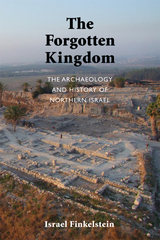 The Forgotten Kingdom: The Archaeology and History of Northern Israel
Israel Finkelstein
SBL Press, 2013
A new understanding of the history of the northern kingdom from 1350 B.C.E. to 720 B.C.E.
Beginning with the Canaanite city-states, through the Saulide dynasty, to the fall of Israel, Finkelstein presents the first comprehensive history of Israel integrating the analysis of more than thirty years of archaeological work with interpretation of ancient Near Eastern and biblical texts. Though Judah dominates the pages of the Hebrew Bible and contemporary studies, Israel dominates here as Finkelstein reveals the glory of the Omride dynasty, outlines how the two kingdoms of Israel and Judah developed parallel to one another, and highlights Israel’s transformation from kingdom to foundational idea.
Features:
- Archaeological analysis of the region of the northern kingdom
- Primary and secondary textual analysis from the ancient Near East and the biblical narrative
- Maps, tables, and images
- Discussion of Israel’s legacy
 The Forgotten Memoir of John Knox: A Year in the Life of a Supreme Court Clerk in FDR's Washington
John Knox
University of Chicago Press, 2002 "My name will survive as long as man survives, because I am writing the greatest diary that has ever been written. I intend to surpass Pepys as a diarist."
When John Frush Knox (1907-1997) wrote these words, he was in the middle of law school, and his attempt at surpassing Pepys—part scrapbook, part social commentary, and part recollection—had already reached 750 pages. His efforts as a chronicler might have landed in a family attic had he not secured an eminent position after graduation as law clerk to Justice James C. McReynolds—arguably one of the most disagreeable justices to sit on the Supreme Court—during the tumultuous year when President Franklin D. Roosevelt tried to "pack" the Court with justices who would approve his New Deal agenda. Knox's memoir instead emerges as a record of one of the most fascinating periods in American history.
The Forgotten Memoir of John Knox—edited by Dennis J. Hutchinson and David J. Garrow—offers a candid, at times naïve, insider's view of the showdown between Roosevelt and the Court that took place in 1937. At the same time, it marvelously portrays a Washington culture now long gone. Although the new Supreme Court building had been open for a year by the time Knox joined McReynolds' staff, most of the justices continued to work from their homes, each supported by a small staff. Knox, the epitome of the overzealous and officious young man, after landing what he believes to be a dream position, continually fears for his job under the notoriously rude (and nakedly racist) justice. But he soon develops close relationships with the justice's two black servants: Harry Parker, the messenger who does "everything but breathe" for the justice, and Mary Diggs, the maid and cook. Together, they plot and sidestep around their employer's idiosyncrasies to keep the household running while history is made in the Court.
A substantial foreword by Dennis Hutchinson and David Garrow sets the stage, and a gallery of period photos of Knox, McReynolds, and other figures of the time gives life to this engaging account, which like no other recaptures life in Washington, D.C., when it was still a genteel southern town.
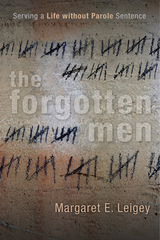 The Forgotten Men: Serving a Life without Parole Sentence
Leigey, Margaret E
Rutgers University Press, 2015 Today there are approximately fifty thousand prisoners in American prisons serving life without parole, having been found guilty of crimes ranging from murder and rape to burglary, carjacking, and drug offences. In The Forgotten Men, criminologist Margaret E. Leigey provides an insightful account of a group of aging inmates imprisoned for at least twenty years, with virtually no chance of release. These men make up one of the most marginalized segments of the contemporary U.S. prison population. Considered too dangerous for rehabilitation, ignored by prison administrators, and overlooked by courts disinclined to review such sentences, these prisoners grow increasingly cut off from family and the outside world. Drawing on in-depth interviews with twenty-five such prisoners, Leigey gives voice to these extremely marginalized inmates and offers a look at how they struggle to cope. She reveals, for instance, that the men believe that permanent incarceration is as inhumane as capital punishment, calling life without parole “the hard death penalty.” Indeed, after serving two decades in prison, some wished that they had received the death penalty instead. Leigey also recounts the ways in which the prisoners attempt to construct meaningful lives inside the bleak environment where they will almost certainly live out their lives.
Every state in the union (except Alaska) has the life-without-parole sentencing option, despite its controversial nature and its staggering cost to the taxpayer. The Forgotten Men provides a much-needed analysis of the policies behind life-without-parole sentencing, arguing that such sentences are overused and lead to serious financial and ethical dilemmas.
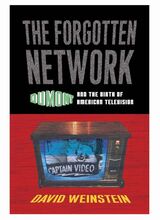 The Forgotten Network: DuMont and the Birth of American Television
David Weinstein
Temple University Press, 2006 During the late 1940s and early 1950s, the name DuMont was synonymous with the new medium of television. Many people first watched TV on DuMont-brand sets, the best receivers money could buy. More viewers enjoyed their first programs on the DuMont network, which was established in 1946. Network founder Allen B. Du Mont became a folk hero for his entrepreneurial spirit in bringing television to the American people. Yet, by 1955, the DuMont network was out of business and its founder and namesake was forced to relinquish control of the company he had spent a quarter century building. The heart of David Weinstein's book examines DuMont's programs and personalities, including Dennis James, Captain Video, Morey Amsterdam, Jackie Gleason and The Honeymooners, Ernie Kovacs, and Rocky King, Detective. Weinstein uses rare kinescopes, archival photographs, exclusive interviews, trade journal articles, and corporate documents to tell the story of a "forgotten network" that helped invent the very business of network television. An original and important contribution to the history of television, The Forgotten Network provides a glimpse into the dawn of broadcasting and the growth of our most ubiquitous cultural medium.
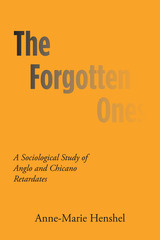 The Forgotten Ones: A Sociological Study of Anglo and Chicano Retardates
By Anne-Marie Henshel
University of Texas Press, 1972 In The Forgotten Ones, originally published in 1972, Anne-Marie Henshel examines the lives of a group of persons living within the community who had been diagnosed at one time or another as mentally retarded. The analysis makes use of three sets of comparisons—Anglo and Chicano, married and single, male and female—and the subjects in each category are analyzed in terms of personal characteristics, employment situation, material possessions, living conditions, family background, social activities, and contacts with “officials”—including the police. In addition, Henshel gives a detailed presentation of the conjugal lives of the married subjects: mutual feelings, marital satisfaction, reproduction, parenthood.
All data were gathered through three in-depth interviews with each subject, at intervals of about three months. In the case of a married respondent, the spouse was interviewed simultaneously, whenever possible, but separately. Interviewer was matched with subject by sex and ethnicity. Although the respondent’s reports were complemented by the interviewer’s perception, emphasis was placed on the individual’s perception of his or her own situation, and the data were analyzed accordingly.
The predominant themes are cultural differences between the two ethnic groups, especially in marriage, the relative superiority of the married over the single, the advantages and disadvantages of the male and the female in view of sex-role norms, and some of the problems with which the respondents are besieged—on the whole, problems very similar to those of other poor people. All-pervasive are social isolation, loneliness, lack of money, deficient education, poor physical appearance, failure in birth-control efforts, the presence of handicapped children, and the need for humane guidance and training.
Suggestions for improving relations with individuals once labeled retardates are presented in the last chapter.
Forgotten Paths: Etymology and the Allegorical Mindset
Davide Del Bello
Catholic University of America Press, 2007 In Forgotten Paths, Davide Del Bello draws on the insights of Giambattista Vico and examines exemplary texts from classical, medieval, and Renaissance culture with the intent to trace the links between etymological and allegorical ways of knowing, writing, thinking, and arguing
The Forgotten Peninsula: A Naturalist in Baja California
Joseph Wood Krutch
University of Arizona Press, 1986 "The author deftly weaves the materials of natural and human history into a radiant, tightly woven fabric. . . . This classic is a book for all seasons—to be reread and savored over the years."—Latin America in Books
"His superb writing style and the timelessness of his subject (the natural world and the interaction of human beings with it) make this every bit as enjoyable today as it was in the 1960's."—Books of the Southwest
"Well-written and fascinating."—Journal of Arid Environments
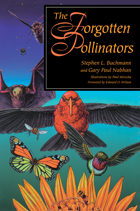 The Forgotten Pollinators
Stephen L. Buchmann and Gary Paul Nabhan
Island Press, 1996 Consider this: Without interaction between animals and flowering plants, the seeds and fruits that make up nearly eighty percent of the human diet would not exist. In The Forgotten Pollinators, Stephen L. Buchmann, one of the world's leading authorities on bees and pollination, and Gary Paul Nabhan, award-winning writer and renowned crop ecologist, explore the vital but little-appreciated relationship between plants and the animals they depend on for reproduction -- bees, beetles, butterflies, hummingbirds, moths, bats, and countless other animals, some widely recognized and other almost unknown. Scenes from around the globe -- examining island flora and fauna on the Galapagos, counting bees in the Panamanian rain forest, witnessing an ancient honey-hunting ritual in Malaysia -- bring to life the hidden relationships between plants and animals, and demonstrate the ways in which human society affects and is affected by those relationships. Buchmann and Nabhan combine vignettes from the field with expository discussions of ecology, botany, and crop science to present a lively and fascinating account of the ecological and cultural context of plant-pollinator relationships. More than any other natural process, plant-pollinator relationships offer vivid examples of the connections between endangered species and threatened habitats. The authors explain how human-induced changes in pollinator populations -- caused by overuse of chemical pesticides, unbridled development, and conversion of natural areas into monocultural cropland-can have a ripple effect on disparate species, ultimately leading to a "cascade of linked extinctions."
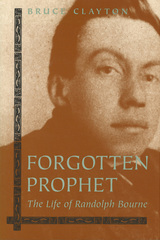 Forgotten Prophet: The Life of Randolph Bourne
Bruce Clayton
University of Missouri Press, 1998 Rarely has an individual's life been so inseparable from his writing as was Randolph Bourne's. His work reveals not only his political viewpoints but also his humanistic personality and the tumultuous era during which he lived. Forgotten Prophet carefully examines the intellect and personality of the "born essayist" who saw clearly both his century's potential for harmony and the danger that it faced from the lingering tides of nineteenth-century European nationalism. Disfigured and hunchbacked, Bourne reacted to his disability not with bitterness or self-pity, but rather with an exuberant love for beauty and a compassion for humanity that created in him a longing for a truly cosmopolitan society—a "trans-national America" that would draw its strength from ethnic diversity and political pluralism. Nearly alone among American intellectuals, Bourne actively denounced involvement in World War I. He foresaw that, beyond the horrible cost in young lives, the war would bring in its wake the spiritual impoverishment of the nation and the disillusionment of its youth; it would strangle reform and social tolerance, exacerbate racism and nativism, and plant the seeds for further international instability. Although derided and largely ignored at the time they were written, Bourne's fearful predictions would all too quickly be confirmed in the dissolute frenzy of the jazz age, the turmoil of the 1930s, and the social chaos that brought about the rise of fascism in Europe and, soon, an even more destructive war. Bourne did not live to witness this terrifying unfolding of events. His career as a social critic was brief but prolific. When he died in 1918 at the age of thirty-two, a victim of the flu epidemic, he had completed three books and more than a hundred essays. His first book, Youth and Life, is considered by some to be the original manifesto of the counterculture. From his earliest years as a writer, Bourne was identified as a voice for youth, idealism, and progress in human relations. Forgotten Prophet characterizes Bourne not just as a foreseer of this century's bloodshed but, equally important, as an apostle of hope—a champion of what was best, most truthful in the arts, in politics, and in the conduct of our daily lives.
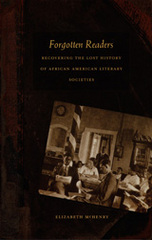 Forgotten Readers: Recovering the Lost History of African American Literary Societies
Elizabeth McHenry
Duke University Press, 2002 Over the past decade the popularity of black writers including E. Lynn Harris and Terry McMillan has been hailed as an indication that an active African American reading public has come into being. Yet this is not a new trend; there is a vibrant history of African American literacy, literary associations, and book clubs. Forgotten Readers reveals that neglected past, looking at the reading practices of free blacks in the antebellum north and among African Americans following the Civil War. It places the black upper and middle classes within American literary history, illustrating how they used reading and literary conversation as a means to assert their civic identities and intervene in the political and literary cultures of the United States from which they were otherwise excluded. Forgotten Readers expands our definition of literacy and urges us to think of literature as broadly as it was conceived of in the nineteenth century. Elizabeth McHenry delves into archival sources, including the records of past literary societies and the unpublished writings of their members. She examines particular literary associations, including the Saturday Nighters of Washington, D.C., whose members included Jean Toomer and Georgia Douglas Johnson. She shows how black literary societies developed, their relationship to the black press, and the ways that African American women’s clubs—which flourished during the 1890s—encouraged literary activity. In an epilogue, McHenry connects this rich tradition of African American interest in books, reading, and literary conversation to contemporary literary phenomena such as Oprah Winfrey’s book club.
 Forgotten Saints: History, Power, and Politics in the Making of Modern Morocco
Sahar Bazzaz
Harvard University Press, 2010 In 1894, on the eve of the French conquest of Morocco, a young Muslim mystic named Muḥammad al-Kattānī decided to abandon his life of asceticism to preach Islamic revival and jihad against the French. Ten years later, al-Kattānī mobilized a socially diverse coalition of Moroccans who called for resistance against French colonization.
In 1909, he met a violent death at the hands of the same Moroccan anti-colonialists he had empowered through his activism. Today, the government of Morocco regards al-Kattānī’s story as subversive, and he has virtually disappeared from the narratives of the early Moroccan anti-colonialism and nationalism. Despite this silencing, al-Kattānī’s remarkable personal transformation and sacrifice is at the heart of the events that, although ultimately failing to prevent French rule, gave birth to Moroccan nationalism and to modern concepts of Moroccan political power and authority.
Forgotten Saints draws on a diverse collection of previously unknown primary sources to narrate the vivid story of al-Kattānī and his virtual disappearance from accounts of modern Moroccan history.
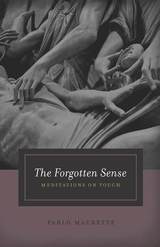 The Forgotten Sense: Meditations on Touch
Pablo Maurette
University of Chicago Press, 2018 Of all the senses, touch is the most ineffable—and the most neglected in Western culture, all but ignored by philosophers and artists over millennia. Yet it is also the sense that links us most intimately to the world around us, from our mother’s caress when we’re born to the gentle lowering of our eyelids after death.
The Forgotten Sense gives touch its due, addressing it in multifarious ways through a series of six essays. Literary in feel, ambitious in conception, admirable in their range of reference and insight, these meditations address questions fundamental to the understanding of touch: What do we mean when we say that an artwork touches us? How does language affect our understanding of touch? Is the skin the deepest part of the human body? Can we philosophize about a kiss? To aid him in answering these questions, Pablo Maurette recruits an impressive roster of cultural figures from throughout history: Homer, Lucretius, Chrétien de Troyes, Melville, Sir Thomas Browne, Knausgaard, Michel Henry and many others help him unfurl the underestimated importance of the sense of touch and tactile experience.
The resulting book is essay writing at its best—exploratory, surprising, dazzling, a reading experience like no other. You will come away from it with a new appreciation of touch, and a new way of understanding our interactions with the world around us.
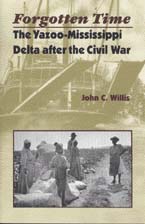 Forgotten Time: The Yazoo-Mississippi Delta after the Civil War
John C. Willis
University of Virginia Press, 2000 Although it came to epitomize the Cotton South in the twentieth century, the Yazoo-Mississippi Delta emerged as a distinct entity in the decades following the Civil War. As other southerners confronted the need to rebuild, the Delta remained mostly wilderness in 1865. Elsewhere, planters struggled to maintain the perquisites of slaveholding and poor families tried desperately to escape the sharecropper's lot, yet Delta landlords offered generous terms to freed people willing to clear and cultivate backcountry acres subject to yellow fever and yearly flooding. By the turn of the century, two-thirds of the region's farmers were African Americans, whose holdings represented great political and economic strength.
Most historical studies of the Delta have either lauded the achievements of its white planters or found its record number of lynchings representative of the worst aspects of the New South. By looking beyond white planters to the region as a whole, John C. Willis uncovers surprising evidence of African-American enterprise, the advantages of tenancy in an unstable cotton market, and the dominance of foreign-born merchants in the area, including many Chinese. Examining the lives of individuals--freedmen, planters, and merchants--Willis explores the reciprocal interests of former slaves and former slaveholders. He shows how, in a cruel irony replicated in other areas of the South, the backbreaking work that African Americans did to clear, settle, and farm the land away from the river made the land ultimately too valuable for them to retain. By the beginning of the twentieth century, the Delta began to devolve back into a stereotypical southern region with African Americans cast back into an impoverished, debt-ridden labor system.
The Yazoo-Mississippi Delta has long been seen as a focal point for the study of Reconstruction, and Forgotten Time enters this historiographical tradition at the same time that it reverses many of its central assumptions.
Reviews
"John C. Willis's moving study of the Mississippi Delta country after the Civil War presents an historical tapestry both inspiring and tragic. With impressive archival command, he reveals that, contrary to longstanding assumptions, hundreds of freedmen acquired thousands of fabulously productive acres in the Delta after the Civil War. By the mid 1890s, however, these landowners fell victim to hostile banks, white chicanery, disastrously low cotton prices, and the failure of a flawed, post-Reconstruction political fusion of wealthy whites and compliant blacks. Willis's canvas is filled with fascinating characters, from Colonel William A. Percy, a fairminded paternalist, to freedman Bohlen Lucs, who defied fate and man to uphold his ideals and property. Forgotten Time reminds us how rich, intellectually exciting, and varied Southern history can be when told with eloquence and sensitivity." --Bertram Wyatt-Brown, University of Florida
"John C. Willis has written a fine study of the postbellum Mississippi Delta plantation economy. By focusing on the years from 1865 to World War I, Willis fills a major gap in the historiographical literature on the development of post-Civil War southern agriculture and the rise of the business plantations at the turn of the century." --Nan Elizabeth Woodruff, Pennsylvania State University
The Author
John C. Willis is Associate Professor of History and Director of the Center for Teaching at the University of the South. He coedited, with Edward L. Ayers, The Edge of the South: Life in Nineteenth-Century Virginia.
Forgotten Towns of Southern New Jersey
Beck, Henry
Rutgers University Press, 1983 Composed, for the most part, from sketches that were published in the Courier-Post newspapers of Camden, New Jersey, Beck provides us with a series of stories of towns too tiny or uncertain for today's maps. Together, these sketches help to create a more complete picture of the history of New Jersey. A connecting skein of untold or little known wartime history--the Revolution, the War of 1812, and the conflict of North against South--runs through most of the sketches. Many of the sketches concern the pine towns and their people, "the pineys" who lived in the Jersey pine barrens.
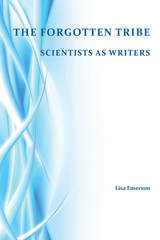 Forgotten Tribe: Scientists as Writers
Lisa Emerson
University Press of Colorado, 2017 In The Forgotten Tribe: Scientists as Writers, Lisa Emerson offers an important corrective to the view that scientists are "poor writers, unnecessarily opaque, not interested in writing, and in need of remediation." She argues that scientists are among "the most sophisticated and flexible writers in the academy, often writing for a wider range of audiences (their immediate disciplinary peers, peers in adjacent fields, a broad scientific audience, industry, and a range of public audiences including social media) than most other faculty." Moreover, she notes, the often collaborative and multidisciplinary nature of their work results in writing practices that "may be more socially complex, and require more articulation, mediation, and interpersonal communication, and more use of advanced media and technology than those of faculty in other disciplines." Drawing on extensive interviews with scientists, Emerson argues that writing scholars have "engaged in a form of cultural appropriation" that has worked against a deeper understanding of the contexts in which scientists work and the considerations they bring to their writing. Emerson grounds her analysis in the voices of scientists in a way that allows us to understand not only how they approach writing but also how we might usefully teach writing in the sciences. The Forgotten Tribe offers a valuable contribution to our understanding of scientific writing, allowing us to hear voices that are seldom included in our discussions of this critical area.
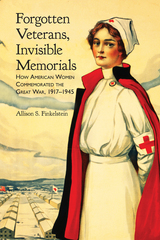 Forgotten Veterans, Invisible Memorials: How American Women Commemorated the Great War, 1917–1945
Allison S. Finkelstein
University of Alabama Press, 2021 Investigates the groundbreaking role American women played in commemorating those who served and sacrificed in World War I
In Forgotten Veterans, Invisible Memorials: How American Women Commemorated the Great War, 1917–1945 Allison S. Finkelstein argues that American women activists considered their own community service and veteran advocacy to be forms of commemoration just as significant and effective as other, more traditional forms of commemoration such as memorials. Finkelstein employs the term “veteranism” to describe these women’s overarching philosophy that supporting, aiding, and caring for those who served needed to be a chief concern of American citizens, civic groups, and the government in the war’s aftermath. However, these women did not express their views solely through their support for veterans of a military service narrowly defined as a group predominantly composed of men and just a few women. Rather, they defined anyone who served or sacrificed during the war, including women like themselves, as veterans.
These women veteranists believed that memorialization projects that centered on the people who served and sacrificed was the most appropriate type of postwar commemoration. They passionately advocated for memorials that could help living veterans and the families of deceased service members at a time when postwar monument construction surged at home and abroad. Finkelstein argues that by rejecting or adapting traditional monuments or by embracing aspects of the living memorial building movement, female veteranists placed the plight of all veterans at the center of their commemoration efforts. Their projects included diverse acts of service and advocacy on behalf of people they considered veterans and their families as they pushed to infuse American memorial traditions with their philosophy. In doing so, these women pioneered a relatively new form of commemoration that impacted American practices of remembrance, encouraging Americans to rethink their approach and provided new definitions of what constitutes a memorial. In the process, they shifted the course of American practices, even though their memorialization methods did not achieve the widespread acceptance they had hoped it would.
Meticulously researched, Forgotten Veterans, Invisible Memorials utilizes little-studied sources and reinterprets more familiar ones. In addition to the words and records of the women themselves, Finkelstein analyzes cultural landscapes and ephemeral projects to reconstruct the evidence of their influence. Readers will come away with a better understanding of how American women supported the military from outside its ranks before they could fully serve from within, principally through action-based methods of commemoration that remain all the more relevant today.
 Forgotten Wars: Freedom and Revolution in Southeast Asia
Christopher Bayly and Tim Harper
Harvard University Press, 2007 In September 1945, after the fall of the atomic bomb--and with it, the Japanese empire--Asia was dominated by the British. Governing a vast crescent of land that stretched from India through Burma and down to Singapore, and with troops occupying the French and Dutch colonies in southern Vietnam and Indonesia, Britain's imperial might had never seemed stronger.
Yet within a few violent years, British power in the region would crumble, and myriad independent nations would struggle into existence. Christopher Bayly and Tim Harper show how World War II never really ended in these ravaged Asian lands but instead continued in bloody civil wars, anti-colonial insurrections, and inter-communal massacres. These years became the most formative in modern Asian history, as Western imperialism vied with nascent nationalist and communist revolutionaries for political control.
Forgotten Wars, a sequel to the authors' acclaimed Forgotten Armies, is a panoramic account of the bitter wars of the end of empire, seen not only through the eyes of the fighters, but also through the personal stories of ordinary people: the poor and bewildered caught up in India's Hindu-Muslim massacres; the peasant farmers ravaged by warfare between British forces and revolutionaries in Malaya; the Burmese minorities devastated by separatist revolt. Throughout, we are given a stunning portrait of societies poised between the hope of independence and the fear of strife. Forgotten Wars vividly brings to life the inescapable conflicts and manifold dramas that shaped today's Asia.
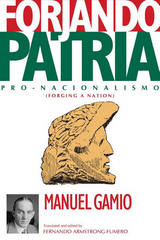 Forjando Patria: Pro-Nacionalismo
Manuel Gamio
University Press of Colorado, 2010 Often considered the father of anthropological studies in Mexico, Manuel Gamio originally published Forjando Patria in 1916. This groundbreaking manifesto for a national anthropology of Mexico summarizes the key issues in the development of anthropology as an academic discipline and the establishment of an active field of cultural politics in Mexico. Written during the upheaval of the Mexican Revolution, the book has now been translated into English for the first time. Armstrong-Fumero's translation allows readers to develop a more nuanced understanding of this foundational work, which is often misrepresented in contemporary critical analyses. As much about national identity as anthropology, this text gives Anglophone readers access to a particular set of topics that have been mentioned extensively in secondary literature but are rarely discussed with a sense of their original context. Forjando Patria also reveals the many textual ambiguities that can lend themselves to different interpretations. The book highlights the history and development of Mexican anthropology and archaeology at a time when scholars in the United States are increasingly recognizing the importance of cross-cultural collaboration with their Mexican colleagues. It will be of interest to anthropologists and archaeologists studying the region, as well as those involved in the history of the discipline.
 Forklore: Recipes and Tales from an American Bistro
Ellen Yin
Temple University Press, 2007 Co-founded in 1997 by Ellen Yin, Fork, a casual but sophisticated restaurant nestled in Old City, has become one of Philadelphia's top dining establishments. The eclectic but distinctly American style of cooking -- influenced by many ethnicities -- is, Yin describes, "New-American bistro-style cuisine." Think pan-seared five-spice dusted chicken livers aside spinach salad with caramelized onions, or braised lamb shank in port wine-orange jus with creamy mashed boniato and sauteed swiss chard. Such are the delicacies Yin has been serving up for the past decade.
Forklore tells the tale of this extraordinary dining establishment, while dishing out some delectable recipes. Yin brings to her writing the same qualities of careful attention and lively enthusiasm that characterize her best dishes. With great gusto, she describes how she fell in love with food, how Fork was born, and how her chefs have helped to create its unique cuisine. And throughout her story she liberally sprinkles recipes -- simple, delicious, and easy to cook at home -- that represent the best of New American Bistro cooking. There are nearly 100 recipes in all, and every one has a story, served up by Yin with relish and delight.
For anyone who likes a juicy story, well seasoned with zesty anecdotes and mouthwatering recipes, Forklore is a treat.
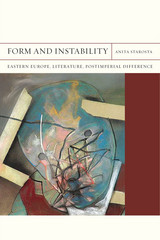 Form and Instability: Eastern Europe, Literature, Postimperial Difference
Anita Starosta
Northwestern University Press, 2015 Form and Instability: Eastern Europe, Literature, and Post-Imperial Difference busies itself with the work of accounting for this discrepancy between ostensible historical change and the persistence of anachronistic ways of thinking, a discrepancy that remains unaddressed and eludes attention; and it goes on to propose that literature—not simply as an archive of representations or a source of cultural capital but as a critical perspective in its own right—offers a way to apprehend and to redress this problem.Historical situations such as the post-1989 transitions to capitalism and liberal democracy, as well as the “Eastern” enlargement of the E.U., not only entail empirical change; they also call for and provoke intense renegotiations of cultural values and analytical concepts. Through rhetoric, reading, and translation—terms central to this book—literature will be seen to expedite and redirect such re-arrangements. It will be shown to destabilize discursively fixed categories without imposing, in turn, its own fixity.
Located at the intersection of comparative literature, area studies, and literary theory, this interdisciplinary study has a twofold commitment: to Eastern Europe on the one hand and to literature on the other. It aims to intervene in the way we conceive of Eastern Europe by seeking to develop a more equitable way of thinking, one that avoids subordinating it to Eurocentric narratives of progress. At the same time, it marshals literature as both object and method of this rethinking, in order to extend existing conceptions of the usefulness and of the proper organization of literary studies. The three terms in the title of this book mark a passage—via literature—from “Eastern Europe” as an inadequate and obsolescent category to “post-imperial difference” as a more accurate, if provisional, account of the region. By way of original readings of particular texts, and by attending to literature as a critical
Form and Meaning in Language: Volume I, Papers on Semantic Roles
Charles Fillmore
CSLI, 2003 The early papers collected here trace a trajectory through the work and thinking of Charles Fillmore over his long and distinguished career—reflecting his desire to make sense of the workings of language in a way that keeps in mind questions of language form, language use, and the conventions linking form, meaning, and practice.
Form and Meaning in Language, Volume II: Papers on Discourse and Pragmatics
Charles J. Fillmore
CSLI, 2020 This volume continues the collection of work by Charles J. Fillmore, which he started in 2003. Taken together, the work gathered in these volumes reflects Fillmore’s desire to make sense of the workings of language in a way that keeps in mind questions of language form, language use, and the conventions linking form, meaning, and practice.
Divided into four parts, the papers collected in Volume II explore language in use; semantics and pragmatics; text and discourse; and language in society.
Form and Meaning in Language, Volume III: Papers on Linguistic Theory and Constructions
Charles J. Fillmore
CSLI, 2020 This volume continues the collection of work by Charles J. Fillmore, which he started in 2003. Taken together, the work gathered in these volumes reflects Fillmore’s desire to make sense of the workings of language in a way that keeps in mind questions of language form, language use, and the conventions linking form, meaning, and practice.
Divided into four parts, the papers collected in Volume III explore the organization of linguistic knowledge; the foundations of constructing grammar; construction grammar analyses; and constructions and language in use.
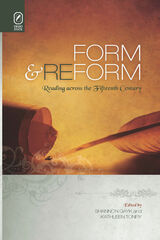 Form and Reform: Reading across the Fifteenth Century
Shannon Gayk and Kathleen Tonry
Ohio State University Press, 2011 Form and Reform: Reading across the Fifteenth Century challenges the idea of any definitive late medieval moment and explores instead the provocatively diverse, notably untidy, and very rich literary culture of the age. These essays from leading medievalists, edited by Shannon Gayk and Kathleen Tonry, both celebrate and complicate the reemergence of the fifteenth century in literary studies. Moreover, this is the first collection to concentrate on the period between 1450 and 1500—the crucial five decades, this volume argues, that must be understood to comprehend the entire century’s engagement with literary form in shifting historical contexts. The three parts of the collection read the categories of form and reform in light of both aesthetic and historical contexts, taking up themes of prose and prosody, generic experimentation, and shifts in literary production. The first section considers how attention to material texts might revise our understanding of form; the second revisits devotional writing within and beyond the context of reform; and the final section plays out different perspectives on the work of John Skelton that each challenge and test notions of the fifteenth century in literary history.
Form and the Art of Theatre
Paul Newell Campbell
University of Wisconsin Press, 1984 This book is an argument for a particular point of view toward theatre, not a summary or survey of dramatic theory and criticism. The argument centers on the concept of form, a concept that is the rock on which all theoretical and critical works are built, or against which they shatter.
Form from Form
Christopher Bolin
University of Iowa Press, 2018 “Was it a crater or a sinkhole?” asks a voice in one of the mysterious, wonderstruck poems in Christopher Bolin’s Form from Form, whose cadences modulate with the energies of form-making, deformation, and elusive reformation. Natural forms and forms of human manufacture, forms of absence and those of urgent desire construct and deconstruct each other in Bolin’s singular music, which blends unnerving plainness and obliqueness, the childlike and the alien. As their sites drift from workers’ camps to city squares, isolated coasts to windswept plains, the poems in Form from Form trace a map of a fragmented ecology, dense with physical detail of altered landscapes and displaced populations. In tones of austere beauty and harsh discordance, these poems provide a “field guide to luminescent things,” a visionary fretwork of the possibilities and impossibilities of faith in the present moment.
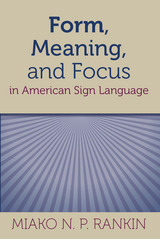 Form, Meaning, and Focus in American Sign Language
Miako N. P. Rankin
Gallaudet University Press, 2013 The meaning of any linguistic expression resides not only in the words, but also in the ways that those words are conveyed. In her new study, Miako N. P. Rankin highlights the crucial interrelatedness of form and meaning at all levels in order to consider specific types of American Sign Language (ASL) expression. In particular, Form, Meaning, and Focus in American Sign Language considers how ASL expresses non-agent focus, similar to the meaning of passive voice in English.
Rankin’s analyses of the form-meaning correspondences of ASL expressions of non-agent focus reveals an underlying pattern that can be traced across sentence and verb types. This pattern produces meanings with various levels of focus on the agent. Rankin has determined in her meticulous study that the pattern of form-meaning characteristic of non-agent focus in ASL is used prolifically in day-to-day language. The recognition of the frequency of this pattern holds implications regarding the acquisition of ASL, the development of curricula for teaching ASL, and the analysis of ASL discourse in effective interpretation.
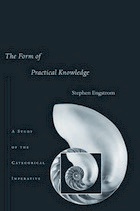 The Form of Practical Knowledge: A Study of the Categorical Imperative
Stephen Engstrom
Harvard University Press, 2009 Immanuel Kant’s claim that the categorical imperative of morality is based in practical reason has long been a source of puzzlement and doubt, even for sympathetic interpreters. Kant’s own explanations, which mainly concern his often-criticized formula of universal law, are laconic and obscure, leading interpreters to dismiss them in favor of less ambitious claims involving his other famous formulas.
In The Form of Practical Knowledge, Stephen Engstrom provides an illuminating new interpretation of the categorical imperative, arguing that we have exaggerated and misconceived Kant’s break with tradition: Kant never departs from the classical conception of practical reason as a capacity for knowledge of the good. His distinctive contribution is the idea that morality’s imperatives express the form of such knowledge.
By developing an account of practical knowledge that situates Kant’s ethics within his broader epistemology and rethinks numerous topics in his moral psychology and in his account of practical reason (including desire, intention, choice, will, as well as pleasure, happiness, and the good), Engstrom’s work promises to deepen and to reshape our understanding of Kantian ethics.
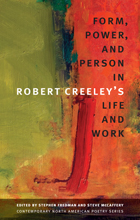 Form, Power, and Person in Robert Creeley’s Life and Work
Stephen Fredman
University of Iowa Press, 2010 By any measure—international reputation, influence upon fellow writers and later generations, number of books published, scholarly and critical attention—Robert Creeley (1926–2005) is a literary giant, an outstanding, irreplaceable poet. For many decades readers have remarked upon the almost harrowing emotional nakedness of Creeley’s writing. In the years since his death, it may be that the disappearance of the writer allows that nakedness to be observed more readily and without embarrassment. Written by the foremost critics of his poetry, Form, Power, and Person in Robert Creeley’s Life and Work is the first book to treat Creeley’s career as a whole. Masterfully edited by Stephen Fredman and Steve McCaffery, the essays in this collection have been gathered into three parts. Those in “Form” consider a variety of characteristic formal qualities that differentiate Creeley from his contemporaries. In “Power,” writers reflect on the pressure exerted by emotions, gender issues, and politics in Creeley’s life and work. In “Person,” Creeley’s unique artistic and psychological project of constructing a person—reflected in his correspondence, teaching, interviews, collaborations, and meditations on the concept of experience—is excavated. While engaging these three major topics, the authors remain, as Creeley does, intent upon the ways such issues appear in language, for Creeley’s nakedness is most conspicuously displayed in his intimate relationship with words. Contributors Charles Altieri Rachel Blau DuPlessis Stephen Fredman Benjamin Friedlander Alan Golding Michael Davidson Steve McCaffery Peter Middleton Marjorie Perloff Peter Quartermain Libbie Rifkin
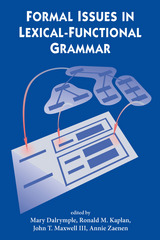 Formal Issues in Lexical-Functional Grammar
Edited by Mary Dalrymple, Ronald M. Kaplan, John Maxwell III, and Annie Zaenen
CSLI, 1994 Lexical-Functional Grammar was first developed by Joan Bresnan and Ronald M. Kaplan in the late 1970s, and was designed to serve as a medium for expressing and explaining important generalisations about the syntax of human languages and thus to serve as a vehicle for independent linguistic research. An equally important goal was to provide a restricted, mathematically tractable notation that could be interpreted by psychologically plausible and computationally efficient processing mechanisms. The formal architecture of LFG provides a simple set of devices for describing the common properties of all human languages and the particular properties of individual languages. This volume presents work conducted over the past several years at the Xerox Palo Alto Research Center, Stanford University, and elsewhere. The different sections link mathematical and computational issues and the analysis of particular linguistic phenomena in areas such as wh-constructions, anaphoric binding, word order and coordination.
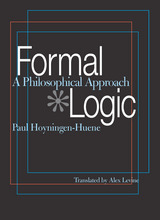 Formal Logic: A Philosophical Approach
Paul Hoyningen-Huene
University of Pittsburgh Press, 2004
Many texts on logic are written with a mathematical emphasis, and focus primarily on the development of a formal apparatus and associated techniques. In other, more philosophical texts, the topic is often presented as an indulgent collection of musings on issues for which technical solutions have long since been devised.
What has been missing until now is an attempt to unite the motives underlying both approaches. Paul Hoyningen-Huene’s Formal Logic seeks to find a balance between the necessity of formal considerations and the importance of full reflection and explanation about the seemingly arbitrary steps that occasionally confound even the most serious student of logic. Alex Levine’s artful translation conveys both the content and style of the German edition. Filled with examples, exercises, and a straightforward look at some of the most common problems in teaching the subject, this work is eminently suitable for the classroom.
|
|

